










Address:
Email:
BY KAYLA WALSH
A Queensland woman has extended her thanks to two truckies who kept her mum safe after she was “harassed” on the road recently.
EDITOR
james.graham@primecreative.com.au
REPORTERS
GENERAL
BUSINESS
Treena
treena.heit@primecreative.com.au
Linda Wilkinson told Big Rigs that her mother Karen was travelling from Stanthorpe to Innisfail in her ute and trailer when a Ford Sedan started driving in an intimidating manner.
“My mother is in her 60s and was helping my sister move house,” she said.
“There was a white Ford Sedan that was tailgating her, then it would overtake her and pull up on the side of the road.
“Then when Mum drove past, the car would pull out behind her again, before overtaking and then putting its indicator on, trying to get her
to pull over.”
Linda said the Ford driver’s behaviour, which started when her mother was travelling through Miles and continued towards Toowoomba, was “very worrying”.
Thankfully, two helpful truckies stepped up to shield Karen’s ute from the car.
“Mum was chatting to two truckies via the UHF and they too were watching this car.
“Mum used to be a truck driver and asked if they could put her in the ‘rocking chair’, so they boxed her in.
“They kept chatting on the UHF and kept her safe all the way through to Toowoomba.”
Karen is not sure of the full names of the drivers, but said their first names are Ray and Peter.
“It was late at night but mum thinks Ray was driving a semi
for Wickham’s,” Linda added.
“She’s not sure about the other truck but it had a ship-
ping container on the back and his name was Peter. “We just wanted to say a
big thank you to them. Well
and keep it sunnyside up.”
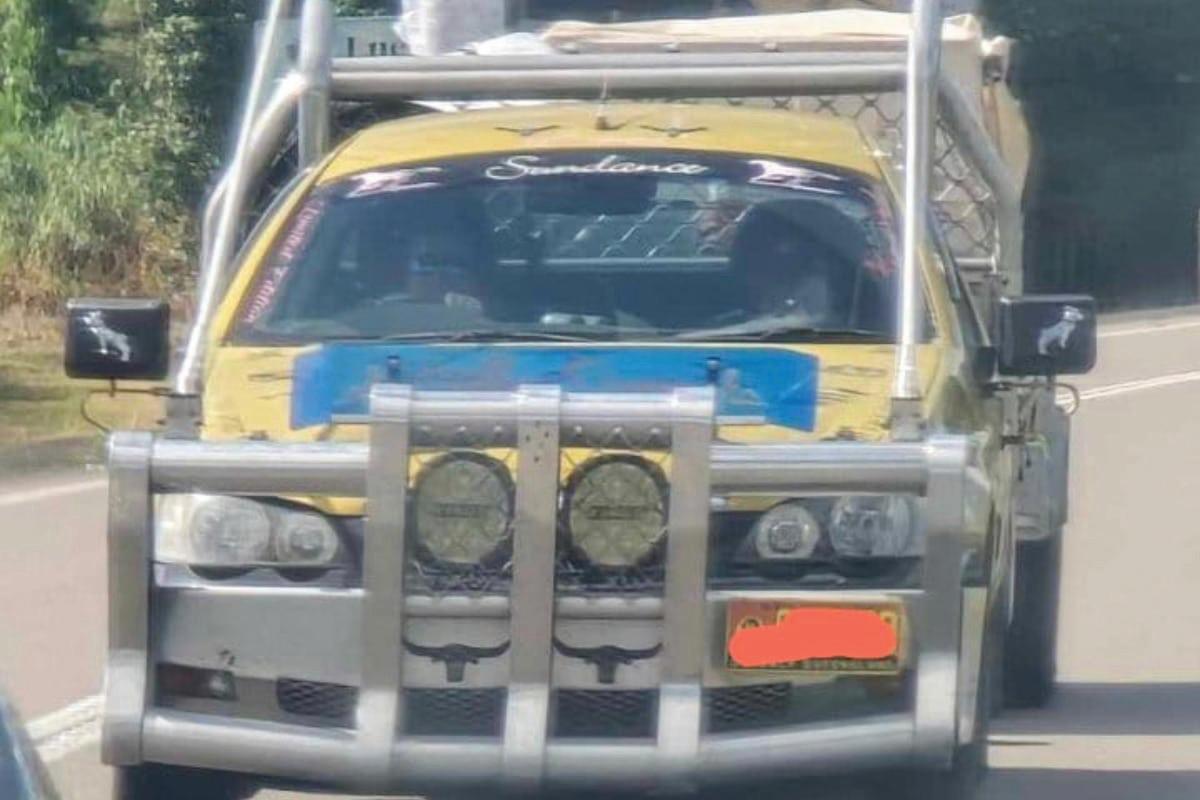
*12
AS part of a $46 million spend to install rumble strips on key regional and rural routes over the next three years, over 100 kilometres have been added to this major highway. The Audio Tactile Line Marking (ATLM) – or rumble strips – are located between Bathurst and Cowra on the Mid-Western Highway.
The idea of rumble strips is to give an audible warning to
the driver if they drift out of their lane.
According to Transport for NSW regional director west Alistair Lunn, these rumble strips are a proven safety treatment in reducing the number of crashes by 15 to 25 per cent.
“The Mid-Western Highway is used by thousands of motorists each day including freight operators and travellers
who are often on long trips,” Lunn said.
“If their vehicle leaves its lane for any reason such as fatigue, distraction or inattention, the rumble strips will cause a vibration effect to alert the driver to correct their path and avoid a serious accident.
“Our crews have been working along this corridor since April 15 installing the ATLM along the edge and centre
lines and have now completed the task, so there’s 147 kilometres of rumble strips between Bathurst and Cowra – a journey of just over 100 kilometres.”
Crews have also been installing rumble strips along hundreds of kilometres through the central and north-west of the state.
Work will soon begin to install more of these on the
Mid-Western Highway between Cowra and West Wyalong, and the Great Western Highway between Mount Victoria and Bathurst.
“Safety is our number one priority and installing ATLM along some of our key regional and rural routes is a proven, effective measure we can apply to increase the likelihood that all of our road users get home safely.”
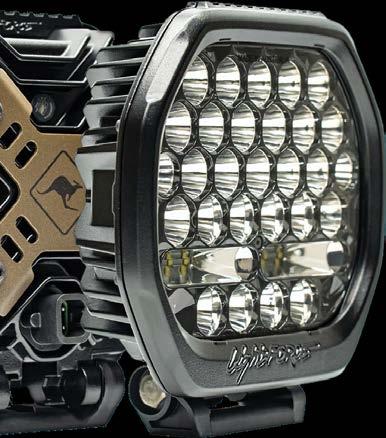


BY DANIELLE GULLACI
FOR well-known truck driver and outback farm owner Danyelle Haigh, a recent health scare has shone further light on the issues those in remote areas face when requiring medical care. Now she’s calling on governments to fix the nation’s broken rural and remote healthcare system.
Danyelle and her husband Anthony Haigh, who many would recognise from popular television show Outback Truckers and more recently their show Outback Farm, moved to a remote 5000-acre property, about 200km north of Alice Springs over two years ago – where their primary business is producing and de-
livering hay for the cattle industry.
That’s all the while continuing to run Murranji Water Drilling, which sees them on the road travelling to some of the most remote locations, together with their two young sons Heath, 10, and Theo, 5. It was around 18 months ago that Danyelle found a small lump in her breast. She was told it was benign but to come back and get it checked if it grew or changed.
A few months ago, she realised that lump had tripled in size, so presented to Alice Springs Hospital – a two-hour drive from home – only to be told it could be months before she could even get an ultrasound or a mammogram, as
a physician would need to be flown in.
“I was actually supposed to get checked again after 6-12 months. But it was such a mission last time that I just put it on the back burner,” she said. With breast cancer running in the family – her grandmother battled breast cancer and had to have a mastectomy – Danyelle didn’t want to take any chances.
Her only option was to fly interstate so she could receive the medical attention she needed.
As she revealed, “I rang my mum pretty upset, because it was quite scary and I didn’t know what to do. I didn’t realise my mum had spoken to Anthony that night and they organised flights for me to the Gold Coast. I saw a GP there a couple of days later, had an ultrasound that afternoon and then a mammogram straight after.”
Danyelle returned home to the Northern Territory while awaiting the results before having to get back on a plane to the Gold Coast to undergo surgery and have tumours removed from both of her breasts.
Thankfully they were benign but turned out to be fast, aggressive tumours. “They take these sorts of tumours out all the time, because eventually they can turn into cancer. It’s
more common than people know. But the early detection is what stops it from turning into breast cancer, whether that be in six months or five years down the track.”
Danyelle says she’s thankful that her husband and her mother pushed so hard for her to go to the Gold Coast to do what was needed for her health. Yet there are many
others who aren’t so lucky. “There are people who can’t afford to go interstate to see a doctor, so they just leave it. And there’s the time factor too that makes it hard for people. With all that’s been going on, we’ve only been out drilling for two weeks of the year so far.”
According to the Cancer Council, a mammogram ev-

ery two years is the best way to detect breast cancer early and improve survival. For people living in remote areas, unfortunately that’s sometimes easier said than done.
“Alice Springs is quite a big town and it’s appalling really that it’s so difficult to get an appointment for something like a mammogram. They don’t have the staff so sometimes they have someone there once a month, sometimes even less – and even then, appointments are really hard to get.”
Along with an ultrasound, mammogram and biopsy, Danyelle used the trip interstate to get her health in check. While there, she says she also had blood tests, a colonoscopy and gastroscopy, which found a large ulcer in her stomach that had been causing issues for months and she discovered she needed a double iron infusion too.
“In remote, rural Australia, the health system is really struggling. They can’t get staff. The closest clinic we have is about 60km away and they have FIFO nurses and doctors. They’re being paid really good money, so the incentive is there, they just can’t get the staff,” added Danyelle.
“Something has to change, because the current government is talking the talk but isn’t walking the walk.”

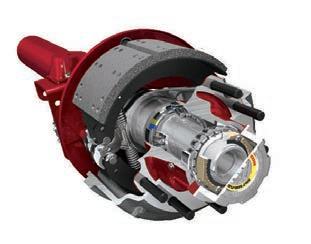

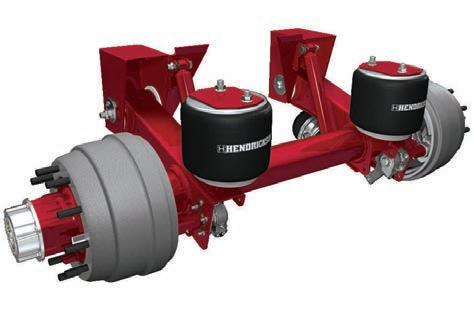


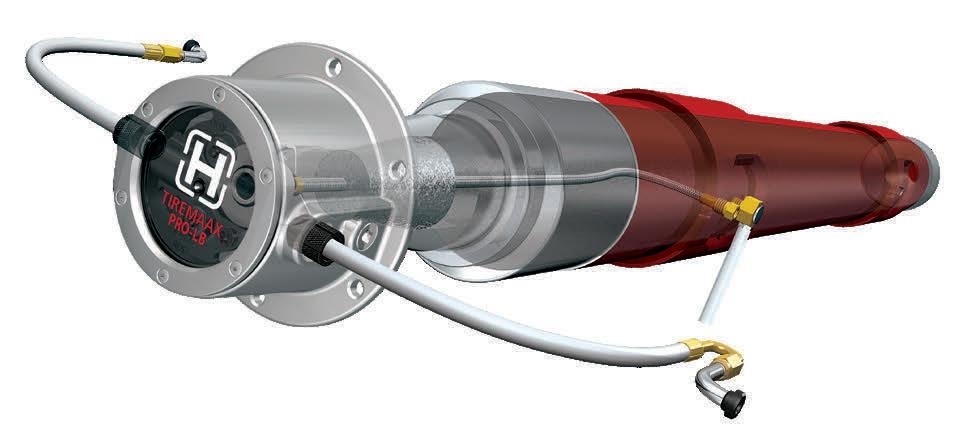

ALTHOUGH the main focus was on record social housing investment, there were still wins for the trucking industry to celebrate in the 2024-25 NSW budget.
One of the features of the spend in the regions was an extra $28.6 million allocated towards building and upgrading 13 heavy vehicle rest stops in the state.
Most of those are still under wraps at deadline for this issue, pending approval from the feds that they would stump up with their share of the builds.
Transport for NSW (TfNSW) could, however, confirm that $2.4 million would be coming from the state as part of its 20 per cent share in the $12 million upgrades to the Tycannah northbound and southbound rest areas that are due to start construction next year.
“The remainder of this NSW budget funding is for future funding submissions under the heavy vehicle rest area program (HVRAP), which would require matching Australian Government contributions,” said a TfNSW spokesperson.
As earlier reported by Big Rigs, Hay is also to benefit from increased rest area investment with a total of $3.8 million allocated to design and construct a new 200m x 70m rest area on the Sturt Highway. There will also be dedicated slip and turning lanes off the Sturt and Cobb highways, creation of a truck parking area with protection for existing services, and adding shelters, landscaping, and connecting footpaths.
The budget also contains $44.5 billion for regional transport and roads, as part of various NSW and Australian Government funded projects, which include:
• $1.4 billion for construction of the M1 to Raymond Terrace extension and Hexham Straight widening projects.
• $1.1 billion to progress Princes Highway projects including construction of the Milton Ulladulla bypass, Jervis Bay Road intersection upgrade and Jervis Bay Road to Hawken Road upgrade.
• $926 million for construction of the Coffs Harbour Bypass.
• $868.4 million for New England Highway upgrades
including construction of the Singleton bypass, planning work for the Goonoo Goonoo Road upgrade in Tamworth and further planning for Muswellbrook Bypass.
• $432.2 million for Newell Highway upgrade projects including construction of the Parkes Bypass and new Dubbo Bridge.
• $216.3 million for planning and early works on the Wyong Town Centre upgrade.
• $200.3 million to complete Great Western Highway upgrades at Medlow Bath and Coxs River Road.
• $138.7 million for safety and reliability improvements on the Barton Highway.
• $35.0 million towards duplication of Nelson Bay Road from Bobs Farm to Williamtown.
• $59.4 million towards continued planning of the Mandalong Road upgrade.
• $47.3 million for the Jindabyne Education Campus project to provide. improved access to the new school facilities for the local community.
• $38.9 million for Tumbi Road Central Coast High-
way intersection upgrade construction.
• $97.5 million to help reduce congestion as part of the Avoca Drive upgrade.
• $36.4 million for safety upgrades on the Bells Line of Road.
• $22.5 million for pavement surface upgrades on Hume Highway at Marulan.
• $21.3 million for safety improvements on Waterfall Way.
• $20.9 million towards widening of the Marshalls Creek bridge in Wagga Wagga.
The budget also contained a further $332.2 million to transform Parkes into a national freight and logistics hub Road Freight NSW (RFNSW) CEO Simon O’Hara said he was pleased with the investment in the M7 and M12 and praised NSW Roads Minister John Graham’s office for assuring that the federal infrastructure spend would continue on those projects.
“Given the pivot of government priorities, roads and infrastructure haven’t been left out either. There are positive aspects to it,” O’Hara said.
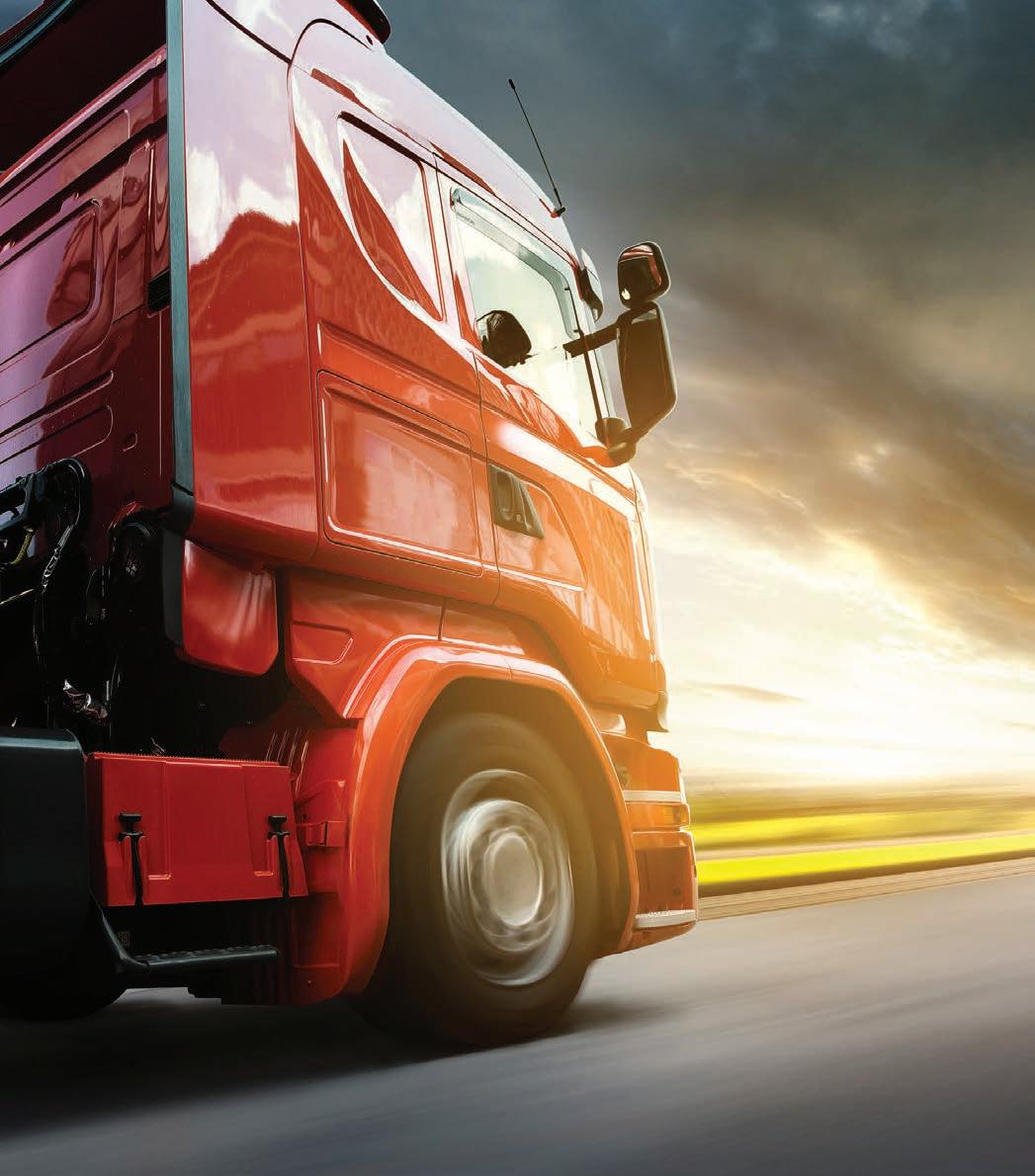

A total of $1.0 billion has been allocated for Sydney roads in 2024-25, bringing the total program to $5.2 billion, including matched funding from the Australian Government.
The program will:
• Upgrade Mamre Road Stage 2 between Erskine Park and Kemps Creek for $1.0 billion.
• Widen Elizabeth Drive with four lanes connecting Mamre Road and The Northern Road to the airport for $800 million.
• Widen Richmond Road –M7 to Townson Road for $520 million.
• Upgrade Garfield Road East for $276.3 million.
• Upgrade Memorial Avenue
• Add a separated four-lane dual carriageway on Mulgoa Road Stage 2 between Glenmore Park and Jeanette Street for $230 million.
• Upgrade the intersection at St Johns Road and Appin Road for $45 million.
O’Hara also welcomed the $5.7 billion for disaster-stricken communities. That includes more than $632.4 million for the Northern Rivers and Central West for funding voluntary buybacks, raisings, repairs and retrofits.
O’Hara was also pleased to see $3.3 billion to fix flood and fire-damaged roads.
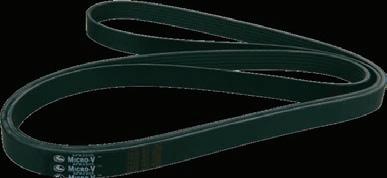
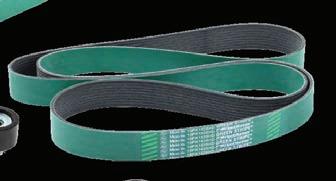
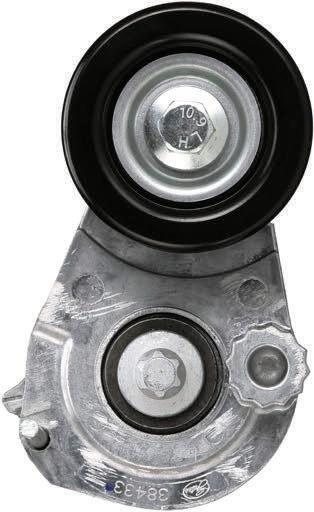



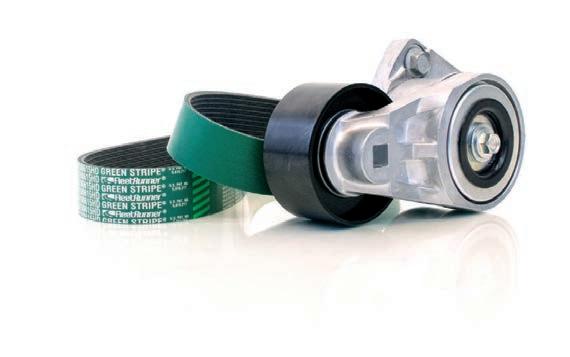

BY KAYLA WALSH
A proposed truck stop on the Warrego Highway at Helidon Spa in Queensland is still on the market, five years after a development application was approved.
Back in 2019, Lockyer Valley Regional Council gave the go-ahead for a service centre with three food drivethrough facilities and an internal restaurant.
The plans also include a large truck parking area and a grassy seating area.
Unfortunately, the development approval has now lapsed, and there hasn’t been any serious interest from a buyer in months.
The real estate agent in charge of the listing, Paul Schmidt-Lee from Ray White Commercial Toowoomba, told Big Rigs: “We’ve been pushing left, right and centre to the larger players in regards to service stations, but nothing has come of it yet.
“You never know though; you can never predict what will happen tomorrow.”
The original developer is said to have pulled out of the project before construction could begin, and SchmidtLee said there was some interest when it initially went on the market.
“There was a little bit of in-
terest but when Covid came along, it went quiet,” he said.
“Then it came back, there was some enquiry on it.
“Moving forward, I think it will be interesting to see what happens come the lat ter part of the year.”
Whoever takes up the project will have to reapply for development approv al, which Schmidt-Lee says could take between six and 12 months.
“What they’ll normally do is put a contract down sub ject to [approval] and then they’ll go away and do their due diligence.
“It normally takes between six and 12 months but that all depends on what they are trying to do, the relation ship with the council and all those type of things that can play out.”
In the years since the Helidon Spa development was approved, several competitor outlets have sprung up in the Lockyer Valley region, including the Mobil service station at Plainland.
However, Schmidt-Lee said that the $2.3m site is still in a prime spot along the Warrego Highway.
“The overall interest in that property is the size and location,” he said.
“There isn’t anything between the likes of Gatton and Toowoomba that would

accommodate that size of development.”
A second proposed truck stop, not too far away, is also showing no signs of progress years after getting the green light.
A mega service centre, complete with service station and shop, five fast food outlets, two cafes/restaurants, a 50-room motel, a truck wash and truck depot/truck parking bay was approved for a site at Haiglsea on the War-
SYDNEY
510 Victoria Street, Wetherill Park NSW 2164 Ph. 02 9756 6199, email: isri@isri.com.au, www.isri.com.au
BRISBANE
rego Highway back in 2019.
“Given the Warrego Highway is a key trucking route this will be an easy stopping point where trucks can access amenities, but also where trucks/trailers can be parked/ stored for extended periods without having these parked by drivers within suburban areas,” the application noted.
“There is parking for caravans as part of the motel. This is to allow people with caravans to stop and stay at
the motel. It is not intended to operate as a caravan park.”
A total of 392 parking spaces had been planned over the entire site, including 25 spots at the proposed truck depot.
Later that year, however, developer EMAAAS Pty Ltd lodged a “minor change” to its application which has not yet been approved by Ipswich City Council.
Ispwich City Council confirmed to Big Rigs that the
development application is still “in progress” five years after it was first approved. At time of press, they could not provide a reason for the delay.
During the pandemic, an extension was granted to development approval, which is now valid until April 30, 2027.
Big Rigs has attempted, without success, to contact EMAAAS Pty Ltd for comment.


3/120 Gardens Drive, Willawong QLD 4110 Ph. 07 3275 2044, email: sales@isribrisbane.com.au, www.isribrisbane.com.au
MELBOURNE
Unit 1/569 Somerville Rd, Sunshine West VIC, 3020 Ph. 03 9311 5544, email: sales@isrisunshine.com.au, www.isri.com.au
MACKAY
110 – 120 Maggiolo Drive, Paget QLD 4740 Ph. 07 4952 1844, email: admin@isrimky.com.au, www.isriseatsmackay.com.au
PERTH
408 Welshpool Rd, Welshpool WA 6106
Ph. 08 9362 6800, email: info@mmtisri.com.au, www.mmtisri.com.au
DARWIN
Mobile Sales and Service
Ph. 08 8927 0986, email: info@isridarwin.com.au, www.isridarwin.com.au
ADELAIDE
TAMDELE, 21 Hakkinen Road, Wingfield SA 5013
Ph. 08 8347 1222, email: sales@gitsham.com.au, www.gitsham.com.au
NEWCASTLE/HUNTER VALLEY
Unit 2/13 Hinkler Ave, Rutherford NSW 2320 Ph 02 4932 0600, email: sales@hvss.com.au www.isri.com.au

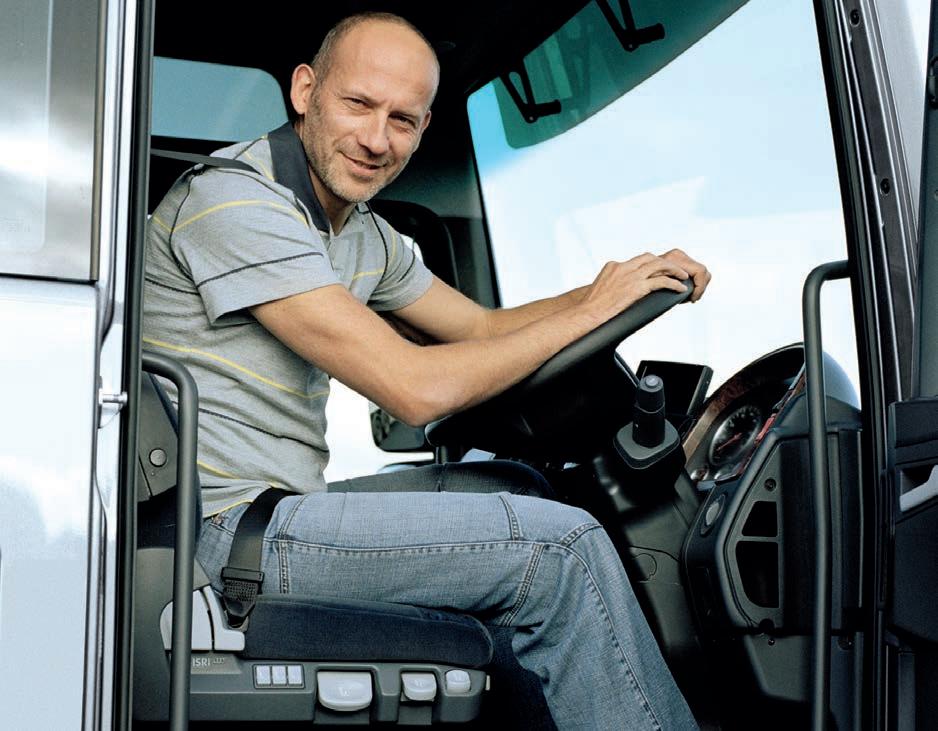











BY KAYLA WALSH
FIXES for a raft of heavy vehicle driver licensing issues plaguing the industry are expected to be debated at the Australian Trucking Association’s General Council meeting this month.
Licensing was a hot topic, along with driver shortages, training issues and unsafe driver behaviour, at the 2024 Workforce and Driver Training Summit, which took place in Melbourne last month in response to growing industry concerns.
ATA’s chief of staff Bill McKinley told Big Rigs he couldn’t reveal what the summit’s “priority outcomes” were before the council had a chance to discuss them on July 10 and offer its solutions.
But Ross Transport driver Joshua Ulbrich, the only current full-time truckie invited to speak at the recent two-day summit, confirmed to Big Rigs that one of the biggest issues brought up by participants was licensing regulation.
“It was suggested that there be more of an in-depth look into people’s background when they come to Australia from
overseas and want to transfer their international licences,” said Ulbrich, the ATA’s 2024 Professional Driver of the Year award winner.
“If you had a truck licence overseas, you shouldn’t automatically be able to drive a truck over here.
“You should have to physically demonstrate that you can drive, that you can restrain a load, that you can reverse a truck and trailer. It all comes down to safety.”
Ulbrich also gave a speech which addressed driver retention and what should be expected from both employers and employees.
“We need employers to be up-front with new employees about everything, from the freight tasks you will be doing to the state of the equipment you have, to what your work week will look like,” he said.
“I think sometimes they skim over these things, and if you want to retain drivers you’ve got to be honest from the start.
“Then on the other side, drivers have got to present themselves well, they’ve got to have a good attitude.
“They don’t necessarily have
to know everything, but they have got to be honest about what skills and experience they have.”
Ulbrich also spoke about how the government can help improve safety in the transport industry and address the driver shortage.
“We need more funded training packages for the industry, whether you want to be a mechanic or a driver or in administration,” he said.
“Some people don’t have the ability to outlay money for training courses, but it is something that they want to do.
“One of the things I suggested was a HECS (Higher Education Contribution Scheme) for those people, where you only have to pay back the loan once you are earning a certain amount.”
He was happy to be invited to the summit, to give his input from a driver’s perspective.
“There were some important people there – the head of Mainfreight, the head of K&S Freighters, the head of Simon’s.
“No matter what company we were from or what experience we had, we were all fighting for the same things.

“These things need to be changed, to make the transport industry a safer and more enticing industry to be part of.”
Steve Broadbent, who was a truckie for 40 years but has recently stepped out from behind the wheel to run his own safety and compliance business with his wife Jodie, gave a speech about safety culture at the summit.
He told Big Rigs: “This industry has changed a lot since I first came into it back in the ‘80s, and the culture has got to change with it.
“We need to drive that culture of safety and make sure all processes are followed, there are no shortcuts, and communication about safety doesn’t get lost between upper management, middle management and the floor
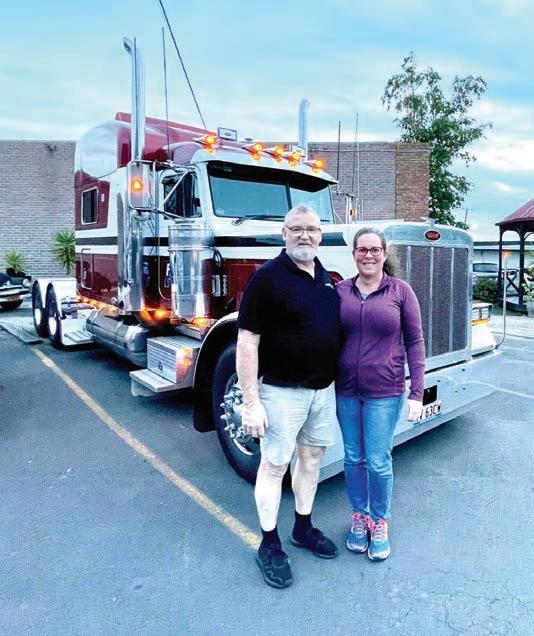
“If you see something that’s wrong, you shouldn’t be frightened to speak up.”
He also shared his thoughts on minimum training hours – a hot button topic at the summit.
“I don’t think the hours required at the moment are anywhere near high enough,” he said.
“I think we should look at the industry and the way they do things themselves and go
from there.
“Simon’s, for example, do 200 hours with their road train drivers.”
Broadbent thought the summit was productive and is looking forward to hearing what the ATA General Council decides.
“There were a lot of good ideas and smart people there, and I think the recommendations are heading in the right direction.”





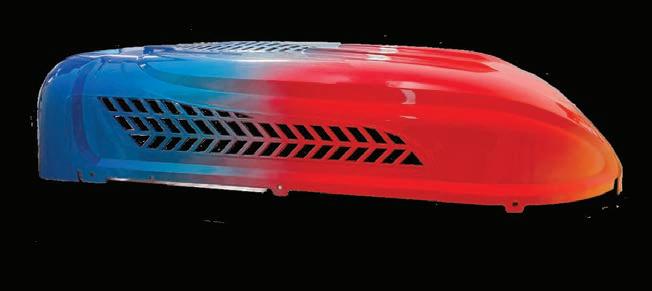



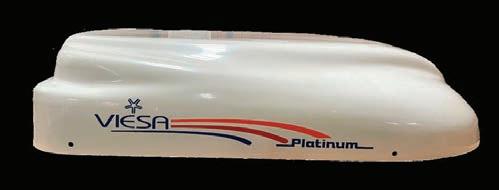


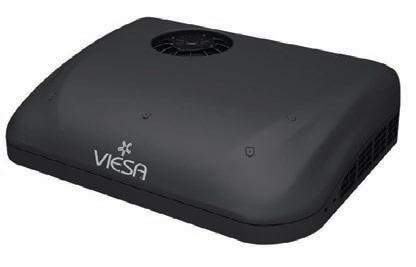



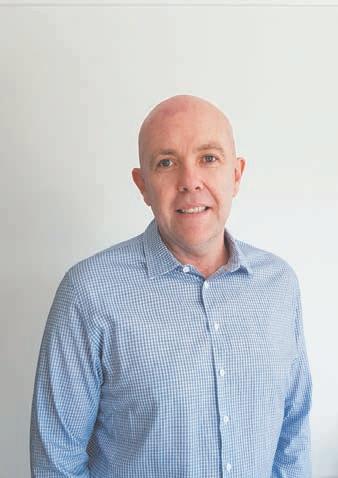
EDITOR JAMES GRAHAM
ration.
Lee spent five days with Jon Kelly and his Heavy Haulage Assets crew as they transported her prized $14 million sculpture from Brisbane to its new home at the National Gallery of Australia in Canberra (see full story on page 12).
To say that Lee was blown away by the professionalism and skills of the crew, is arguably the understatement of the year so far.
In two effusive minutes on Instagram, she did more to change the image of trucking to a non-industry audience than I’ve seen any organisation, or well-funded third-party do in six years in this role.
We need to bottle that up and start a social media campaign using similar messaging with a varity of non-industry faces.

NEWS that the National Heavy Vehicle Regulator (NHVR) would be inspecting approximately 8500 heavy vehicles over 12 weeks – beginning this month – was met with some scepticism from readers.
The checks are being conducted as part of the regulator’s National Roadworthiness Survey, taking about 45 minutes to complete.
Big Rigs reader Graeme Kelly said: “Just another blitz on a transport industry already losing drivers. What other industry would put up with all the fines, the poor
road conditions…”
Roger Develder added: “Fix the bloody roads first. I’m sick of losing hub covers.”
Trent Yendall wrote: “Just a thought, maybe ease up a little bit with handing out fines. Ed
wants to drive now.”
While Kylie McDonald questioned: “How is a 45min inspection going to help truckers with their ‘fatigue’ when they have to remain on work hours for the full 45mins, or longer if the NHVR choose to
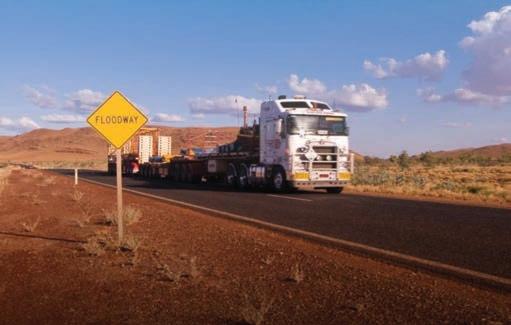
TRANSPORT and Main Roads Queensland has confirmed there will be no amenities provided for truckies at a new rest area being constructed along the Gregory Developmental Road in Queensland.
A revamp of the existing northbound rest area is also in progress, with both areas ready for use within the next six months. However, there will be no toilets, showers, shaded areas or other facilities provided for truck drivers at either rest area –which left readers puzzled.
Leanne Dyer commented, “These politicians and desk jockeys have no idea. It should
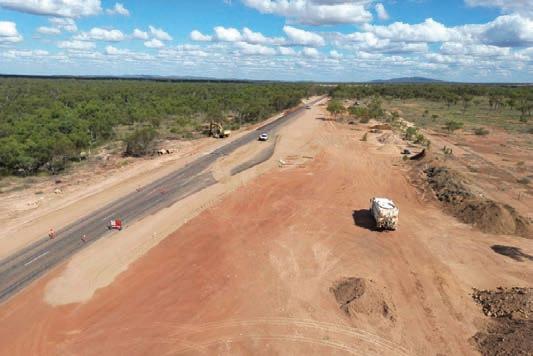
be mandatory that parking bays and heavy vehicle rest areas have a minimum of toilets. Saying there’s a roadhouse nearby is ridiculous.”
Bruce Skelton agreed:
“What a joke. Should take toilets out of parliament house as
McDonald’s down the road has facilities.”
Shane Bills added, “Maybe these pen pushers should venture out into the world of truck driving and see how they like the conditions they have imposed on drivers.”





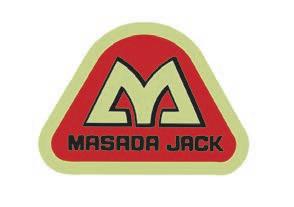
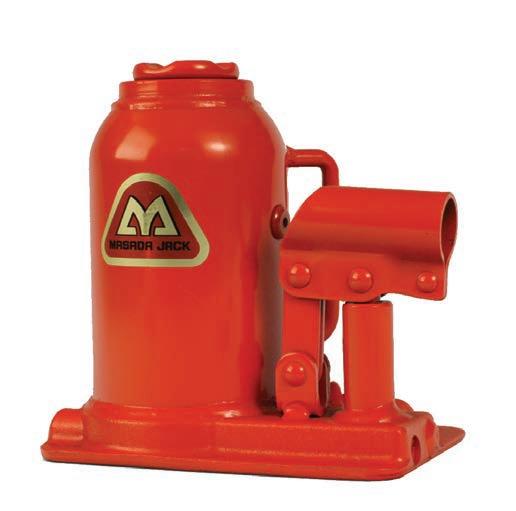


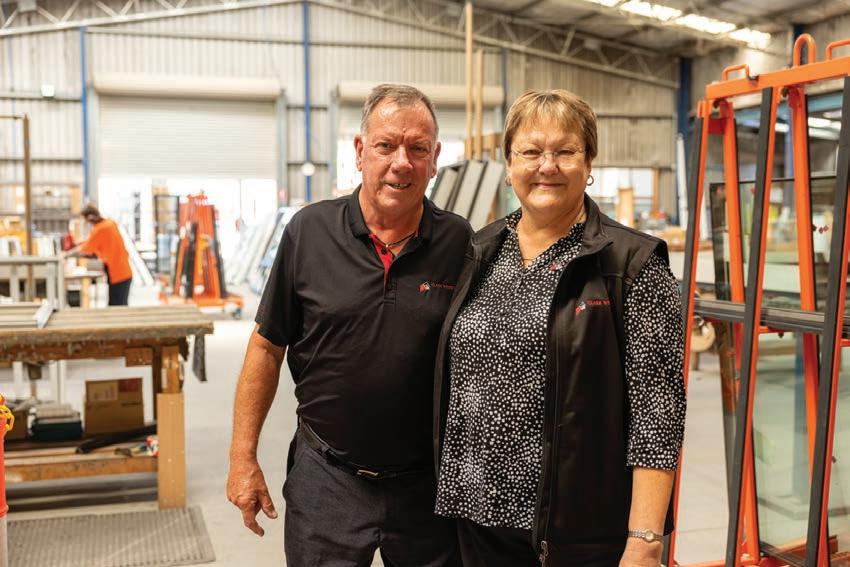
WITH 40 years of success under their belt, the founders of Clark Windows – Craig and Sandra Clark –have called time on their career, ready to hand the reins over to new owners as they step into retirement. Started in 1984, the Tasmanian based company specialises in windows and doors, with a trusty fleet of nine trucks allowing them to offer their services to all parts
of the island state.
From modest beginnings, the past four decades have seen the company transform into a thriving state-wide business that incorporates three factories with showrooms, a loyal
team of staff and a fleet of Isuzu trucks for the company’s transport operations.
Craig and Sandra have a people-first approach, building relationships with their retail and wholesale customers.
Their desire to form strong bonds extends to suppliers, including Webster Trucks, where they purchased their first Isuzu over 20 years ago –an Isuzu NLR 200.
When Clark Windows opened its first manufacturing facility in the coastal town of Smithton, in north-western Tasmania, it was all hands-on deck, with Craig pulling double-duty as director and salesman on the floor.
They now rely on a team of 70 employees and tradespeople to deliver their products and services on time to customers across the state.
Reflecting on those early days in the 80s, Craig says there were many lessons that he’s kept close to his heart. And as his time at the business draws to a close, he’s keen to share some of that wisdom.
“The major factor is that you have to commit to delivering
the product on time,” he said.
“You have to try to make it the best possible quality, and if anything doesn’t turn out absolutely correct, rectify it as fast as possible to keep your customer happy.
“Thankfully we learned the hard lessons early, met the right people, and now we’re proud to produce thousands of windows every year.”
Ensuring those products get to where they’re needed, Clark Windows has a modern fleet of nine medium-duty Isuzu trucks: five FRR 110-240s, an FRR 107-210, an NQR 87190, an NPR 65-190, and an NPR 300.
Each model was chosen for safety and comfort and specified for the task of window and door installation.
“Once we graduated past utes and into trucks, we always went with the Isuzu brand… they’ve never put a foot wrong so there was never any need to go anywhere else,” said Craig.
“The first truck was the NLR 200, then we went with the 300, 450, 500, all the way up to our current fleet.”
Sandra also spoke about the evolution of the fleet. “We can’t believe the difference in comfort over the years,” she said.
“I almost feel like the drivers are almost spoiled these days, which is a good thing as they work so hard!”
The company’s 40-year milestone is a fitting send-off for Craig and Sandra as they reflect on the final stretch of their careers.
They say that all that remains now is a comprehensive handover to the new owners, a pair of brothers who have worked within the company for many years.
“We’re definitely leaving the place in the safest of hands,” assured Craig, a sentiment which is echoed by Sandra.
“There’s so much about the place that we’ll miss – the customer interactions, the people, and the development of our young individuals.
“We’ve had some amazing apprentices turn into long-running employees… We’ve been very lucky that way, it’s been an amazing journey.”
MELBOURNE-based C&C
Express Refrigerated Transport is winding up its operations after 15 years in business.
Owners Craig Griffin and Cam Saddington (C&C) made the announcement on social media in May, but plan to continue to make deliveries until all the equipment is sold off.
“When they sell the last piece of equipment, then they’ll close the doors,” said a source familiar with the Laverton North fleet.
“There are little pieces of the puzzle going every week.”
Craig and Cam built up the business from one “old” exBooth Transport cabover in
2009 to 13 Kenworth prime movers and 19 trailers.
They prided themselves on being the ‘go-to guys’ for chilled and frozen interstate transport to Melbourne, Sydney, Brisbane and Adelaide.
“We have made this decision ourselves and feel now is the perfect time to leave while we are still somewhat on top,” Cam posted on the company Facebook page.
“I am sure the rumour mill has gone into overload already which was to be expected but our drivers and those close to us know the real deal, which is all that matters to us.
“Thank you to everyone that has been a part of this journey
including some great customers, some not so great customers, some awesome guys at Kenworth and Cummins (they know who they are) but most of all our team of awesome drivers.
“We would have nothing if not for the guy’s that drive these things every day and give up so much.”
Big Rigs understands that all the drivers have since found new roles, and been paid their entitlements, but Craig and Cam have not decided where they’ll land next.
Our source told us that the pair are happy with their decision, particularly with the many challenges facing operators today.
“They didn’t want to work for nothing and we’re in hard times at the moment. It’s hard to get drivers, fuel’s up, wages are up, everything’s up. But the customers out there aren’t putting their rates up; if anything they want to put them down.
“They have some of the best rigs on the highway and best maintained, and the way they operate at C&C, people don’t want to pay for that quality anymore.
“They’d rather have a two-dollar shit-heap running up and down the highway with their food in the back and pay nothing to get it done, that’s if it gets done, and they [C&C] don’t want to be part of that.
“They’ve probably got one of the best names in the business on the highway.
“So, while they’re on top of their game, this is how they have decided to finish.”
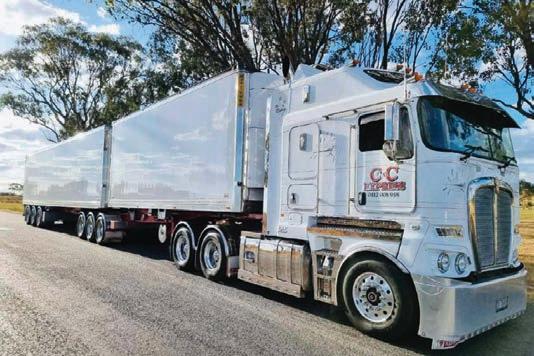




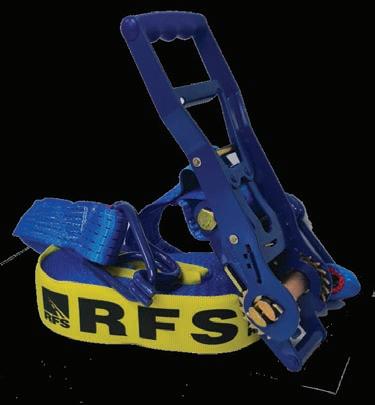
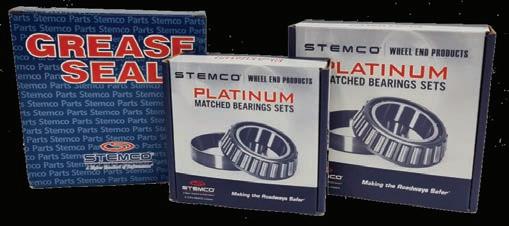
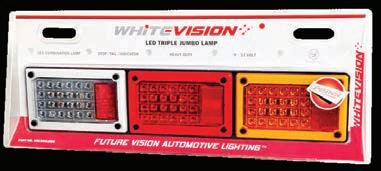
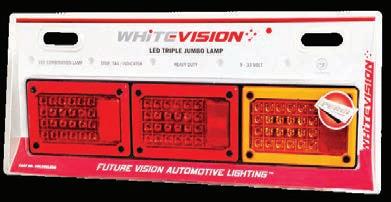
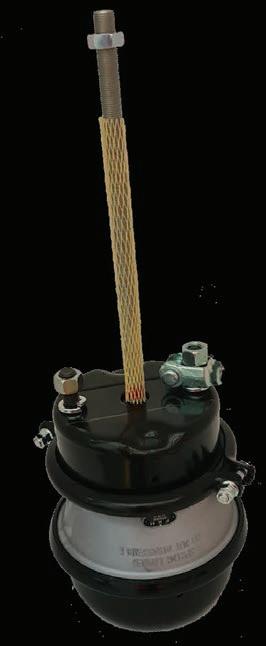



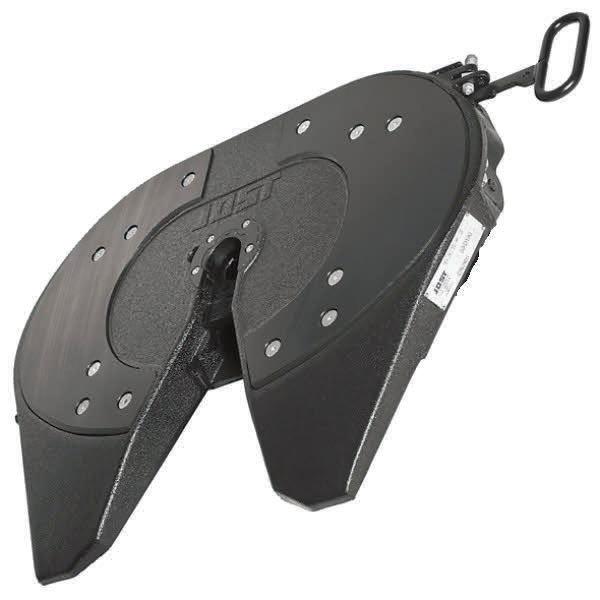


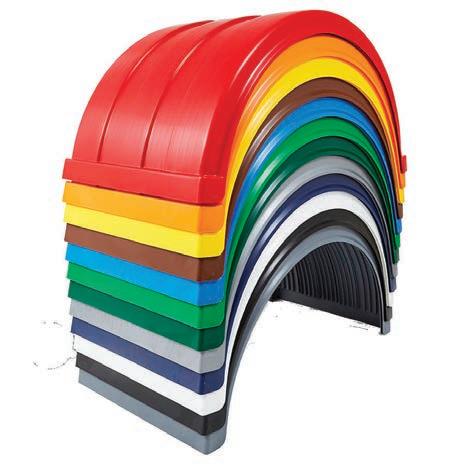


Artist Lindy Lee sings the praises of this elite heavy haulage team after a fiveday journey carrying the biggest load of its kind ever seen on Australian roads.
BY JAMES GRAHAM
LINDY Lee’s new favourite superheroes don’t wear capes – they’re the trucking team responsible for successfully hauling her prized sculpture from Brisbane to the National Gallery of Australia (NGA) in Canberra.
The renowned artist travelled every step of the fiveday, 1200km journey with the 13-tonne Ouroboros, a $14 million immersive sculpture that took her four years to complete and says the trip was one of the highlights of her life.
Thanks to meticulous planning by project boss Jon Kelly, from Heavy Haulage Assets, and the calm-under-pressure skills of his truckies Liam Khan and his dad Ray, and their project pilot, the legendary ‘Nick the Greek’, Lindy’s precious cargo arrived on June 19 without a scratch.
Instagram account.
“Every cliche about them being uncouth louts is wrong, wrong, wrong. They are the salt of the earth. They were so cour teous, caring and kind.
“They were curious about art, life and the universe. We had great chats. And they were so dedicated to the cargo they were carrying. Liam and Nick’s steadiness was stellar.
“It’s been the most amazing trip of my life. You have no idea of the logistics. Liam has to ne gotiate 36 gear changes coming down the range – it’s insane.
“The pilot, Nick the Greek, I’m in love with him. He’s such a gorgeous guy, and oh my god, the skill. I had no idea of the amount of skill there is in all of this.”

The haul, however, wasn’t without its share of “hairy ride” moments that were out of the crew’s control, admits Lindy.

“Truckies are superheroes,” an exuberant Lindy writes on her
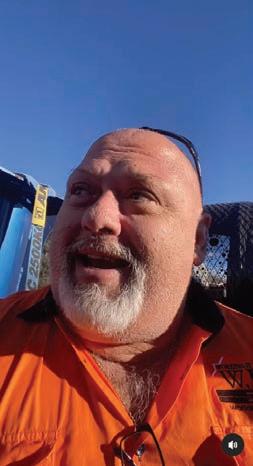

Thick fog grounded the team at Goondiwindi, and Lindy says the winds were so fierce near Dubbo that it was only the “Freddy Mercury” netting that kept the sculpture sheeting in place.
“There were two incidents involving f*cking dickheads,” Lindy adds on Instagram.
“The police had pulled over oncoming traffic to the road shoulder. The idiots decided to queue jump, so they were driving at us at 100km/h, we were driving at 80km/h and we took up both sides of the road.
“It was only Liam’s and Nick’s steadiness that avoided a headlong and fatal collision. Cool as cucumbers. I hope they all make it to the opening in October. I love them so much.”
Jon Kelly tells Big Rigs that you can count on him being in Canberra for the formalities later this year, along with his trucking-mad sons James and Josh, both of whom were on hand to help Dad with logistics out of Brisbane.
Jon has been the brains behind some of the biggest and heaviest loads ever moved on Australian roads.
But the Ouroboros project, commissioned by the NGA to commemorate its 40th anniversary this year, would have to go down as one of his highlights.
“We’re used to doing things of this dimension and they’re between 120- and 200 tonnes so it was nice to do something that was large but not heavy,”
Jon said.
“But it’s not often that we pull an article of this size out of suburbia. It was hard getting it out, and as I always say, the first and last kilometre of the journey is the hardest, and that was very evident with this move.”
Firstly, however, Jon had to convince the UAP (Urban Arts Project) Foundry to let him transport the sculpture in one load.
When they first called to commission Jon for the job, the foundry wanted a price to move it to Canberra in four
separate pieces.
But when the drawing came through of the finished sculp ture, which was 11m long, 8m wide, and 4.5m high, Jon quickly came back to tell them it could be done “holus-bolus”.
“Then they nearly shit them selves. When you’re dealing with people in the art world, they’re very cautious people who haven’t had exposure to transport. I had to go and prove to them at a desk-point level that we could do it.”

advantage. Then we had the ability to lower the cargo to under 5.1m if we had to.”
Even so, there was a fair amount of satisfaction as he watched his crew safely negotiate those final few kilometres through the Canberra CBD.
That involved route surveys, and the massive task of conditional approvals from the National Heavy Vehicle Regulator for a mountain of road permits.
“This was a very, very high stakes, high-profile job, and the job was won before we even loaded the trailer because the hardest part was getting the approvals.
“The final permit went on and on. Canberra gave us some resistance because it’s the largest load to ever come into the Canberra CBD in history and it doesn’t get any more CBD than the National Gallery on King George Terrace, right next to the old Parliament House.”
Choosing the truck was an easy choice – a 2023 Kenworth T659, 155-tonne rated – and so was its driver.
Liam is Jon’s main full-time truck operator. He’s been with Jon for over 10 years and used to be head of his oil and gas division at Heavy Haulage Australia.
“He’s a great operator, super-meticulous, super-professional; he’s just a really good advocate for the transport industry, to be honest.
“His old man Ray [in the back-up truck]; I’ve known him since I was 10 years old. He used to run Darwin for my grandfather [Frank ‘Smiler’ Nilon].
“I never thought that when I met Ray as a kid I’d ever have the opportunity to both employ him and his son.”
With an added drop-bed on the trailer, Jon was able to extend the MTE, five rows of
“I’m very proud of the fact that not only were we successful winning the job, but very successful in delivering a Canberra first and a National Gallery of Australia first, and also a UAP-first, who’s one of the largest art manufacturers in the world.
Ouroboros is based on the ancient image of a snake eating its own tail, and it is the symbol of eternal return, of cycles of birth, death, and renewal.
Located at the entrance of the National Gallery, people will be able enter the ‘mouth’ of the sculpture and walk into the curved space to experience darkness that is illuminated by
“This is their largest commissioned piece of artwork to ever hit the road.
“It was a very interesting to get exposure to the art world. They’re just as passionate as us truckers, so it was really nice to have Lindy Lee travel with us as well.”
Jon thought that being an artist she’d tag along for the first couple of hours, watch the Ouroboros come out of Brisbane and maybe fly to Canberra to reconnect for the last couple
light beams emanating from the hundreds of perforations on its surface.
Lindy said she hopes when people see the sculpture, particularly when they go inside it, they will experience a “deep connection to something which is much larger than just this little, individual body”.
“[I hope it helps people feel] that we are a part
of hours as it crawled to its final resting spot in front of the NGA.
“But she didn’t leave its side. She was 100 per cent there the whole way through. It opened her eyes.
“She fell in love with the crew and said it was the trip of a lifetime and that’s a big deal coming from a person like that.
“She’s seen a lot of things –and done a lot of things – so that’s a massive feather in our cap.”
of this greatness, we’re intrinsic to it as much as this greatness is intrinsic to us,” she said.
“I actually want people to really feel that in their hearts and their souls.”
More than 400 people had worked on the sculpture over 60,000 hours that included 2km of welding and the handcutting of 45,000 holes. It is designed to last for at least 500 years.


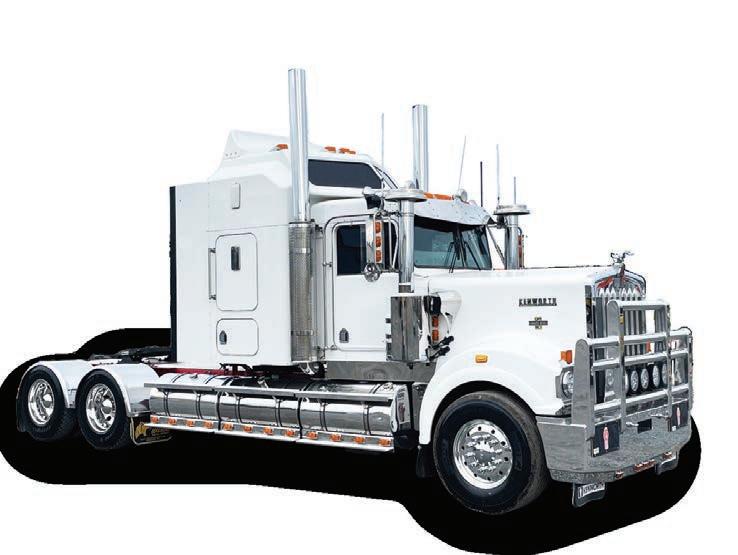
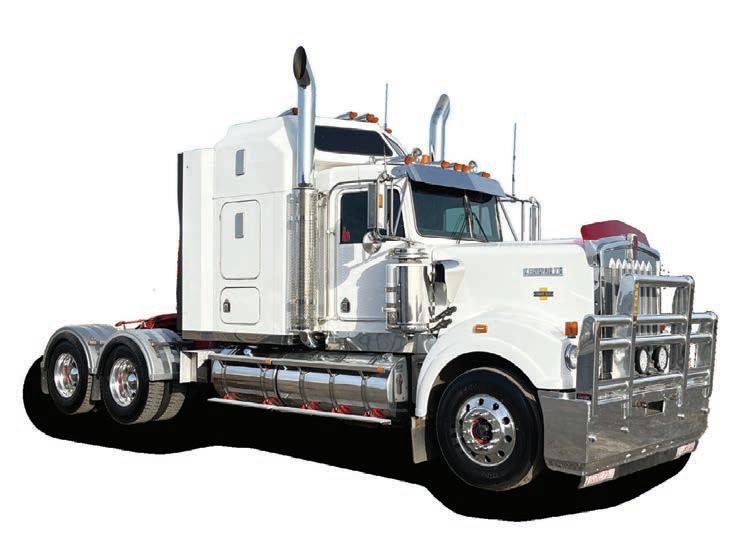

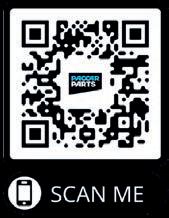


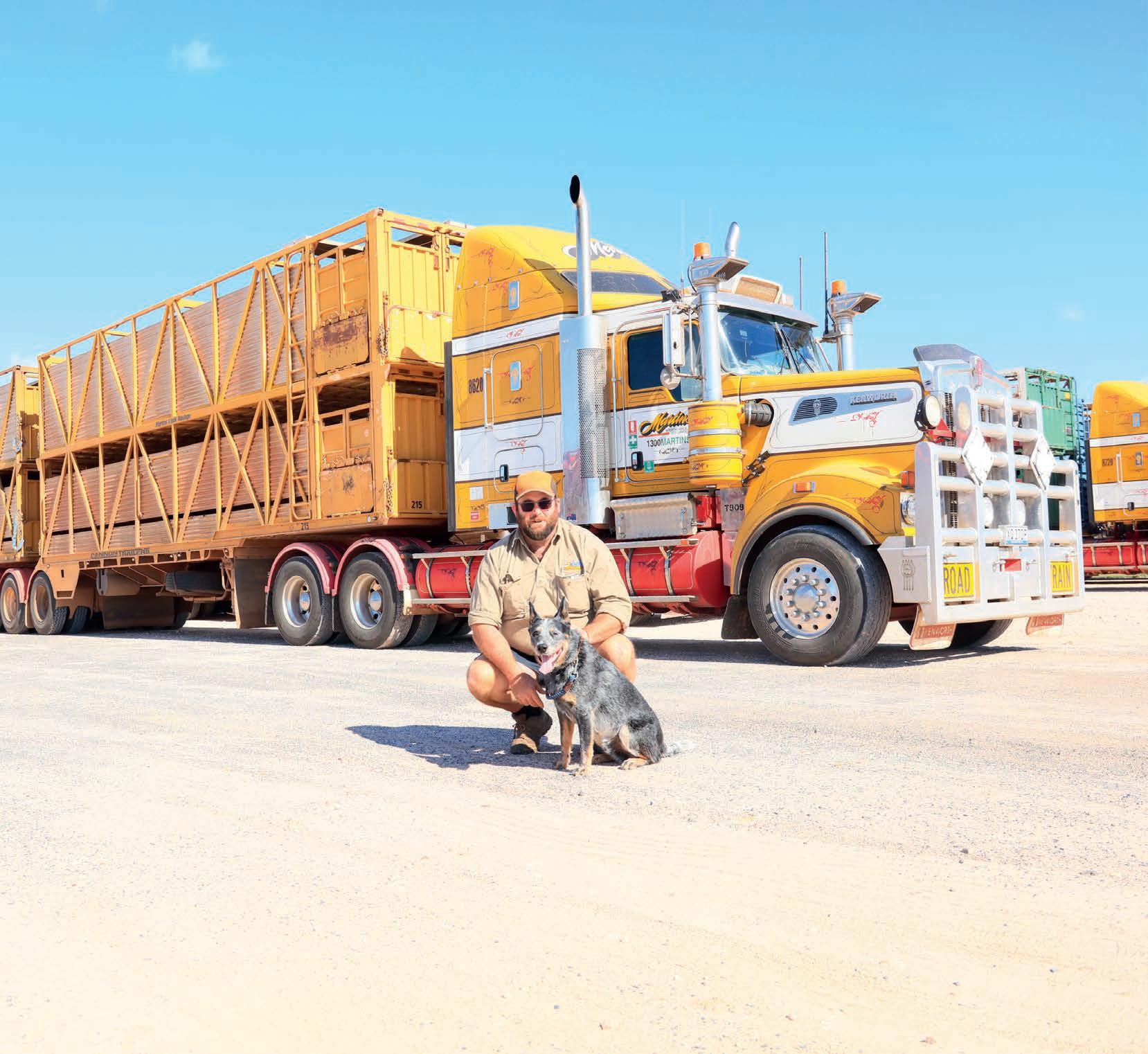

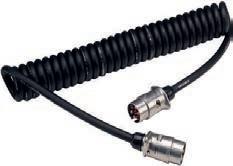
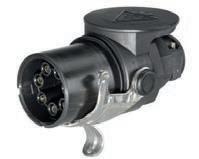
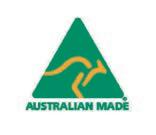

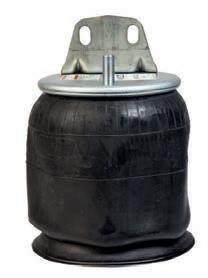

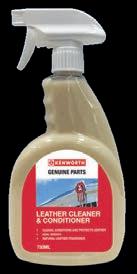

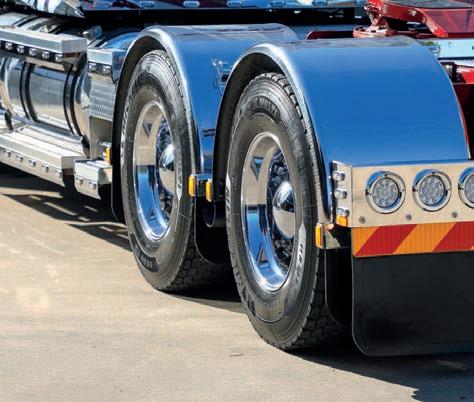
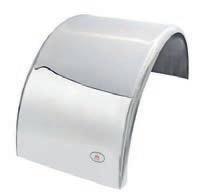
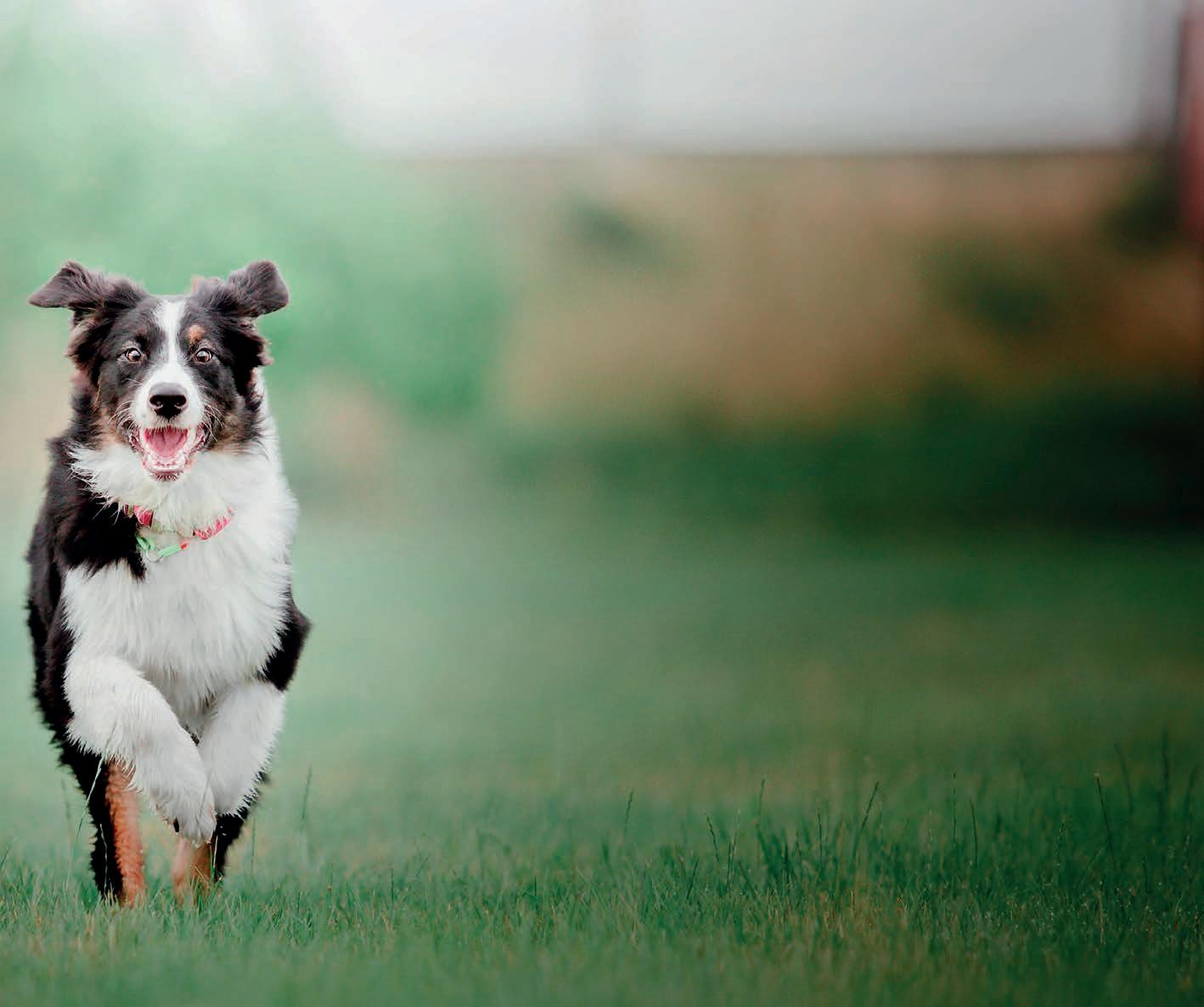


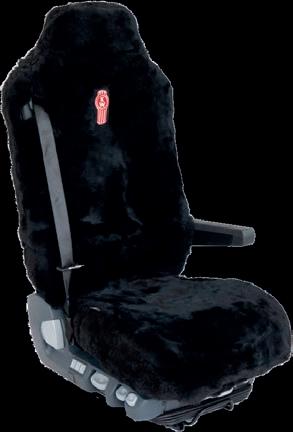




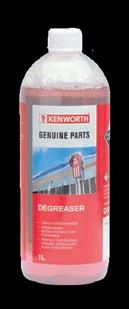
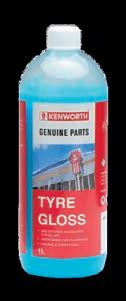


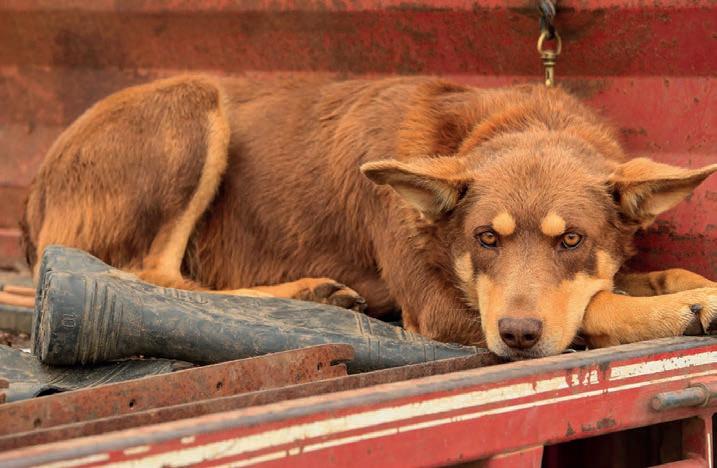

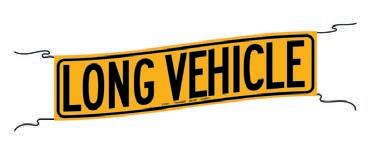




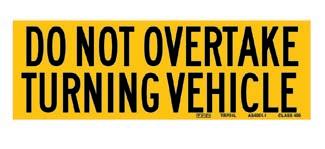

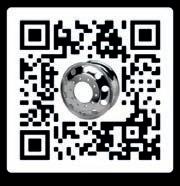
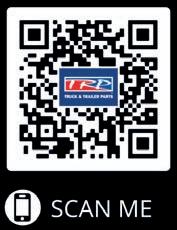
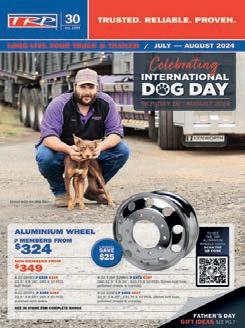
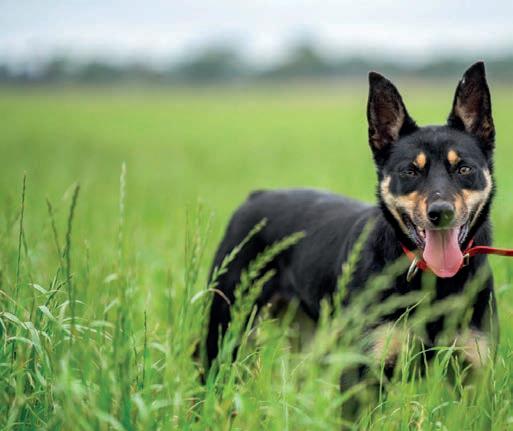



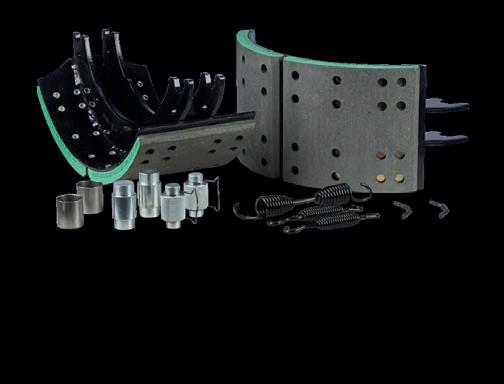




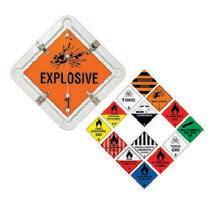
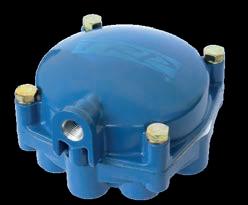
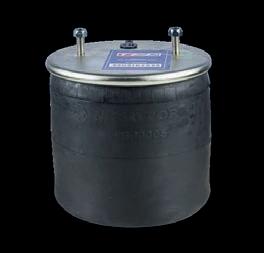
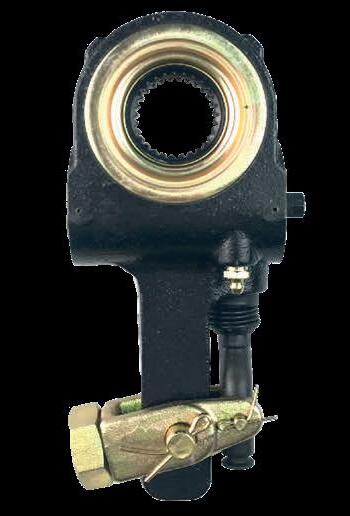
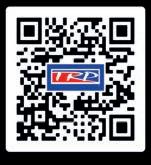
From the humblest of beginnings, Followmont Transport has flourished into one of Australia’s most successful trucking operations.
BY DANIELLE GULLACI
THE story of Followmont Transport started in much the same way as many other transport businesses did, with just the one truck. It was an eight tonne Hino flat top FF. Today that’s grown to a fleet of over 170 prime movers, around 250 rigids, 430 trailers and 181 forklifts operating from its 24 depots – and travelling a combined total of 130,000 kilometres each day.
It was way back in 1984 that Bernie Tobin and Alan Salpietro laid the foundations for this transport success story.
“They started the business off the back of a rail strike. They had just the one truck and drove it from Brisbane to Cairns, delivering magazines to newsagents,” said Mark Tobin, who took the reins as CEO of Followmont in 2013, before purchasing the business together with his brother Ben Tobin in June 2016, to carry on the legacy of their father and his business partner.
“A big thing we always say at Followmont is never forget how we got here. We show and work with respect and that is what drives us forward. My father and Alan worked very hard to build the business up,” Mark added.
“Those first 10 years were really hard work. It wasn’t until about five years in that they were able to construct their first building. Before that they were working from beneath a house.”
Now 48, Mark has been with the business for 33 years, however it’s been part of his life for even longer. “I was only eight years old when they started Followmont. I’d ride my push bike here after school and be in the trucks every weekend. I worked in every aspect of
the business before becoming CEO.”
The house Bernie and Alan originally worked from was located at Stones Corner in Brisbane, before they moved to a depot in Geebung, where the business stayed for many years until moving to the current location at Eagle Farm in 2009, which brought with it exponential growth.
“From there, we just exploded. We’ve done two renovations to double the size, including a massive reno eight years ago. In the last 10 years we’ve had massive growth,” explained Mark.
“I’ve been running the business for 15 years now but it’s the effort dad and Alan put in at the beginning. Their philosophy was that we never don’t move something because the truck isn’t full.
“One of the biggest things I’m proud of is that we still do the small deliveries for the mums and dads. They can drop something off here and we will take it. We have accounts that spend millions with us, and then others that just need something small delivered.
“To this day, our philosophy is all around service to the customer no matter the obstacle. We go to every town in Queensland and New South Wales daily, no matter how big or small it is. At Followmont, we look after each other, your word is your word.”
Of Followmont’s 24 depots, 20 are located in Queensland and four are in New South Wales, ranging from as far north as Cairns all the way down to Sydney.
“We have a number of different revenue streams off the back of that – including 3PL, our specialised logistics business and a large refrigeration
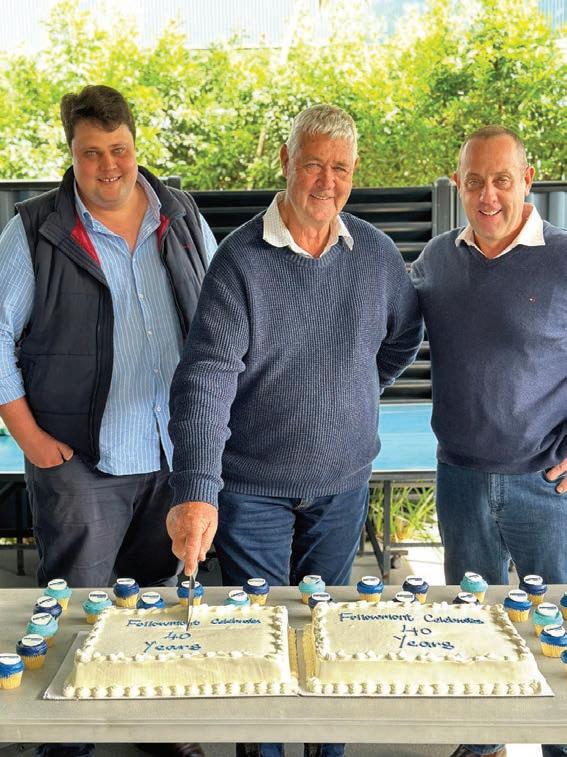
A BIG THING WE ALWAYS SAY AT FOLLOWMONT IS NEVER FORGET HOW WE GOT HERE.” MARK TOBIN
business,” explained Mark.
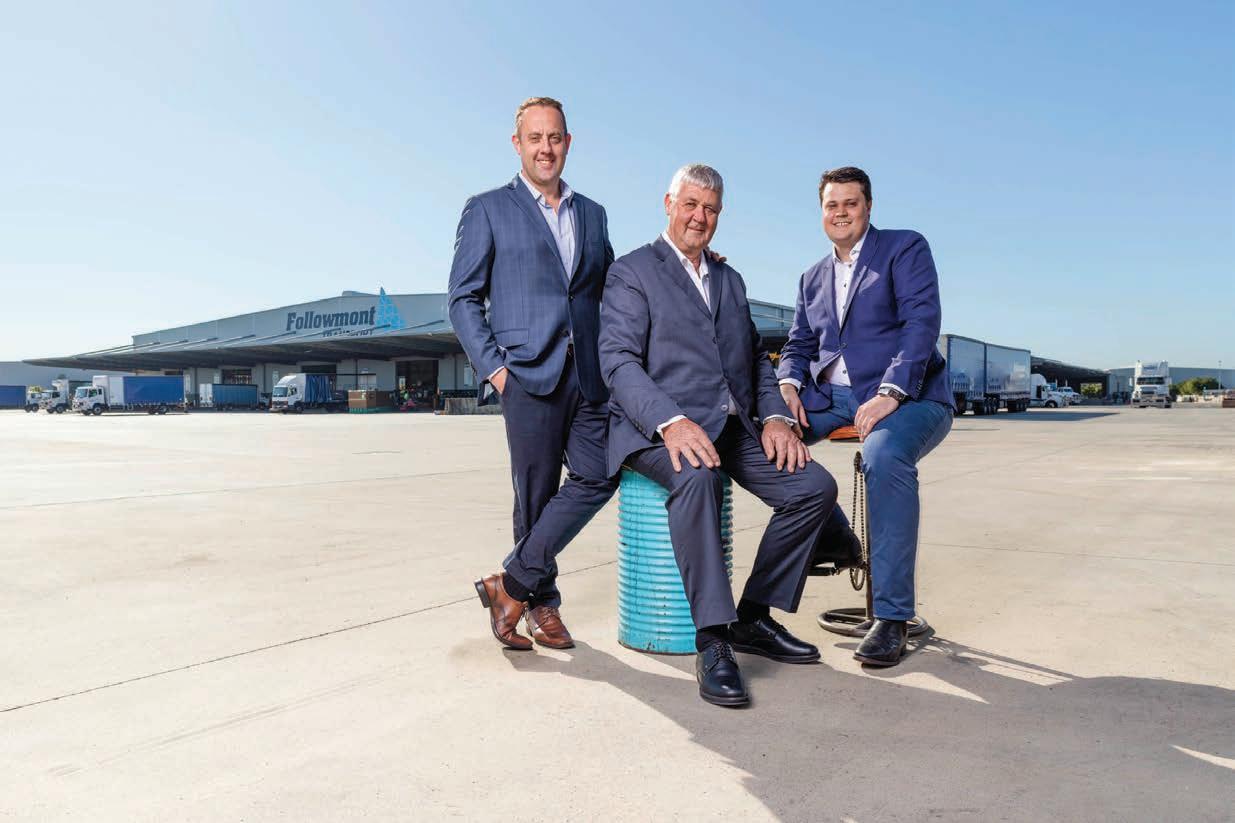
a truck all goes back into the business. That secures us for growth and sustainability.”
Adding to that, Followmont builds all of its own sites through its building arm called Bootooloo Property, which was launched in 2017 –though Mark revealed they’ve been building all of their own depots for the past 20 years. Currently, the company’s property portfolio is valued at approximately $95 million.
“We own everything here – we have all our own workshops, our own sites, trucks and recruit our people, we don’t use many sub-contractors. That means we can con
“From bricks and mortar to workshops and fuel. Everything is in-house.”
Regardless of how big it’s grown, at Followmont, its people have always been at the heart of the business and are what keeps the wheels turning. The company now employs approximately 1000 people.
“It’s been an amazing journey, but at the end of the day we don’t own the business, our people do,” said Mark.
“I’m big around open communication to all people in our business. Everyone knows how we’re going and where we’re heading.
ple, the values and empowerment. I have a very good team around me that I reckon are the best in their fields and our industry.
“Bernie and Alan worked really hard, now I want to get the best out of our people. So we have our own training and development business for our people, a future leadership program and an intern program. That’s all run internally. It gives our people the opportunity to develop and grow.
“It’s about leadership and empowerment and creating a true family business, where we’re using our values in training and development.
flourish. It’s our relationships and values that set us apart from our competitors. One of the main things for our family is that we put a lot of time and effort in making sure that mine and my brother’s relationship is number one. We will not let anything happen to that.
“I’ve had great mentors, but I’ve mostly been self-taught. I’ve really worked hard on leadership and how to be the best version of you. You’ve got to put the business first, the team second and yourself third. You never put yourself first.”
Continued page 18
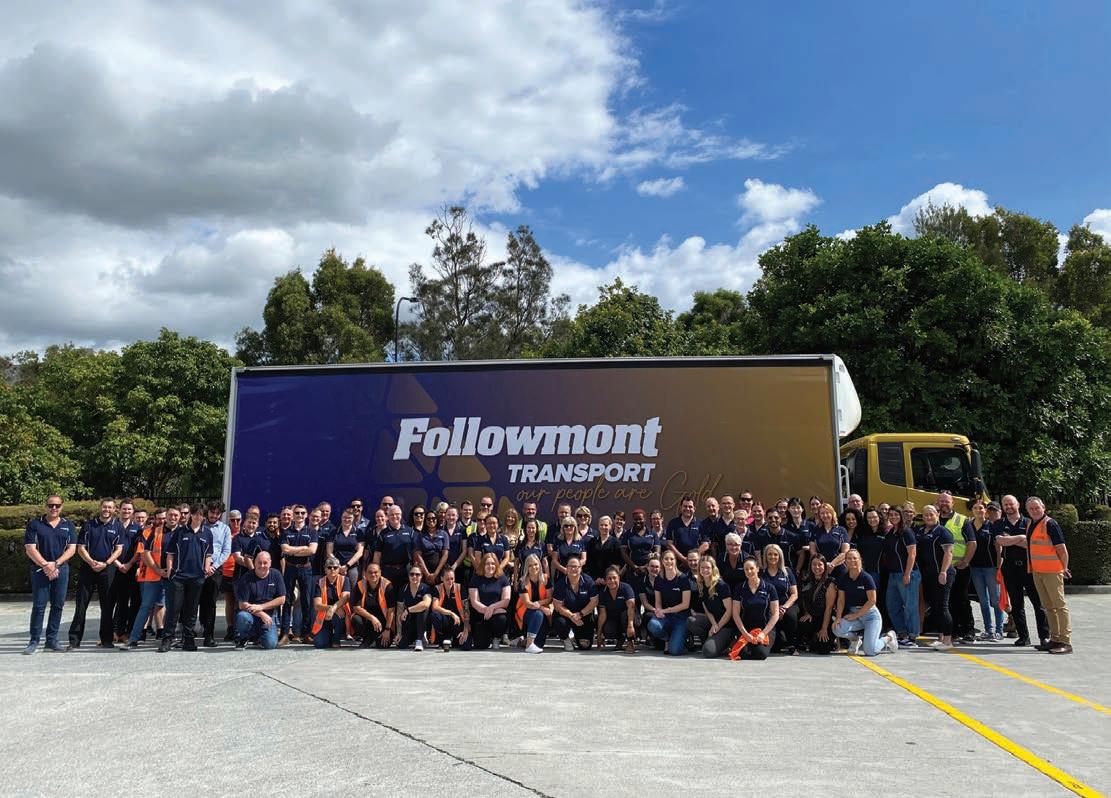
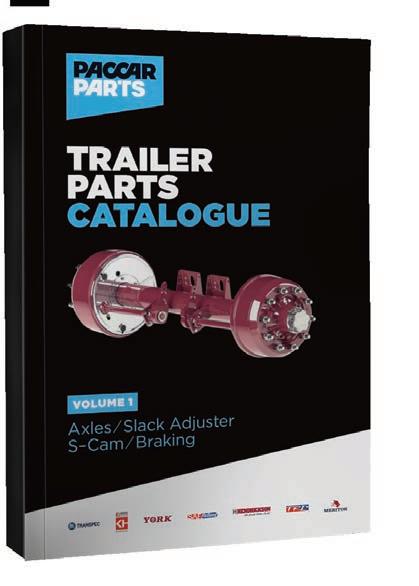




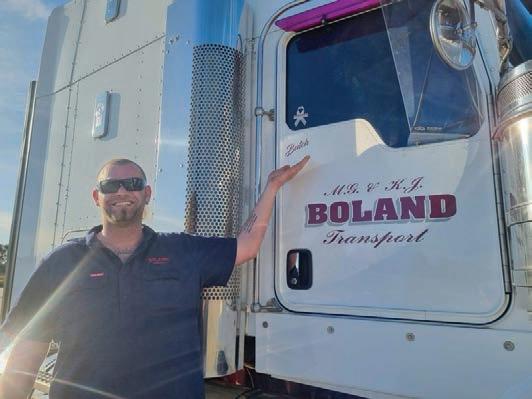
BY KAYLA WALSH
BEN Butch never planned to be TikTok famous, but the interstate truckie now has 100k followers on the social media platform – and counting.
The Wollongong native, 33, said he’s an “idiot” when it comes to technology, but started a TikTok account as part of a bet with a friend two years ago.
“My mate’s partner said to me, ‘Let’s have a competition,’” he told Big Rigs.
“‘We’ll start a TikTok, and the first to get to 1000 followers wins.’
“I didn’t know much about this sort of s**t at all, but she put the app on my phone and away I went anyway.
“I woke up the next morning and I had 5000 followers.
I couldn’t believe it.”
Ben’s content is a mix of funny videos and music, with an impressive singing voice that has won him plenty of fans.
But his page has really blown up in the past few months, since he released his first original song – Highway Addiction.
The tune, which describes
how Ben can never escape the call of the open road, has racked up over 70k views on TikTok and 15,000 streams on Spotify.
“I was at the traffic lights a couple of weeks ago and I could hear this song, so I put my window down,” he said.
“The car next to me was playing Highway Addiction.
“I just wanted to shout out,
‘That’s my song!’
“I just never expected anything like this.”
Ben wrote the country music song about five years ago but didn’t do anything with it until a musically minded friend encouraged him to put it out into the world.
“The song is about being addicted to the highway, and it really is an addiction,” he said.
“Once you’ve had that freedom, you can’t get away from it.”
Ben, who has worked for Boland Transport for the past six years, said he has tried to switch from interstate to local work several times, but he gets itchy feet.
“I’ve got three beautiful children at home and walking away from them is the
hardest thing I have to do every Sunday.
“But at the end of the day, I’m doing it all for my kids.”
Truck drivers make up the majority of Ben’s followers, and he said most of them are supportive – though he does get the odd negative comment.
“You’re always going to get people saying stuff like ‘New age truck drivers make you sick’,” he said.
“I can’t get fuel now without someone saying ‘Hey, you’re that TikTok idiot.’
“I worry that people will think I’m arrogant, but I’m not like that at all.
“Thankfully I don’t get too much hate, it’s mostly positive.”
Ben, who transports steel up and down the East Coast, said he “didn’t care” if no-one ever listened to his song.
This is partly because he just wanted to get it out of his system, and partly because it contains a tribute to someone very special who has passed away.
“The reference to the person who has passed away is very meaningful to me,” he said.
“That person, he ran the highways for 40 years and taught me everything I know.
“I don’t want to name him because the family are quite private, but he was an amazing person who changed my whole outlook on life.
“I hope he would be proud of me now.”
Ben has no ambitions to become a world-famous country music star or influencer.
“I don’t need millions of dollars - I’m happy being a truck driver,” he said.
“I love it and I hate it, and I could never give it up.”
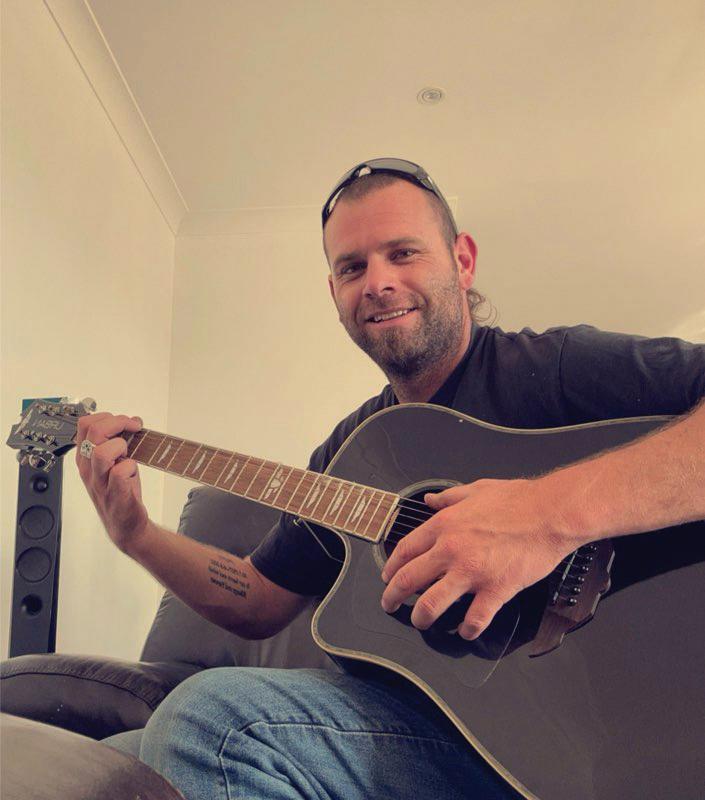
From page 16 acquisition of Bradco Trans-

or so. But my brother
is much younger than me

time yet, he’s already looking well into the future. “I plan to be here another 20 years
32 – so because of that generation gap, Ben is the future of our business.”
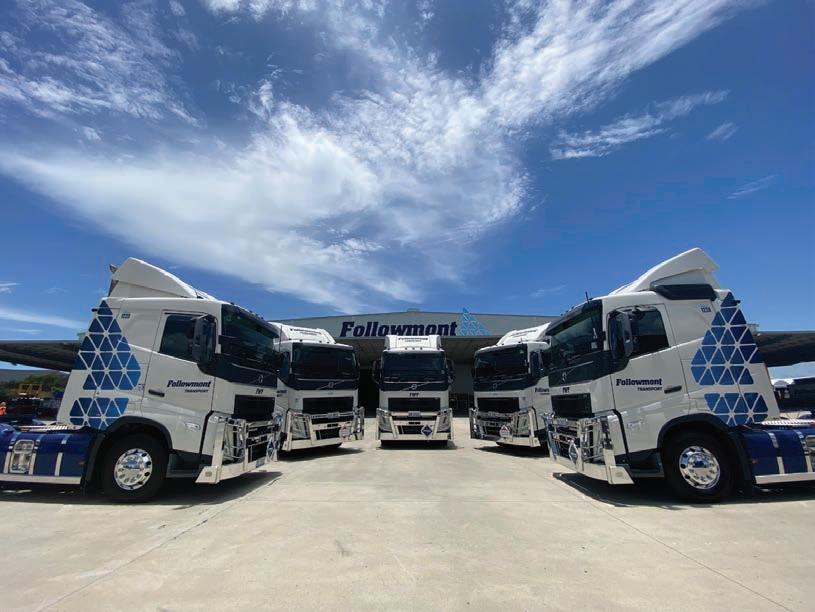

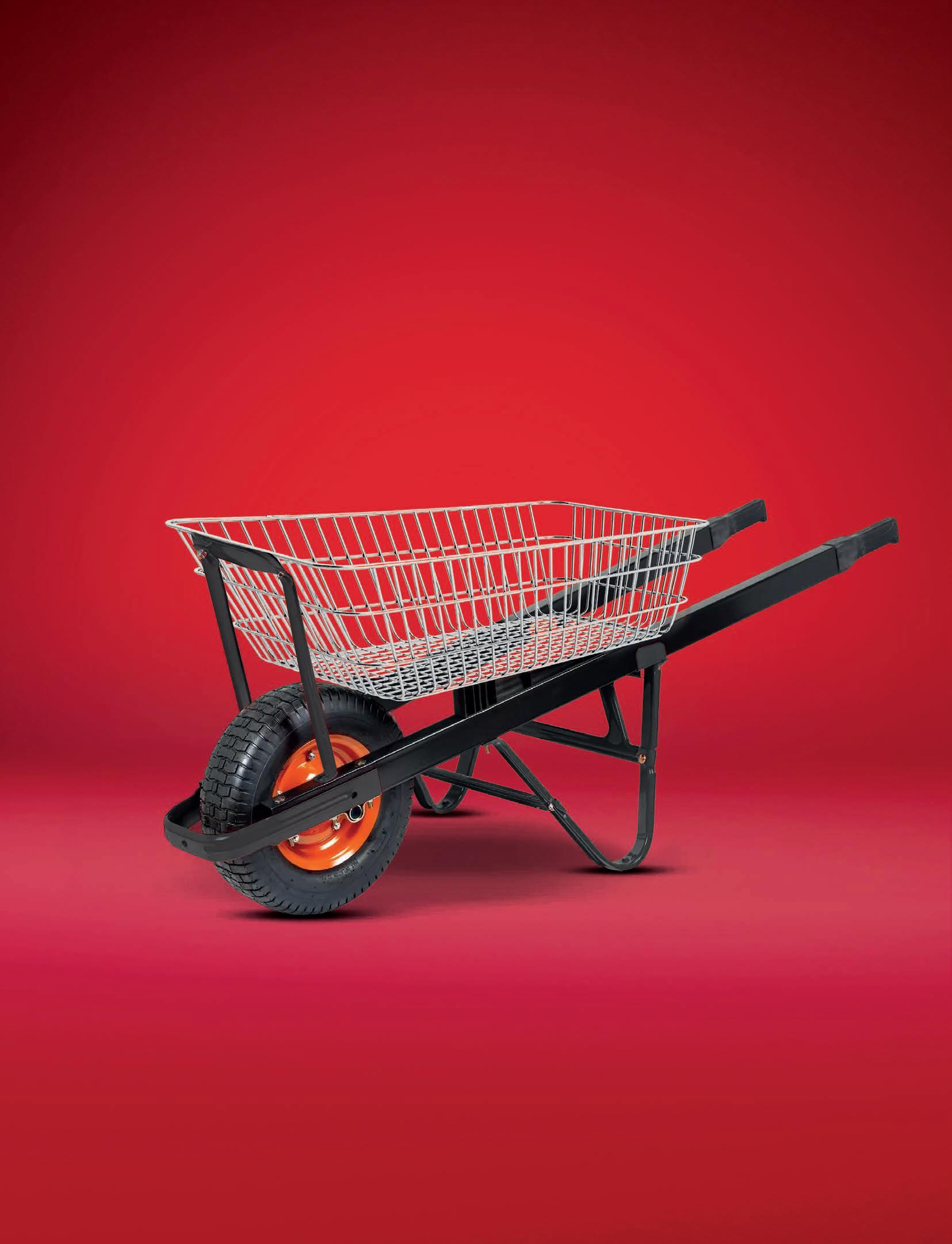

Our writer gets a second chance to take two of Western Star’s X-Series trucks for a spin and is impressed with what he discovers.
BY GRAHAM HARSANT
THE Star is that 1: The X-Series was recently voted Australasian Truck of the Year by industry experts and, 2: Supply lines are now strong, both good rea sons to reacquaint myself with the product.
Western Star had the misfor tune of launching their new range of trucks – the X Series – here in Australia in 2021, as Covid raged around us.
As we all know, this caused world-wide shortages of just about everything and truck supply lines were as much af fected as everything else. At that launch I did a series of quick laps around Mount Cotton, outside Brisbane.
Although the drives were short, I was impressed with the product and the efforts to which Western Star had gone to bring their trucks up to spec, and even surpass some of their competitors.
There are three models in the range: the 47X, 48X (de signed specifically for Austra lia and NZ) and 49X, and all are available in a multitude of specification so I’d suggest going online or talking with a WS dealer to discuss your specific needs.
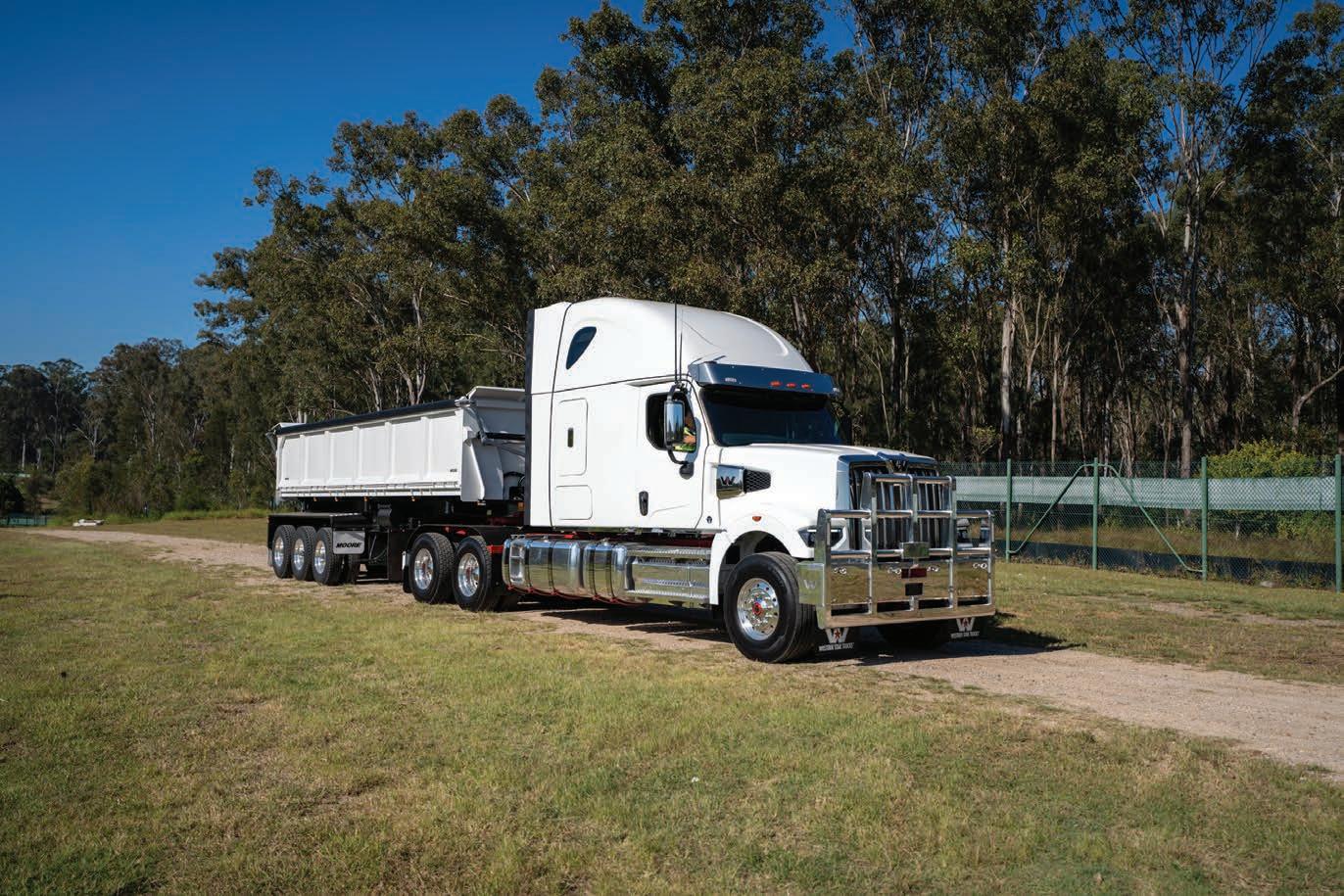
In a nutshell, the 47X with its shorter hood and set back axle gives it a great turning radius. Detroit 13-litre or Cummins 9-litre power is available, along with Auto or manual trannies.
The 48X is 6x4 only, and available with either the Detroit Diesel DD13 or DD16 engines, with power output ranging from 450hp through to 600hp. The model features a set forward axle and suits a range of applications right up to B-double work.
The 49X is the big banger in every respect, from cabin size through to road train application.
This time around I have a full day to play and have chosen the 49X for the morning and the 47X in the arvo, from Papa bear to Baby bear if you will. Not only that but I’ve elected to drive manuals in both versions!
The above exclamation mark is there because in the 15 years I’ve been test driving new truck product (as in prime movers), every one has been an automatic.
The last time I drove a manual was a trip to Sydney to Haulin’ the Hume with a couple of mates some five years ago. I’m a bit nervous that I’ll do an ACL on the clutch, but I’m confident in the knowledge every other truck journo there is in the same boat.
The 49X bonnet is wide but not overly long – certainly

shorter than the Constellation is replaces – so forward vision is good. A big tick to the mirrors on their C mounts. Electrically operated and rock solid. Strong enough to hang off (I did), they offer good vision and are great to see around.
The bonnets are injected resin and use WS’s ISO Tech suspension system to isolate it from the worst road conditions. Strong and lighter by around 45kg, the bonnet can be opened and closed with one hand with secure latches hidden behind the Western Star logos on the flanks.
The front is adorned with Western Star’s new signature, stainless steel grill. The design seems to be a bit polarising, but personally I reckon it looks great. There’s no mistaking this for any other brand.
The DD16 sits high but has everything you should check daily within easy reach. The radiator is huge, sits between the chassis rails and is over 800mm from the ground. If you hit a Roo (and you will) it’s not going to damage the cooler, and you’ll be able to
drag Skippy’s remains out easily.
The cabin is aluminium with steel strengthening in all the right places to make it the toughest and most rigid WS has produced, including extra cross beams in the floor for the Aussie market.
The cab is raised high above the tanks to aid air flow and cooling of both motor and cab. Some may think it looks a bit ‘tacked on’ but I didn’t mind it, and it’s designed like that for good reason.
This 49X has the 72-inch bunk. If you’re doing ‘The Paddock’, or similar, this is the one to have.
There’s enough room to party all night long back there and it’s a breeze to walk past the gear shift protruding from the totally flat floor, which interestingly was covered in squishy thick rubber, like those mats made for standing on all day.
I loved the feel and no doubt it adds to the effective isolation of engine noise from the cabin. There’s everything back there to provide for week/s
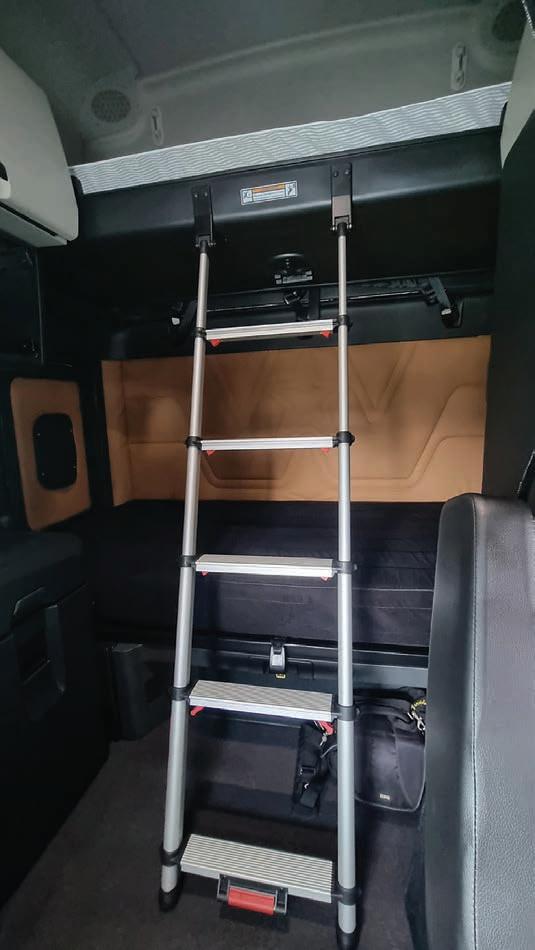
lice siren goes off. In front of you is an American-style dash layout with lots of dials and room for plenty more.
The rows of switches are all plug and play, so you can move the most commonly used to a favoured position.
away from home. Shut the door, and then shut it again because the triple rubber sealing around it is so airtight that I reckon this truck would float if you ran it into a dam.
You’ll know if it’s not shut properly because a warning that sounds like a German Po-
Western Star, by their own admission had a bit of catching up to do on the safety front and the X Series is now right up there with the best of them. It’s got ABS, EBS, Lane Departure Warning and every other safety device out there.
Time to drive and I snick the shift into first and idle away. Thankfully the clutch is light so the ACL remains intact.
From a shaky start and tak-
ing a few burrs off the cogs to make life easier for the next journo, I soon get used to the ubiquitous 18-speed Road Ranger and am having a lot of fun.
For me, if I was a professional and had to do a lot of the city/suburban driving I’d go for the Detroit DT12 Auto, which I know to be a terrific ‘box, but here at ‘Playschool’ I’m loving renewing the acquaintance with a manual.
This is an easy truck to drive and, although set up for the heaviest applications – and me with only a single trailer behind me - the ride is very comfortable.
Continued on page 22
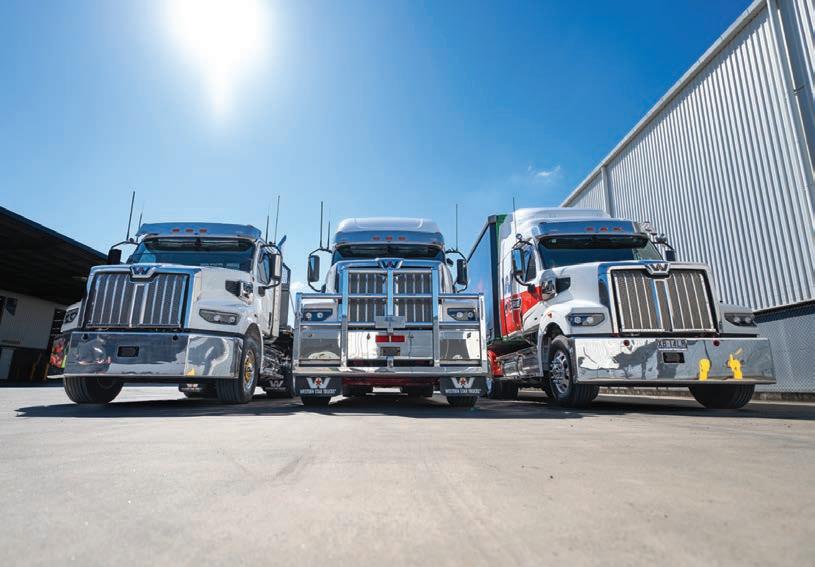
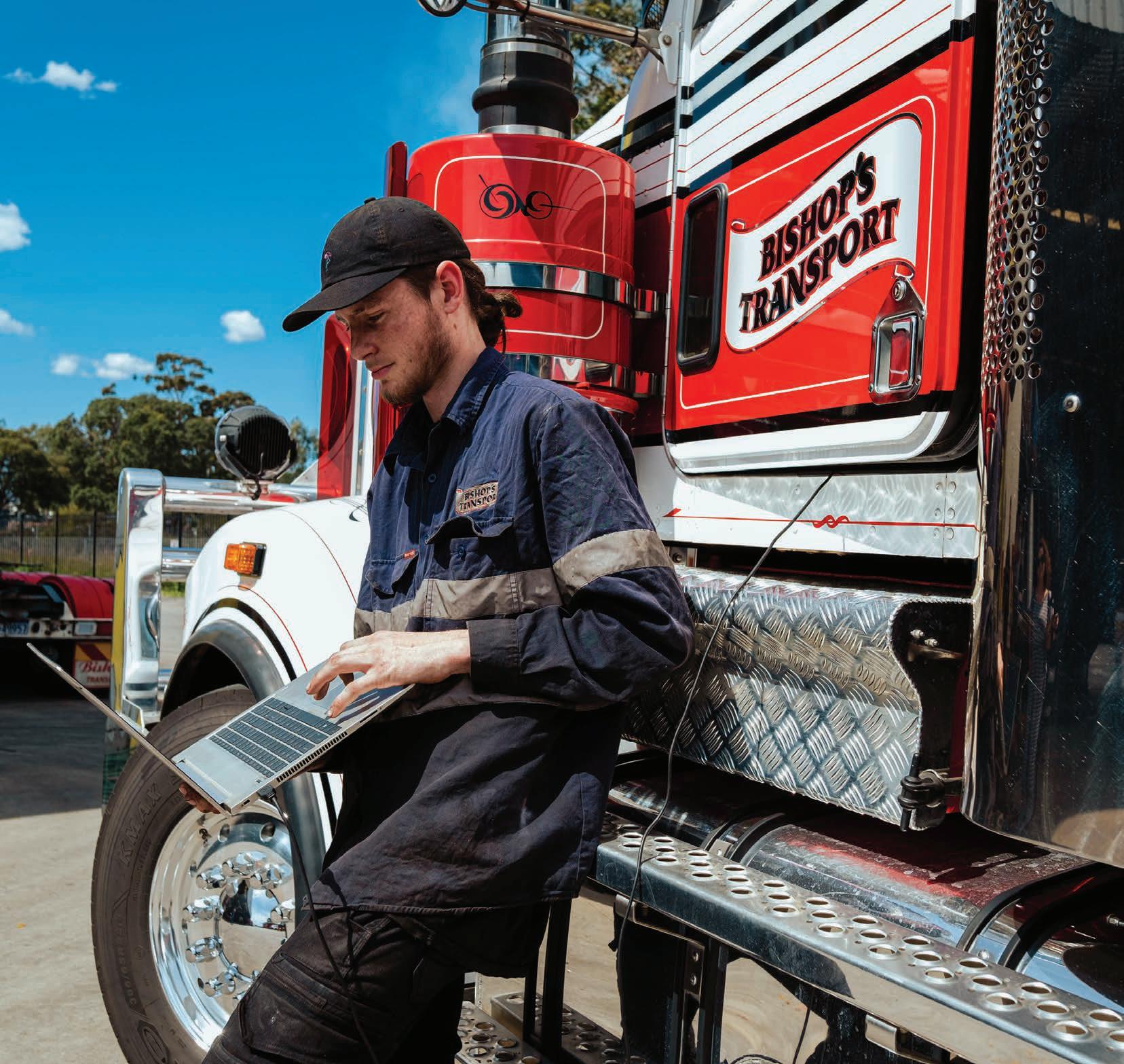
At Capricorn, we’ve done the hard work for you. With one consolidated trading account across thousands of suppliers, we’ve got all the parts and services you need to run a successful heavy vehicle business. It takes the hassle out of managing multiple payments – plus you’ll earn Capricorn Rewards Points for every dollar you spend, putting cash in your back

Find out more about the benefits of belonging to Australia’s largest coop for automotive.
One trade account Quick access to parts & services
Generous Rewards Program No joining fee
This one-of-a-kind, customised 2019 Trident helps with rail maintenance across a wide part of southern Australia.
BY DAVID VILE
IT could be widely agreed that road and rail transport have been in fierce competition against each other throughout Australia for the better part of the last century.
However, some innovative planning and building, such as that which has gone into Matt Tennant’s Mack Trident Hi-Rail Tipper, combines both road and rail componentry into a flexible and versatile transport solution.
Matt oversees the operation of Tenex Rail, which undertakes rail maintenance works across a wide part of southern Australia from its base at Seymour.
The 2019 Trident has been custom-built with rail gear behind the axles to operate on railway lines hauling sleepers and railway ballast and is the only one of its kind in Australia. Matt had the Trident loaded up on the back of another Tenex Rail Mack and on show at the Kyabram Mack Muster earlier this year, with the dual-purpose vehicle drawing plenty of attention.
Looking for versatility and a rail-road vehicle capable of taking on heavier payloads in his operation, Matt conceived the development and build of the Trident with the co-operation of the Mack factory and Aries Rail in Perth.
“It was designed by myself and built in collaboration with Aries Rail,” Matt explained.
“Mack came to the party and designed the cab - chassis to how we wanted to accommodate the rail equipment. The

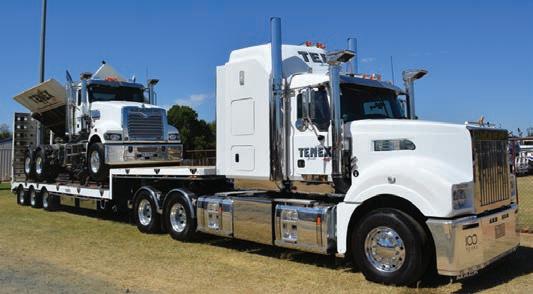
exhaust, transmission airlines and electricals were all modified or moved in-house on the production line by Mack.
“To get them up clear of the chassis rails, Mack also predrilled holes in the chassis to Aries requirements so everything would fit straight on.”
While the progression from concept to reality was around a 12-month undertaking, the process of getting the Mack work-ready was fairly quick, even with the truck having to be shipped across to Perth to be fitted out at the Aries Rail factory.
“Mack worked pretty closely with Aries sharing the designs
and so forth. The rail system was pretty much 90 per cent built on the floor in Perth, the truck was sent over there and fitted out in around two weeks, so it was under three weeks getting it over there and back to Victoria for delivery,” Matt said.
The rail gear is gauge convertible so it can run on both the Victorian broad gauge and NSW standard gauge networks. Along with the rail gear, Aries fitted the Trident with a tipper body which is designed to manage a variety of material, particularly ballast and sleepers, and has a three-way tip function (left/right and rear) along
with a several chutes in the rear tailgate to place the ballast right where it is needed.
Given its ability to ‘ride the rails’ makes for an interesting driving experience in a few different ways and as Matt explained it requires a different mindset to operate as opposed to driving ‘on road’.
“On rail the steer tyres are elevated about 300mm above the rail head, you put the truck into gear and off you go, you don’t steer and don’t touch the steering wheel, the bonnet sits up pretty high and proud, you go along doing the regulated speed.
“It is a weird sensation to just be going where the rails take you – your brain is saying ‘I need to be steering’ but you just can’t touch the steering wheel. If you run through a road crossing with a bit of high asphalt or something and you’re holding the wheel it might grip and potentially derail you, so it’s a matter of keeping the wheels straight.”
Another point to consider is the fact that doing this type of work the Trident spends as much time going backwards at a steady speed as it does travelling forwards between stockpiles and work sites.
“You get loaded at a crossing with ballast, and you may have to back in a kilometre or may have to do ten k’s to the tip-off point and then drive back out to reload, so virtually 50 per cent of the kilometres showing on the odometer have been done in reverse!” Matt said.
“The M-Drive transmission offers four gears in reverse so you can do your mid 30s

[km/h] quite easily without revving the guts out of it. Out on the road with 535hp we can tow a tag trailer behind it with a bit more weight on it and get around the countryside - it can tackle the hills with ease.”
While the project may have been a costly one to get off the ground Matt reckons the savings add up given the other machinery and equipment he runs as part of his business.
“Previously, we were using an Hydrema articulated dump truck which have their place, but the beauty of this is it can haul a 20-tonne payload which is double that of a Hydrema, and you can drive this to site with a Hydrema on a trailer behind and have two vehicles doing the work of three. Or you could be doing little ballast jobs and head out in this with a loader on the trailer and pretty much be self-sufficient and not needing a float to shift a loader and articulated tipper from site to site.”
The Tenex Rail operation works throughout Victoria, up into NSW and across to South
Australia and has a strong connection to the Bulldog breed, with the Trident being hauled to Kyabram behind a 2019 Super-Liner.
“That one is build #86 of the 100-year Mack Anniversary specials, before that we had another 685hp Super-Liner,” Matt said.
“Prior to that we had a ‘98 model CH Fleetliner, so have been with Macks for a while. I’m currently restoring a 1987 Super-Liner at home which is in the rebuild phase at the moment - I’m finding my feet with it, but people have been really helpful with advice and parts and so forth.”
Needless to say, the Trident is proving its worth, and the vehicle is an example of turning an idea into a successful outcome and Matt is justifiably proud of the result.
“It’s the only one built by Mack and delivered as a ‘railready’ so it’s a one of one. Both Mack and Aries entertained my crazy ideas and they have pretty much knocked it out of the park - it ticks all the boxes.”
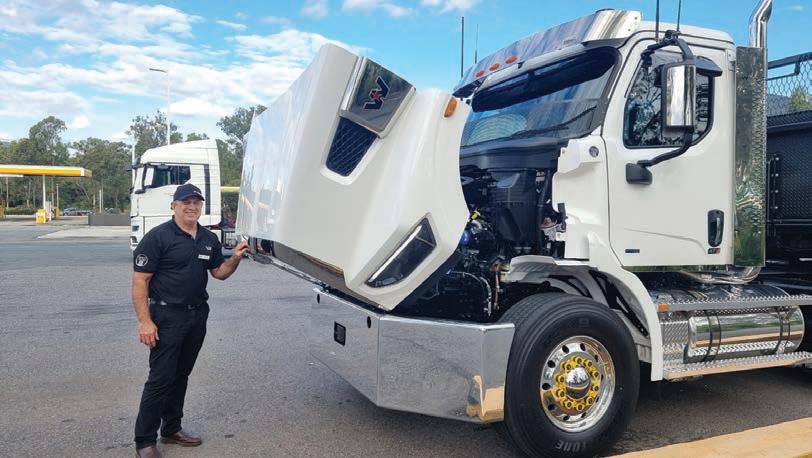
From page 22
THE morning flies by and after lunch it’s time to hop in the ‘tiddler’ of the range, the 47X prime mover with single trailer attached. This is the day cab version and at the outset let me say that I reckon it’s the best looking day cab on the market, from any angle. WS
have got the proportions of the design just right. This model is powered by the DD 13 with 525 horses and 2500Nm so makes light work of the fully laden trailer. By now I’m so confident with the manual that, with apologies to Eaton, I decide to forego the clutch…and have trouble getting into the
next gear. Ray Vella, my companion on this trip advises me to change cogs faster as the Detroit drops revs quickly. I do so and, again having smoothed out the edges of these cogs as well, the rest of the drive is relatively smooth. If I had to come up with one word to describe the
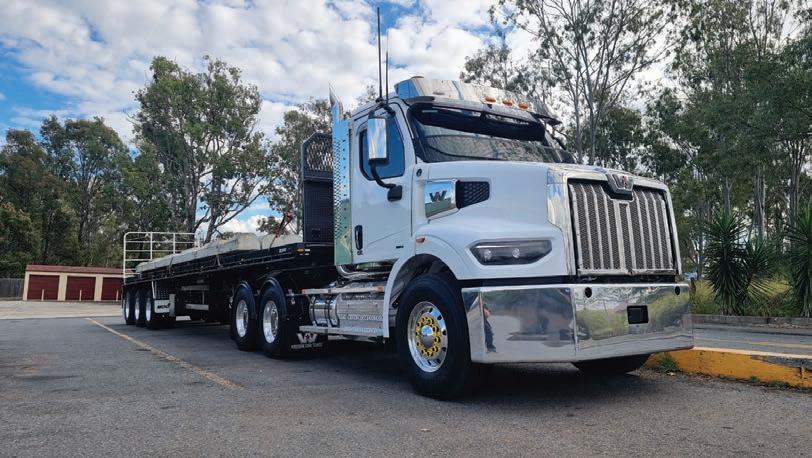
47X, it would be ‘Chuckable’. That shortened wheelbase allows for tight turns in city/port applications but there no wallowing. The view over and around the sloped bonnet is great. As with the 49X the Jake brake is quiet compared to old school and will haul you up in no time.
The Isri seats are nice and wide and together with plenty of steering adjustment, everyone will find their perfect driving position with the Stick in just the right place. I loved my time in the Big Banger 49X and if driving and living in a truck it is right up there. On the other hand, for day
work and driving anywhere, particularly in built up areas, the 47X is a hoot! I think I actually loved that truck even more. These trucks have come a long way on every front from their revered predecessors. Go get in one and try it for yourself. If you don’t, you are doing yourself a disservice.

Scan QR code for more details.


Having found her calling behind the wheel, this second-generation truckie is taking over 76,000 Instagram followers along for the ride.
BY DANIELLE GULLACI
FOR Casuarina Smith – better known as Trucking with CJ –social media has become a way to share what she does with the masses. From providing insight into the day-to-day life of a truckie, to spreading important safety messages and working to attract more people into the industry, which has been calling out for more truck drivers for years.
In the two years since she started her Trucking with CJ Instagram page, it’s amassed over 76,800 followers – a feat she never could have imagined. While 44.8 per cent of those followers are from Australia, the remaining 55.2 per cent of her followers come from overseas, with the lion’s share being from the United States.
Based in South Australia, 34-year-old CJ works for Merkanooka Haulage in Western
A It’s fly-in fly-out work, on a two week on and two week off roster, which has been the per fect fit, allowing CJ to continue wor too.
in January,” she said, “When I’m on a mine site, I haul the raw unprocessed gold ore from the mine to a processing plant. Some of that is within the mine site and some is on public roads.
“We’re hauling around 300 tonne when loaded, so are really heavy.”
A family owned and operated company, Merkanooka Haulage specialises in both mining and agricultural transport services.
That means there’s a fair amount of diversity in CJ’s role too. For example, when CJ spoke with Big Rigs she was on her way to the Forrestania mine site, located around 400km east of Perth, to pick up a drill rig and bring it back to Marble Bar in the Pilbara. “Sometimes I’ll do that sort of work as well. Then in October I’ll be coming off the mine work and will go and do the grain harvest, driving a C-train.”
But for CJ, despite being around trucks her entire life thanks to her truck driver father, following in his footsteps wasn’t always on the cards.chard in the Adelaide Hills. “I e on that property and Ition on the land doing cherries I continued with that; but there’s not much money there more, so we’ve mostly had to uit trees out which is super devastating. Now my dad and I are both driving trucks,”
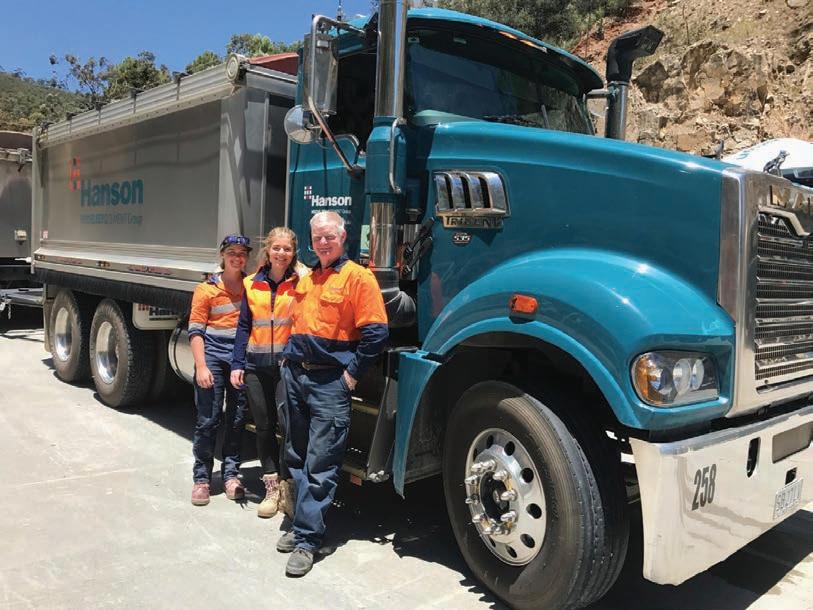
here at Merkanooka in November last year. I wasn’t looking for another job but this opportunity presented itself.
“Although I had held my unrestricted licence from 10 years prior, I wasn’t sure if I’d be able to do the work – and I was honest about that with my boss. I knew I could pick it up easily though and I did. Within a week, I was driving a triple road train, at about triple the weight of the fuel tankers I was in.”
For CJ, she’s taken to the role like a duck to water. “One of the great things here is the variety. I ask people all the time, can you teach me this or teach me that. I’ve learned to identify punctures, change tyres – because you’re working so remote, you can’t just call a mechanic; so that’s been really good for me, it’s what I always wanted.
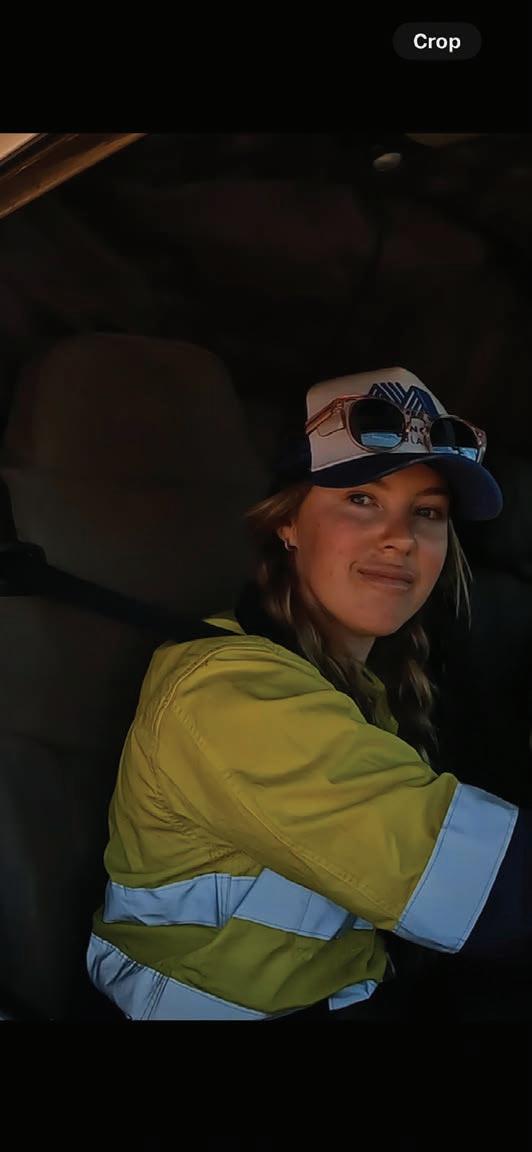
follow her other dream – motorcross. She found work in a motorbike store with dreams of pursuing a career in racing, but it wasn’t to be.
“I raced motorcross for a few years. I don’t have much time to ride anymore but I still have my Harley and Husqvarna for when I go home.”
When CJ first finished high school, the initial plan was to
Looking for a long-term career, CJ got her diploma of financial services and moved into insurance broking, where she spent seven years successfully climbing the corporate ladder. As she quickly found out though, being chained to a
and where she was going,” recalled CJ.
“I loved Queensland but my sister said there’s no point in staying in a place you love if you’re doing something that makes you miserable five days of the week!”
CJ applied for a Canadian Visa. “But I had zero dollars in my account. So I came home and worked for seven months driving concrete agitators to save money. I bought a oneway ticket and headed over for just under two years.
As she explained, “I worked on a cattle ranch in Alberta, at
of it because I’d worked so hard to get there. You can’t drive a truck and dog unless you really have the skills because some of the sites are so tight.”
When an opportunity presented itself to drive fuel tankers, CJ got her dangerous goods ticket and secured work as a driver for Liberty Fuels. In the meantime, she progressed to her MC licence and eventually moved into fuel road trains.
“In the beginning people were hesitant to give me a go,” said CJ. “Throughout my driving career, it’s been other people’s fears that have outweighed
“So many people have tried to tell me I wouldn’t be able to do this or do that. But what I’ve found here is that people will always find a way for you to learn to do it, so I’m eternally grateful for that.
“There are some beautiful people I’ve met too. I feel like I have all these older experienced uncles I can learn from!”
As for CJ’s social media and online presence, she says her boss has been very supportive. “He sees the power of what I’m doing online and encourages it.
“I really love doing the safety videos to try and help educate everyday road users. My plan now is to build up my YouTube channel, where I can do more of the informational, longer
It’s CJ’s hope that by sharing the work she does, it might just encourage other people to take the leap and join the transport
“I’ve been up against it a fair bit with people who didn’t think I was capable. But I’ve persisted and people can see the benefit and the power of that. For now I’m just trying to be the best and most skilled truck
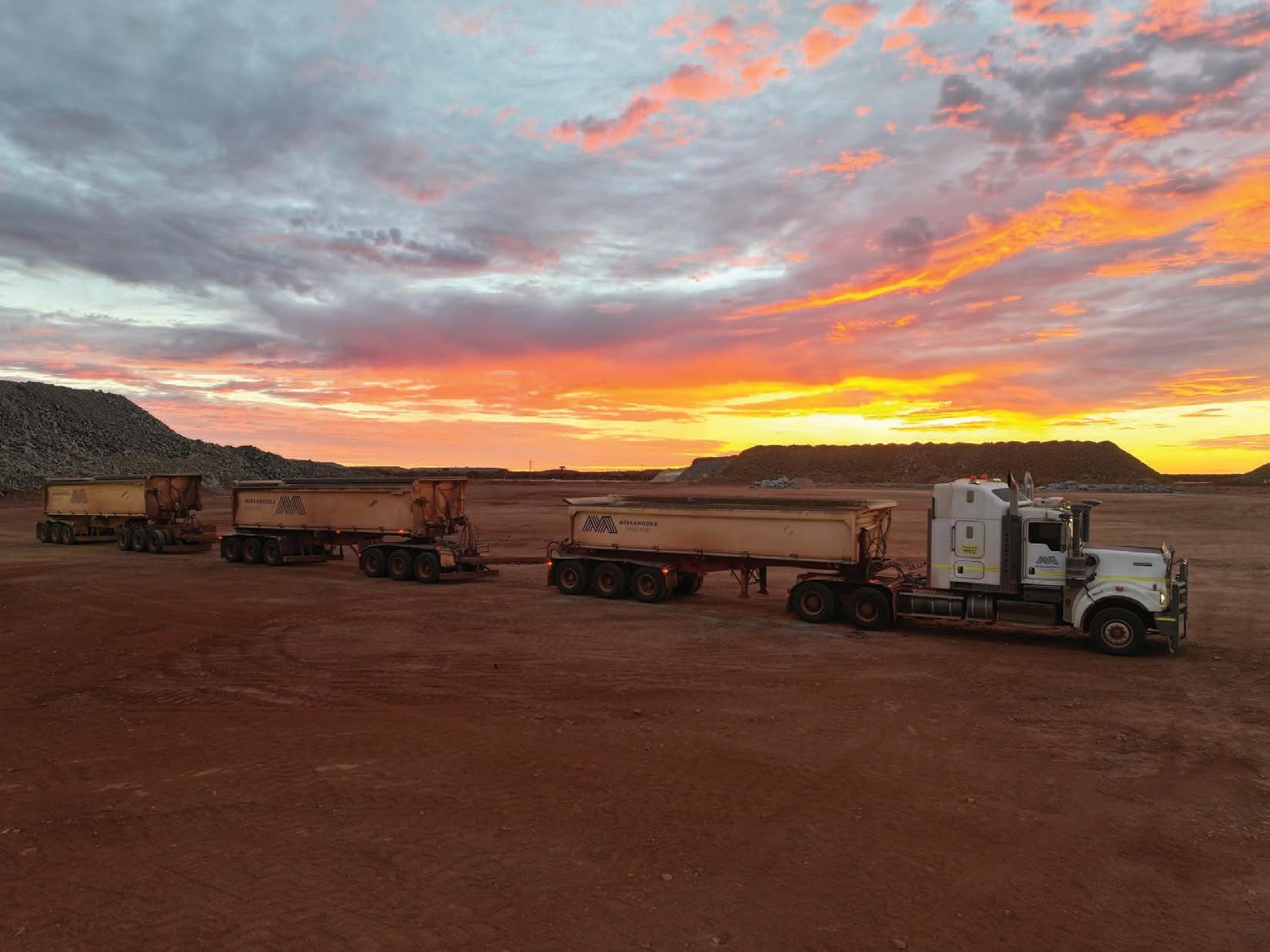

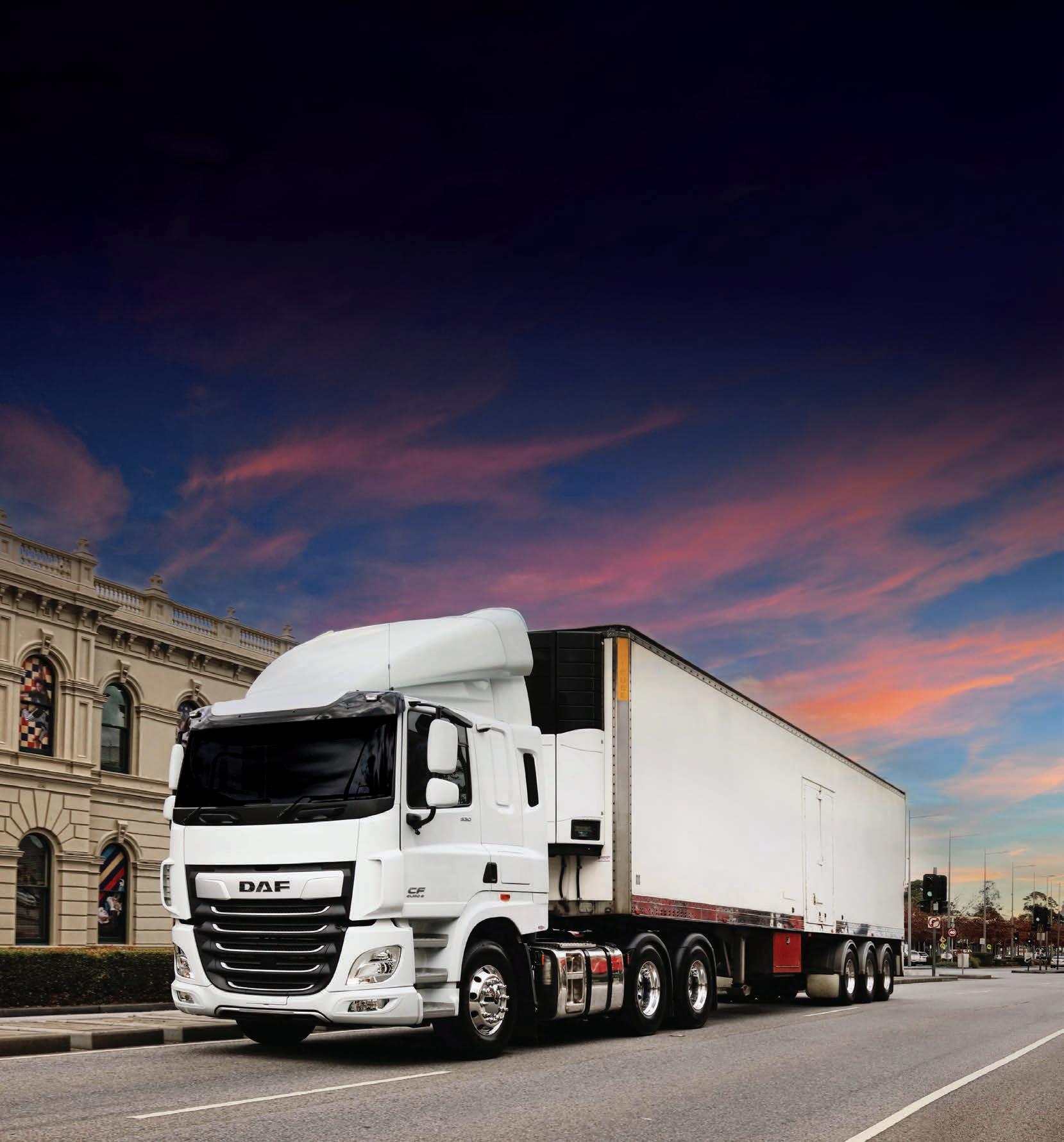


SHELL Rimula has partnered with Big Rigs in a big way – so there are even more reasons to send in your best truck shots.
Each month, the Big Rigs team will choose a #PicOfTheMonth, with the lucky winner receiving a $500 Shell Coles Express Gift Card.
Keep an eye out for our regular posts on the Big Rigs National Road Transport Newspaper Facebook page, calling
for your best truck photos and add yours in the comments, or email them to kayla.walsh@ primecreative.com.au.
Don’t forget to include a brief note about the truck and where the photo was taken. We’ll feature some of the best photos in each edition of Big Rigs Newspaper, with one win ner announced each month. Keep those amazing truck pics coming!
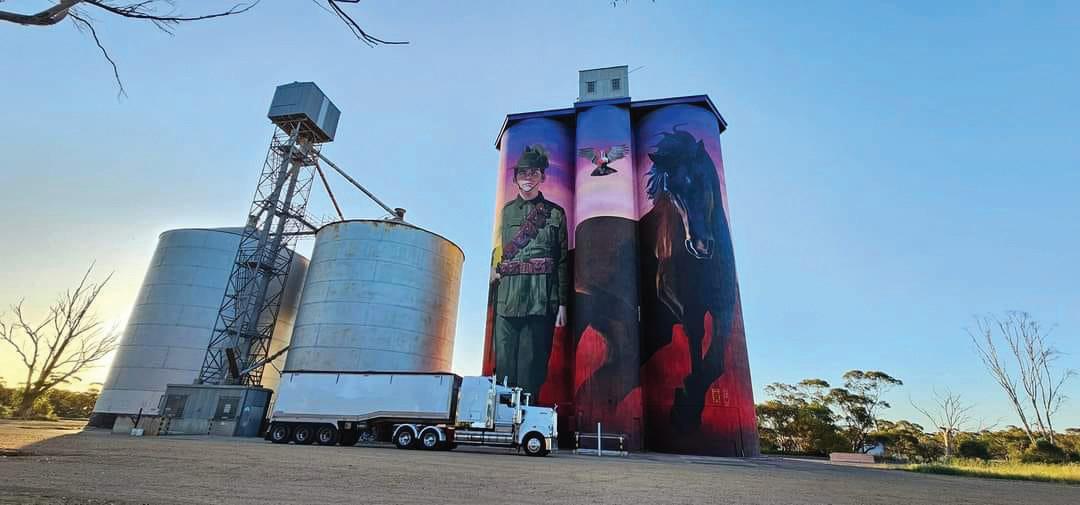
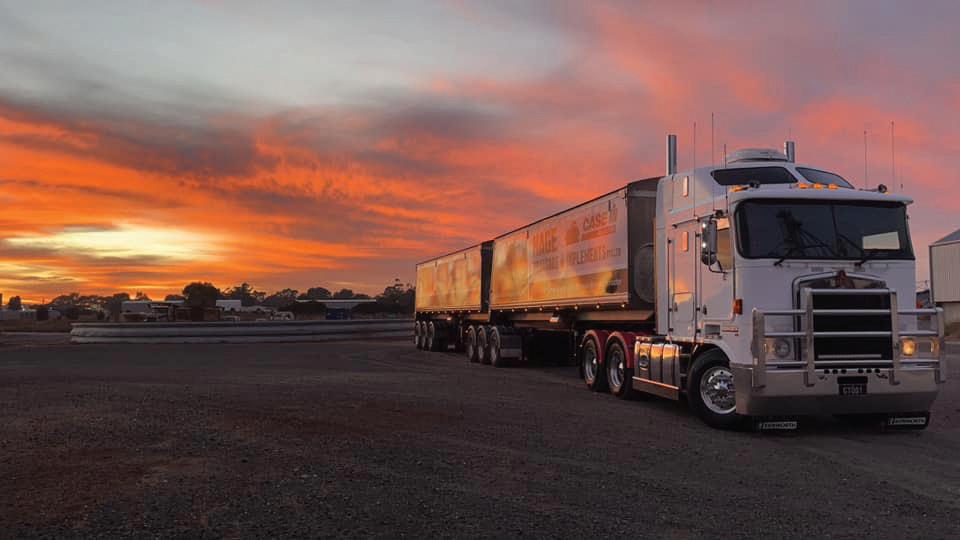


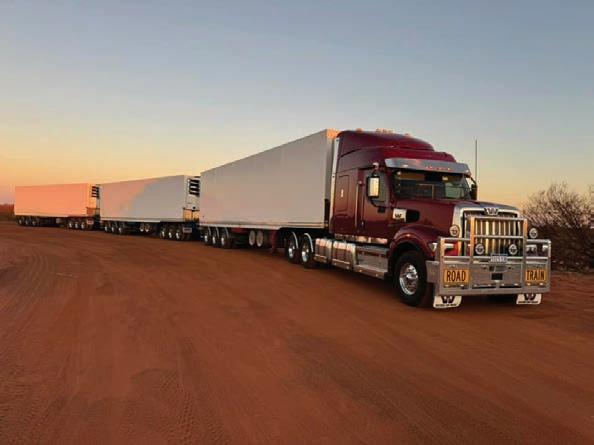

When the going gets tough, truckies keep everyone going
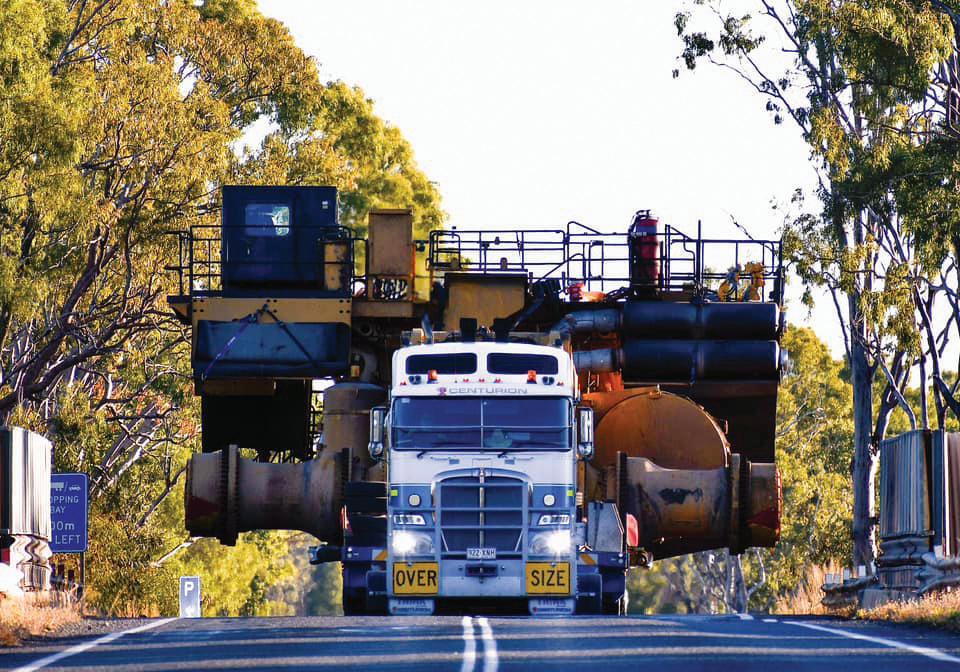
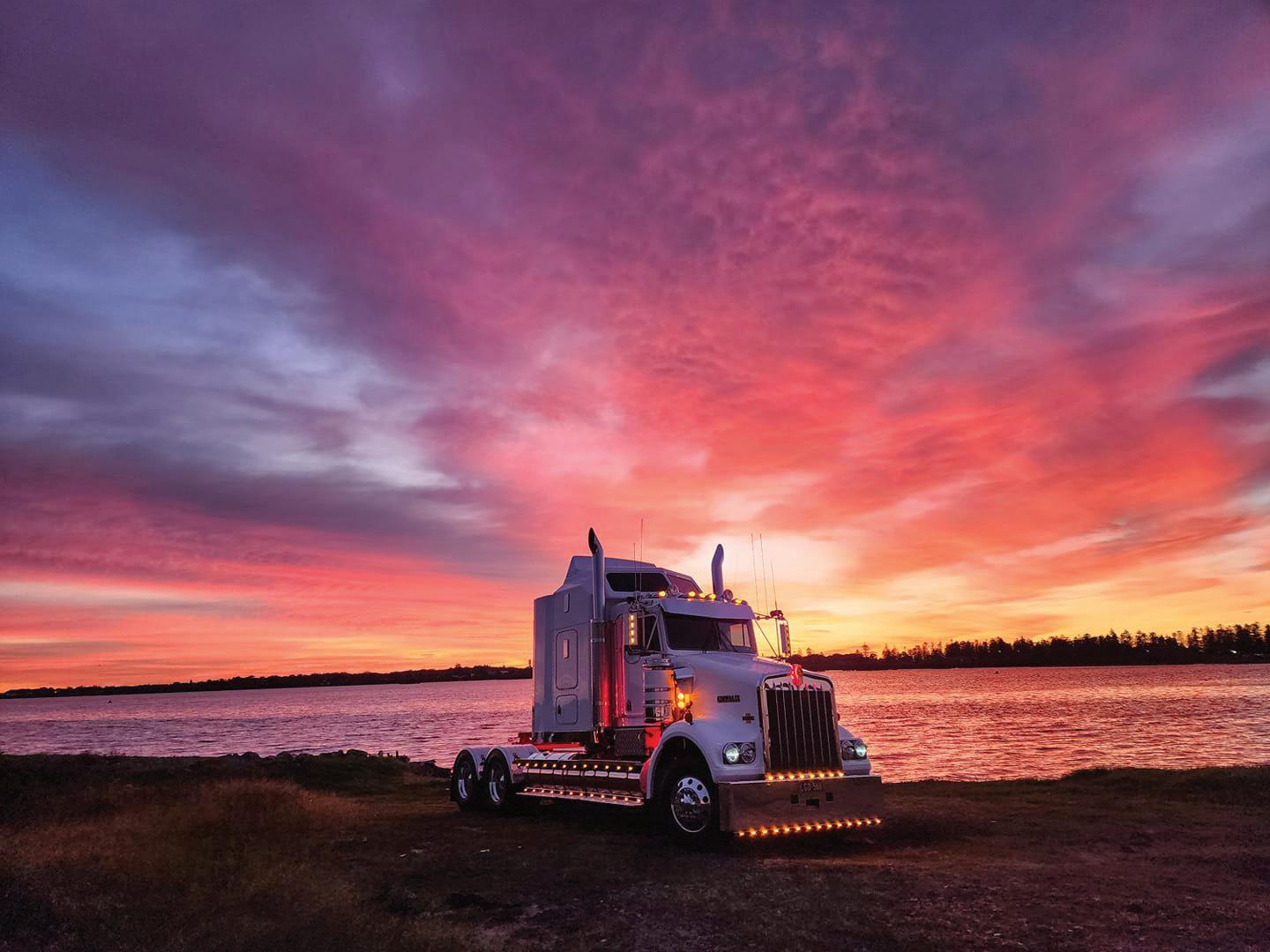

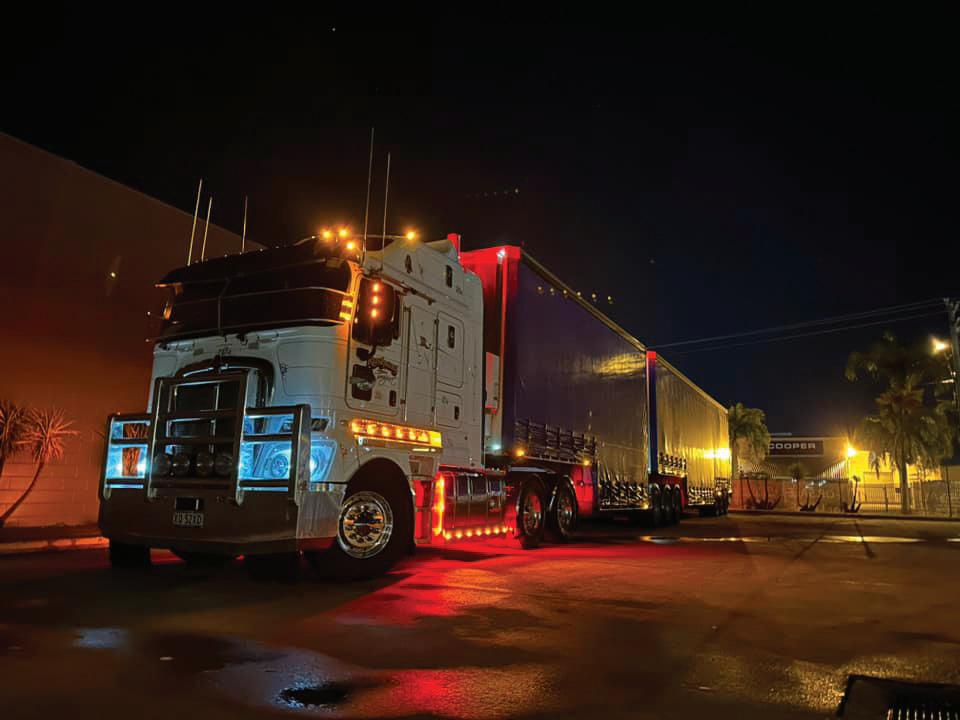
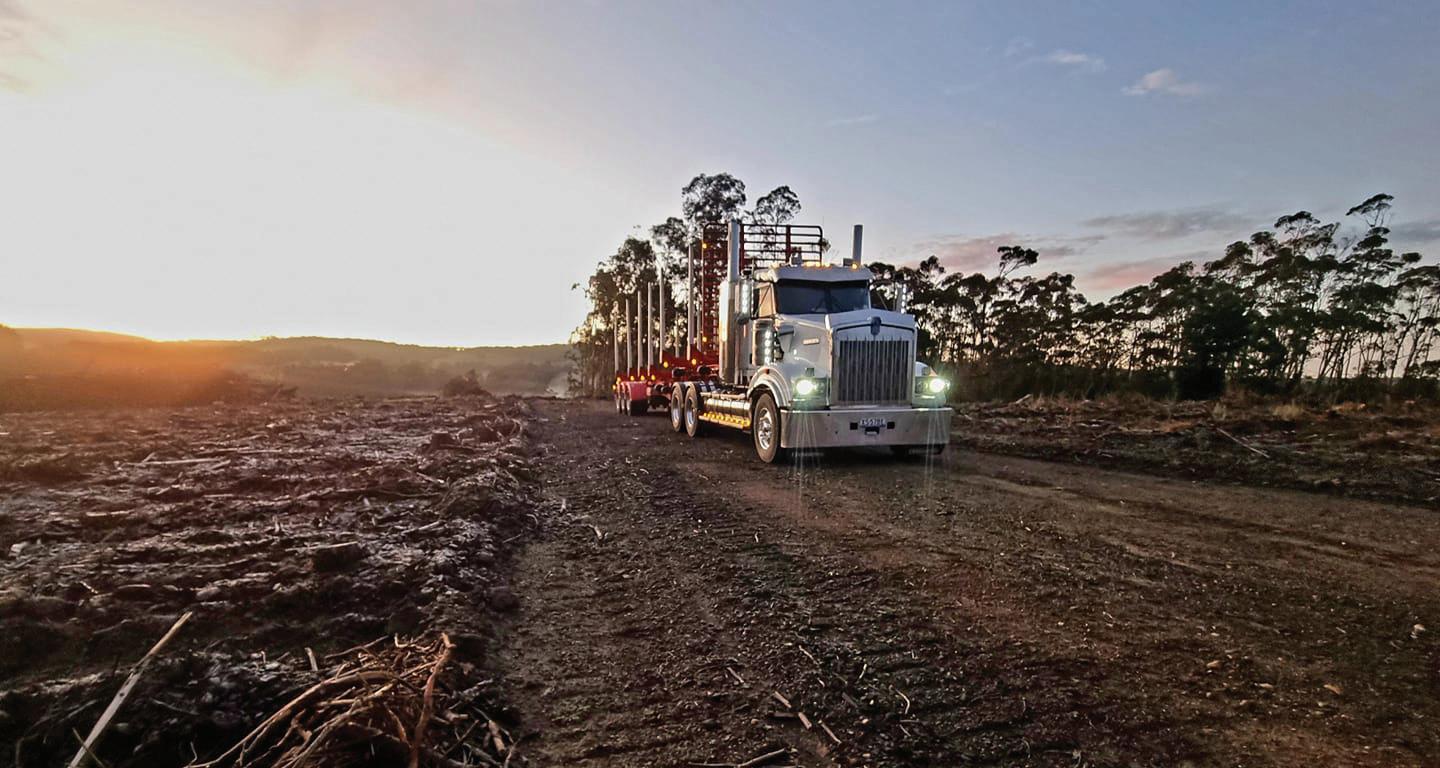

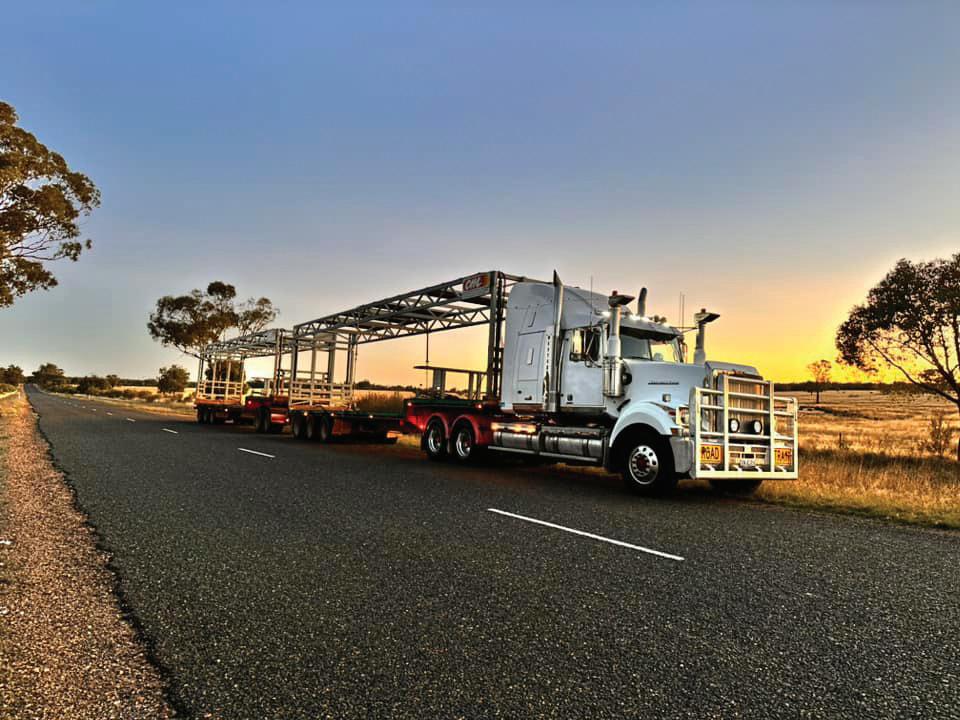
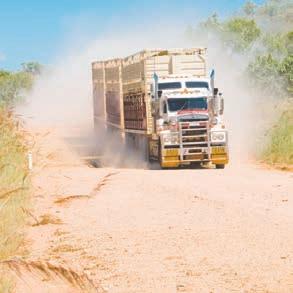

‘It’s always interesting and always different’
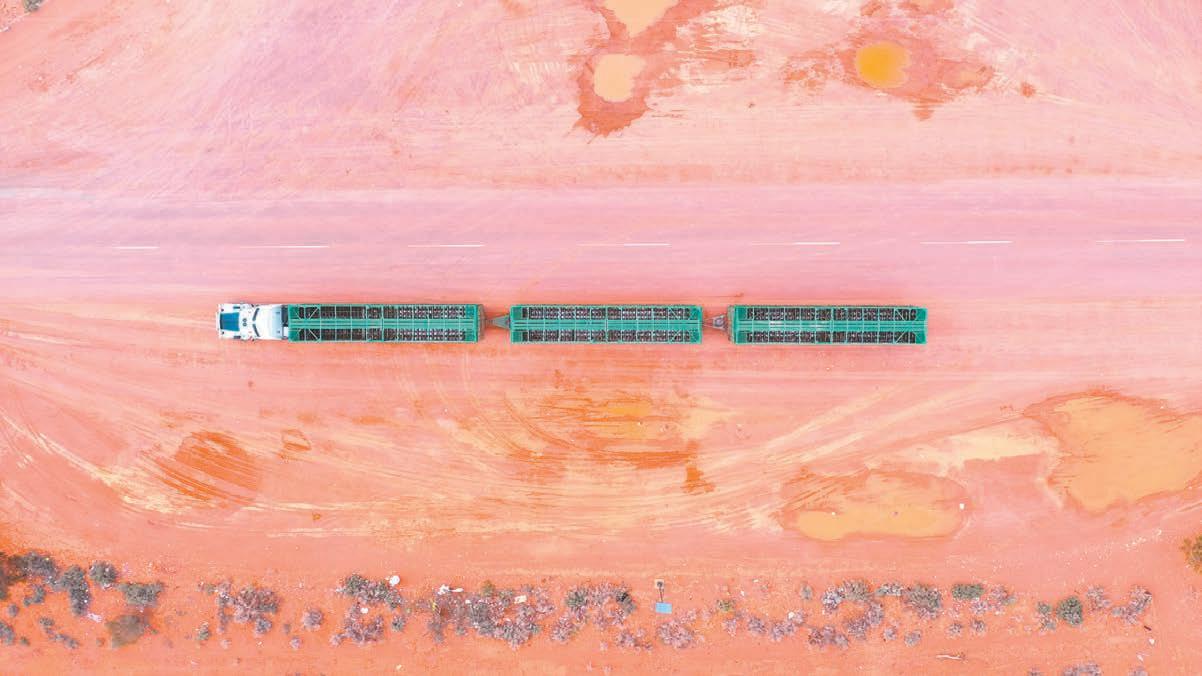
Having spent three decades in the industry, this WA-based road train operator says once transport gets in your system, it’s pretty hard to shake.
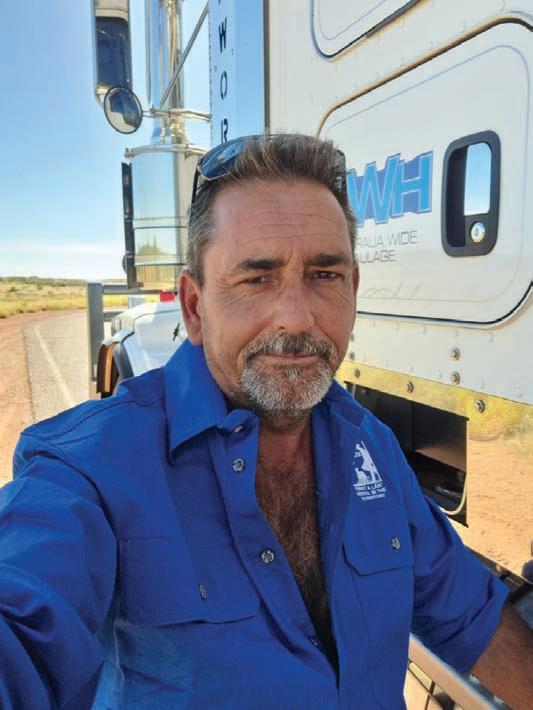
BY DANIELLE GULLACI
SOMETIMES spending up to five or six weeks out on the road at a time, for Gary Morton, his truck really is a home away from home.
Gary, 53, has been working for Australia Wide Haulage for the past 18 months, driving a Kenworth T659, which he’s had since brand new – after being given the keys to the rig in January last year.
“I jumped out of another T659 and straight into this one. It’s a new truck and I absolutely love it. It’s a pleasure to drive and has everything in there – a tv, microwave, a big bunk. She’s very comfortable on the road,” Gary said. His work generally takes him throughout Western Australia and into the Northern Territory, delivering general freight and stock feed. “There are no set runs, it’s wherever the freight takes us. We do a lot of work into Darwin and Kununurra, delivering into the stations and the mines.
“It’s always interesting and always different. In transport the years just go by so quickly. For me, I’ve been driving most of my life, so I’m a veteran of the road, but you never stop learning.”
Gary grew up in Perth and spent time living in Darwin around 20 years ago.
Though he got his HR licence at the age of 19, Gary
started his working life working on boats out at sea, before the road came calling. “Even back then, I knew I’d get into trucks at some point in my life. I loved the look of the Kenworths, the road trains, and had a love of travelling,” he said.
After a stint spent sea diving for a living, Gary returned to land, buying a house and getting into transport at the age of 23. “And I’ve done it ever since.
“My first gig was doing overnight express up to Port Hedland, which was two trips a week. I’ve done a bit of everything since then – whatever will go on a trailer really. I’m a bit of an all-rounder I suppose.
“Once transport gets in your system it’s pretty hard to shake – it’s like a bad addiction. You can try to walk away from it but it always draws you back. And it’s something you have to have a strong passion for too,” added Gary.
“But that passion also comes with a lot of responsibility. A responsibility to the general public, to yourself, to your employers and to your clients. Ultimately when you are out on the road, the buck stops with you.
“You need to have thick skin and a bloody good sense of humour too!”
As he chatted with Big Rigs – while dropping in and out
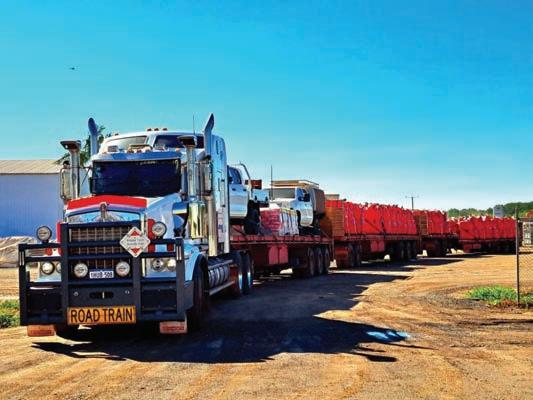
of service – Gary had just left Darwin on his way back home to Perth.
After working across various roles behind the wheel, Gary has been in road trains full time for the past five years.
As he reflected on what’s changed in trucking over the last 30 years, Gary explained, “I worked my way up like the old guys. You had to be competent in every combination you were operating in back in the day, before you could move into something bigger.
“Now everyone is screaming out for drivers – and it’s getting a bit dangerous out there, when you’ve got people coming at you at 100 kilometres an hour
“You’ve still got the mateship to a degree but everyone is in such a hurry. No one has the time like they used to back in the day.
“Times have changed but I still enjoy a roadside barbeque or feed occasionally. I’ve done that a few times with some mates but you don’t see it much anymore.”
Gary says Australia Wide Haulage has been a great company to work for – including when a health scare saw him off the road for about two months late last year. Though he’s thankfully back to good health, it resulted in a new nickname.
legs but I just kept going for a few months as you do, until it got to a point where I really had to stop. I was out of action for about two months, in and out of hospital.
“I spent my last Christmas at a hospital in Broome. I could hardly walk, let alone drive. I came close to losing my feet.
But being a truck driver you just keep going. I don’t even know how it started – it could have been a dodgy shower or something. But I’m back to 100 per cent now.
“My mates started calling me Happy Feet – and that name has stuck. We have a laugh about it now.”
And as for Australia Wide Haulage – a family business which has depots in Perth, Port Hedland, Broome and Karratha – Gary couldn’t speak more highly.
“They had my back through all the hospital stays and everything – that was really refreshing to see.”
In his work, while Gary does the occasional shorter runs, he usually heads further afield. “I have some family in Darwin too, so if I ask for some time off when I’m up that way, they’ll give me a few days off. They’re really good like that.
“And if there’s freight to go out, so long as I’m within my
out again after I return.”
He says many of the roads he travels on are fairly quiet. “It’s not like in the Pilbara where you have all the quads and mining traffic.”
When asked about the most challenging roads he gets along, he nominates Victoria Highway, which he says is pretty rough; and the Great Northern Highway between Kumarina and Newman.
“That stretch of the Great Northern is a really narrow bit of road with a lot of traffic.
Although they are starting to widen a lot of these sorts of roads now.
“When you look at it, the roads are our workplace as well as being for use by the public, so the government needs to have that duty of care and get these roads fixed.” Gary adds that he enjoys the fact that no two days are the same in his current role. “My work takes me through the mining areas and into Darwin, so that mixes it up a bit and gives you that variety.
“I enjoy the lifestyle and getting to meet people in the regional areas, who are fantastic. I enjoy camping by the side of the road when I can too.
“This company looks after me – I’ve got this great new truck and I’m left alone to do
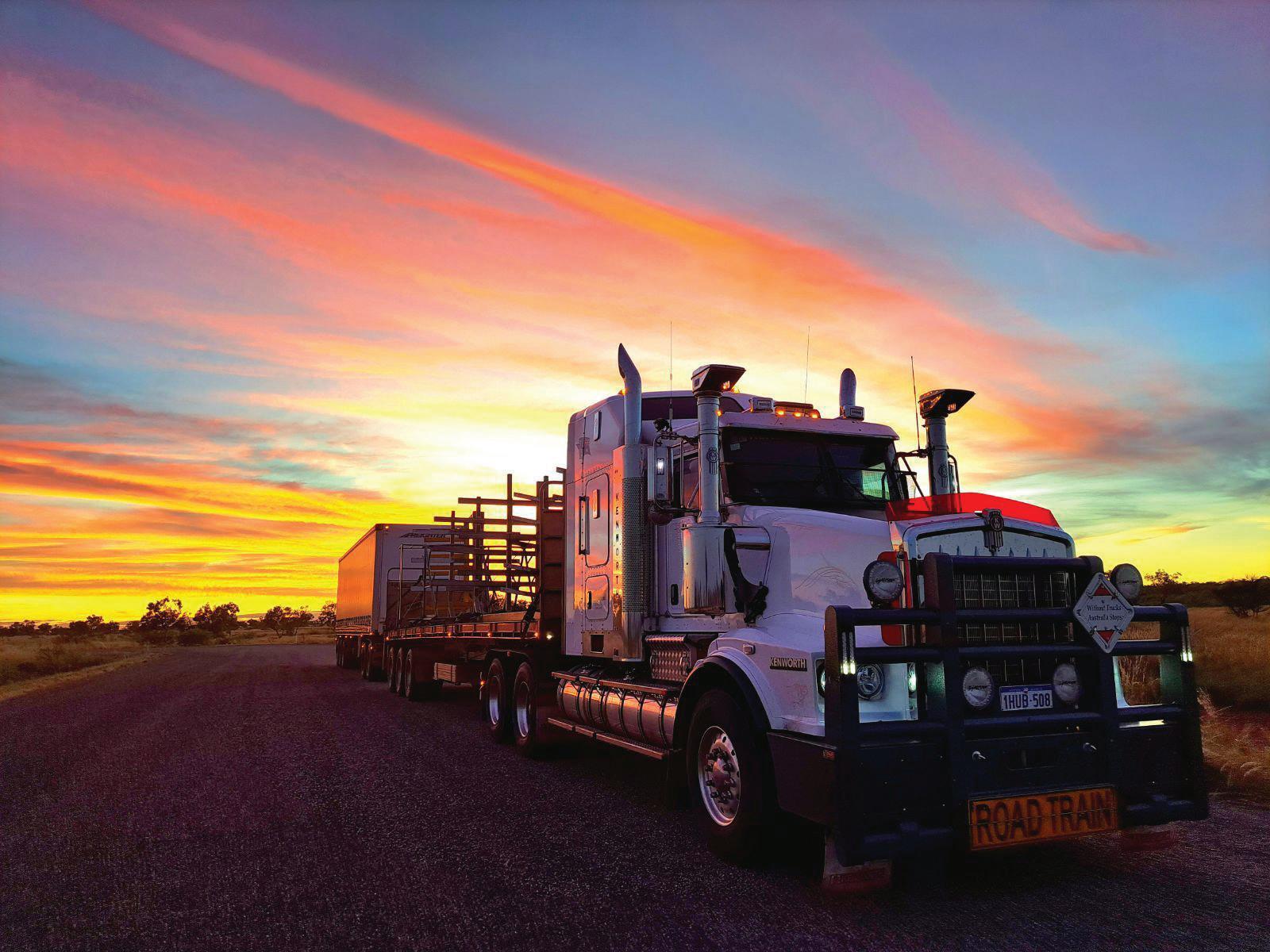
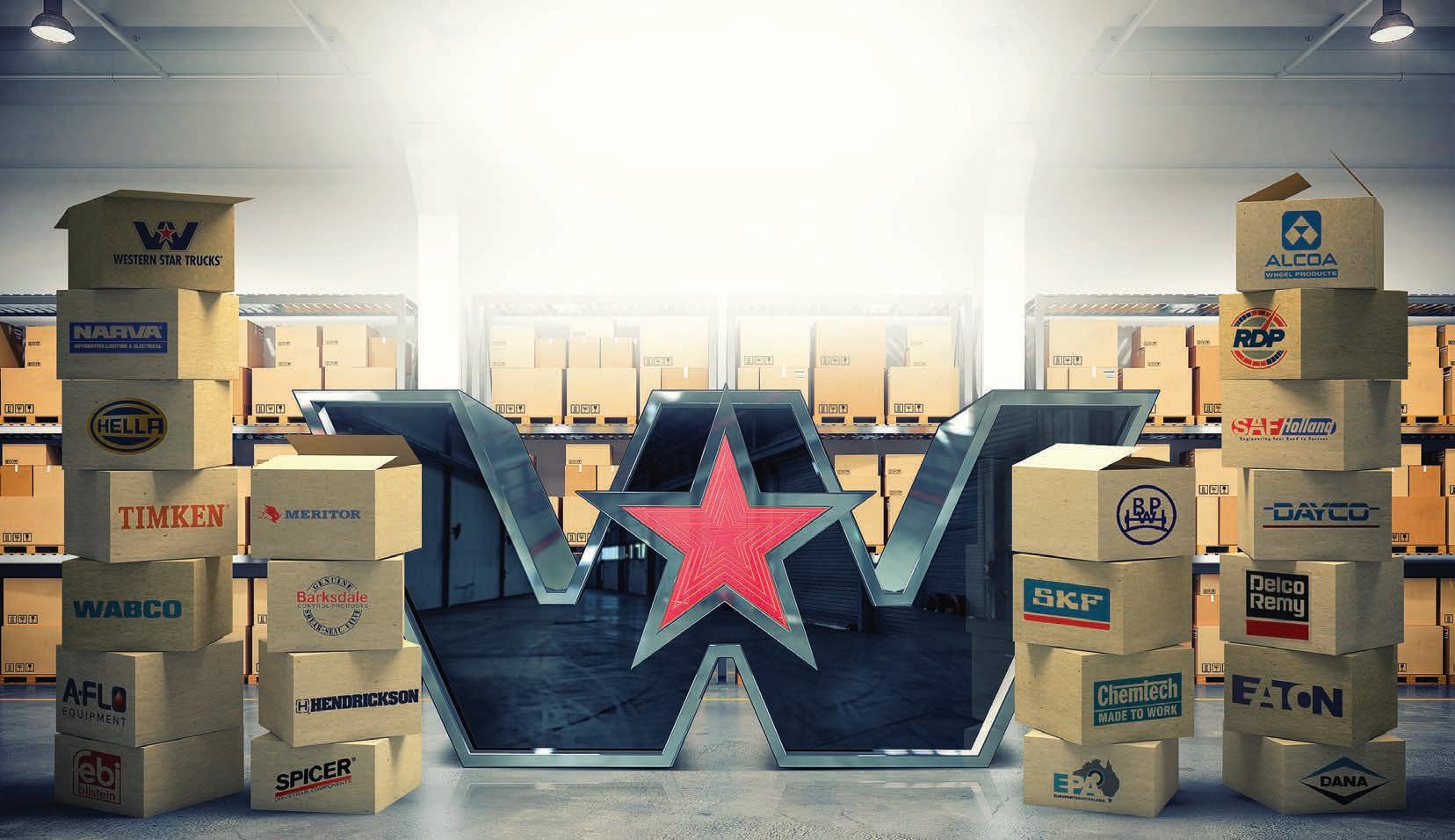


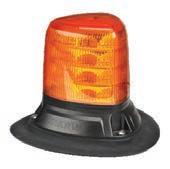
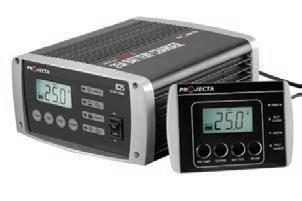



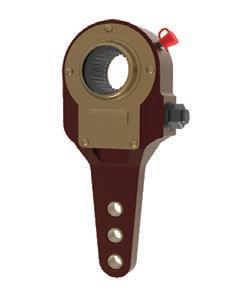
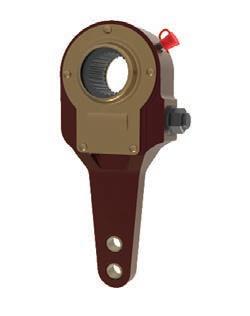
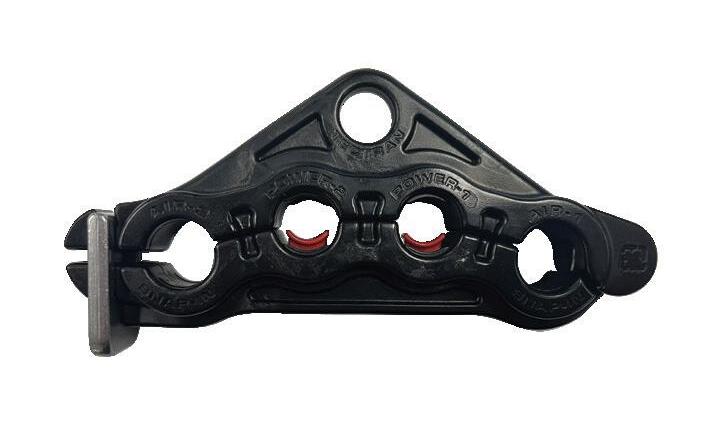

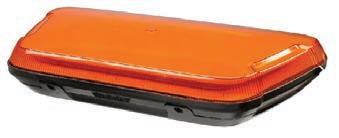
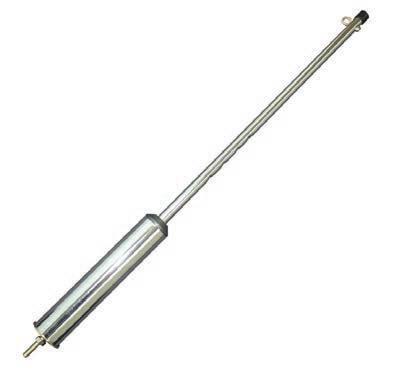
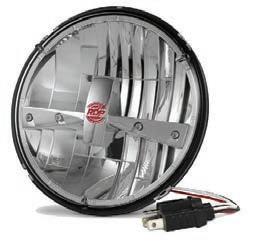

YOUNG Cody Hansen, who works in the wash bay of a large road transport company, is non-verbal. He is a genuine inspiration to everybody who knows him.
Aged 21, Cody is employed one day a week by Blenners at their large depot beside the Bruce Highway at Tully in north Queensland.
His proud father Glen is also employed at Blenners as a jack of all trades from driving excavators to trucks on local deliveries.
“Cody just loves trucks and started going into Blenners with his carer and doing volunteer work, and they have put him on the payroll one day a week. He always has a smile on his face and while he is non-verbal, he knows what is said to him and responds,” Glen said.
“We are very lucky to have a great team at Blenners who have the time and consideration for Cody, and in doing so, it makes him comfortable at the workplace.”
Because of his disability Cody will never obtain a
driver’s licence so that rules him out of ever being a truckie.
But with such a love of trucks Cody is relishing his role at Blenners where scores of rigs come into the washing bay.
It is his third year there with many more years ahead of him.
Two of the recent highlights for Cody was being a passenger in a Blenners trucks during the Townsville Convoy for a Cure and also the street parade on June 8 which was part of the celebrations for Tully’s 100th year.
“Cody just loved honking the horn during the convoy and during the Tully Street parade hundreds of people waved to him. Lots of people know him,” Glen said.
Around 60 floats or trucks took part in the popular Tully event.
The driver of the Townsville Convoy truck was a long time Blenners driver Dippy Southern.
“Cody is a top young
man and a hard worker who everybody likes,” Dippy said.
It was the second Townsville Convoy Cody had participated in.
Glen said that Blenners owners Les and Judy Blennerhassett were very good to Cody.
“When he turned 21 there was a post on the Facebook page and it got responses from many companies and people in the road transport industry,” Glen said.
Cody, who will turn 22 in September, also recently got to ride in a local collection truck in the area.
The Hansen family live at Mission Beach near Tully after spending many years on Magnetic Island which is a suburb across Cleveland Bay from Townsville.
Cody attended Mission Beach State Primary School and later the Diverse Learning Centre in Innisfail for high school.
He can’t wait until each Wednesday comes around so he can be doing what he enjoys – being around trucks.
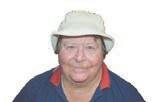


A truckie for 15 years, Rob Moon has worked for S&L Transport for the past four and loves it.
Ron, 47, was parked up in his 2012 Western Star in Townsville ready to hook up a trailer when Big Rigs saw him.
“I have brought up general freight from Brisbane to here and have a similar load to take back,” he said.
The Western Star is powered by a 500hp motor with an 18-speed gearbox and Ron said it was comfortable.
An experienced driver,
Rob used to do a run from Brisbane to Darwin and also another to Adelaide.
“I like the freedom on the road and all of the people I get to meet. Many characters included,” he said.
The worst roads he gets along are sections of the Bruce Highway and others near Miles and Goondiwindi.
“I came along the Bruce south of Townsville yesterday and it was terrible,” he said.
While Ron said he feels there are enough rest areas in Queensland, he qualified that remark.
“We need more with good facilities for us drivers,” he said.
His three favourite roadhouses are the BP Cluden where I saw him, and two in the NT – Threeways and Renner Springs.
As for hobbies, Rob said he didn’t have time for many these days.
“I am not into football but did used to enjoy V8 racing. But I have six sons with the youngest aged 16 and three still live at home and I love spending time with them,” he said.
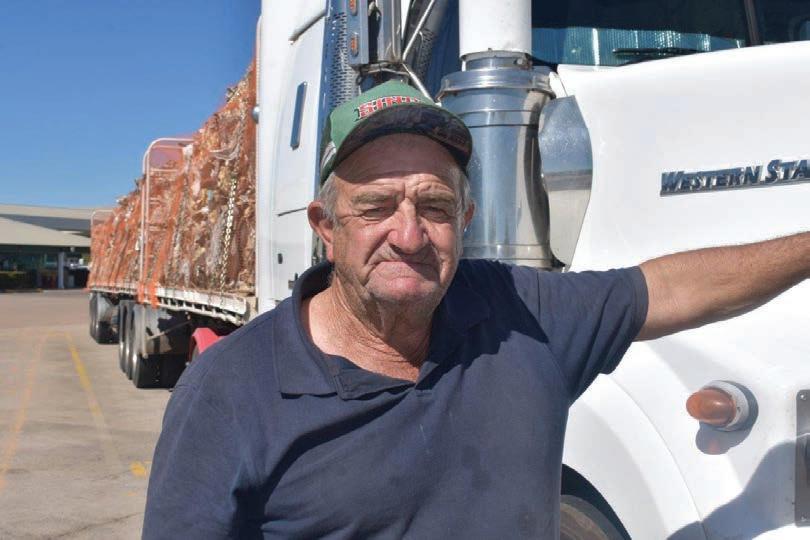
WHEN I saw a veteran driver sitting in the cabin of his Western Star 4900 the first thing I noticed was the large rubber thongs on his feet.
Nothing unusual about that because many of our drivers don the same footwear.
But the difference here is that this driver is named John Thong. He works for Singh Transport based at Dalby.
“I am carrying scrap metal from Townsville to Brisbane,” he said.
I asked John, 60, what the scrap metal was from.
“It is all from old washing
machines,” he said.
The B-double, powered by a 600hp motor and with an 18-speed road ranger gearbox, was parked at a Townsville roadhouse.
A driver for 30 years, John said he does get a lot of comment about his surname.
He added that the worst road he gets along is between Capella and Clermont.
“It is terrible and rough,” John said.
John likes stopping at the BP Clermont roadhouse and says drivers need more good rest areas with facilities.
He is a big fan of the Brisbane Broncos in the NRL and his favourite player is forward Patrick Carrigan. As for hobbies outside work, John said he had two favourite habits.
“Sleeping and drinking beer. My favourite brew is Great Northern Original,” he said.
Whilst this friendly driver wears out a few pairs of thongs a year, on a personal note he has no intention of retiring soon.
“I love the job and the people I meet,” he said.


1,850-2,050
lb-ft @ 975RPM
Extreme duty and heavy hauling for your biggest jobs
Detroit’s most powerful truck engine ever, the DD16 boasts up to 600 horsepower and 2,050 lb-ft of torque. The big bore workhorse provides efficient and dependable power and performance without compromise.
Advanced combustion and aftertreatment technology exceed future emissions requirements whilst retaining exceptional fuel efficiency and uptime.
This power, performance, and efficiency are backed by the most comprehensive warranty and extended coverage packages, ensuring the highest level of support for our customers.
When you buy a Detroit product, you’re buying billions of miles of engineering excellence. Tried and true, Detroit engines are built to ride the roughest roads. With Detroit, there’s no compromise. @ 1,800 RPM




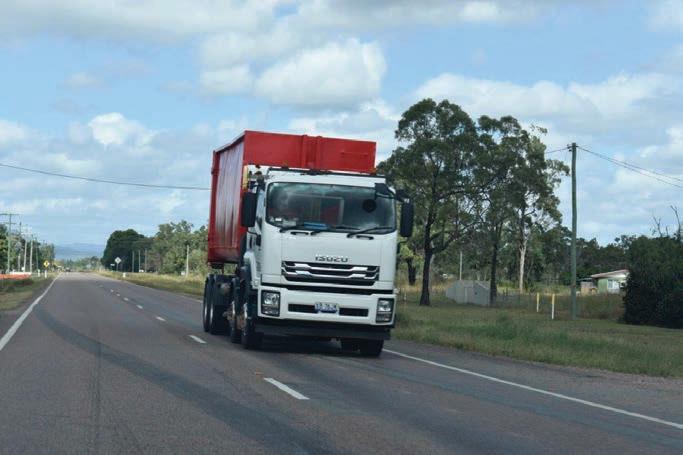
Iconic stop sold but stays in family
It is a place where thousands of truckies have stopped over the years.
Fourteen decades ago in the 1880s it was a stop over for Cobb and Co coaches.
The iconic but very remote Middelton Hotel which is located on the Development Road between Winton and Boulia has been sold.
But it has stayed in the family as the new owner Stoney Cain is the son of the legendary previous couple who ran it – Lester and Val Cain.
Having stopped there six times in the past 30 years Spy can say with genuine sincerity it is a welcome sight for travellers including truckies.
Indeed many truckies who have enjoyed the hospitality there have told Spy about the takeover after Lester was ill.
It is about 170km from Boulia where I used to go annually for the camel races and about 190km from Winton.
There are few buildings along the way and many describe the trip between Winton and Boulia as boring.
Stoney had been a mostly uninvolved part-owner of the pub since it was bought by his parents in 2005.
This outback man had been involved in mustering cattle, earthmoving, mining opals and flying choppers. His offsider is fiancée Clara Fisher who runs cattle on Glen Kyree Station, south of Winton.
Over the years I had numerous telephone conversations with Lester who was once bitten by a Taipan snake and survived.
Lester would tell me about seeing the mysterious Min Min Light which many claim can be seen at certain times in the region. Across the road is an old camping ground with a “Hilton Hotel” sign proudly hanging at the entrance.
Truckies I have spoken to recently love stopping at the
Middleton for a coldie – a soft drink of course if they are on duty – a snack, or just a yarn.
Rest area comparisons
One of the questions Spy asks the many truckies I yarn to is about rest areas and whether there are enough to suit their requirements.
Mostly the answer is a swift “no” and they have home bases in many states.
But when probed on which state overall would have the most rest areas with toilets, shaded areas including table and chairs and a decent amount of parking space, a majority nominate NSW.
Queensland would get the lowest rating, whilst SA and Tasmania are not far behind.
Of course 99 per cent criticise caravan drivers for taking up a lot of space which annoys truckies.
Signs needed urgently
On the subject of NSW rest areas, Spy has received numerous calls from truckies about the one located on the Brewarrina to Goodooga Highway.
Whilst there may be some potholes, the facilities are generally good for drivers.
They say that toilets and showers are fine but it’s the lack of signage on the nearby highway pointing to the rest area.
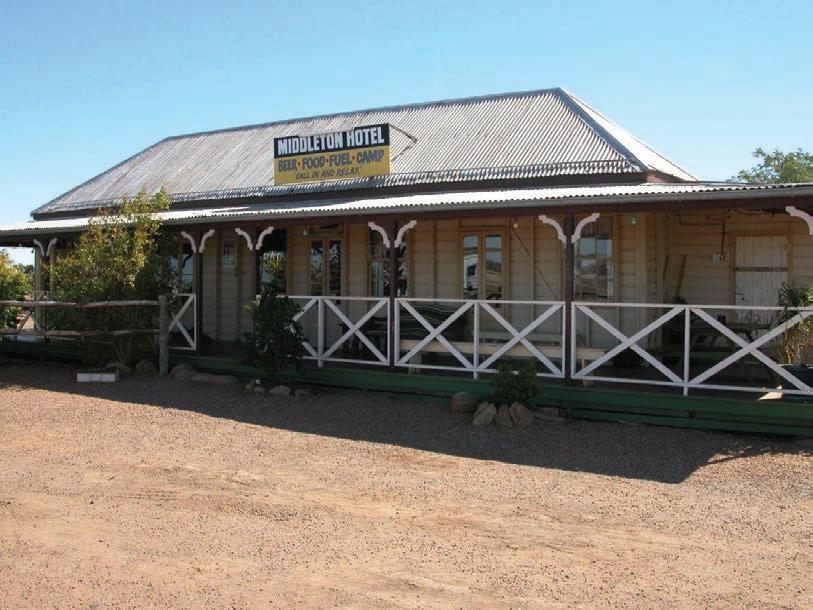
one told me.
Access is available on the north side however drivers from the south can also cross and pull into it.
Let’s hope the authorities see this and place a few signs nearby for our truckie mates.
Intersection danger
The intersection at the Coolgardie to Esperance and the Eyre Highways in WA is a genuine danger hotspot with reports coming to Spy of several near tragedies.
One long time truckie said he attempted to cross it at 9.40pm when a driver pulled out in front of him.
“I had to break to avoid a collision, and someone is going to get killed there,” he said.
Other truckies have reported similar dangerous acts there.
Overtaking achieved nothing
Spy hears that a heated conversation occurred on the CB radios after one driver overtook another in a dangerous manner near Norseman.
“I was doing the legal speed limit and the other fellow was speeding,” he said.
A few kilometres up the highway the driver who passed me
So the driver got onto his radio and the culprit asked, “What was your hurry?”
I hear there was no answer at first then a heated conversation occurred.
Convenient short bypass
A 12km road which connects the Bruce Highway and Hervey’s Range Road in Queensland is a very convenient bypass for many drivers.
Known as the “Black River Road” by many, the turnoff from the Bruce Highway is south of Bluewater.
Spy travelled it recently and saw a lot of trucks cruising along it.
Having said that it is not as busy as going further along the Bruce and turning onto the ring road.
Alcohol-free for cancer research
Many truckies around the country are taking part in the aptly named Dry July campaign.
This is a fundraiser which encourages participants to go alcohol-free in July to raise funds for people affected by cancer. Funds raised provide invaluable services for cancer patients, their families and carers –

whether it’s a lift to a life-saving appointment, guidance from a specialist nurse, connection to an informative voice, access to therapy programs or a bed close to treatment.
Some of the truckies Spy spoke to enjoy being part of it not only for the good cause, but also for their own health benefits.
The small hamlet of Geeveston in southern Tasmania was the location of filming of the ABC comedy Rosehaven but there is certainly no humour there for truckies is they get nabbed speeding.
Geeveston is located 62km south west of Hobart along the Huon Highway and is Australia’s most southerly administrative centre.
Around there a lot of apples and fruit are grown.
Near one entrance to the town there is an 80km/h speed limit and some of the driver contacts in the Apple Isle tell me they have been breached recently.
Rosehaven is an ABC Australian television comedy series created and written by Celia Pacquola and Luke McGregor who also star in the lead roles.
Several series were filmed there between 2016 to 2021.


Smoko lady popular at rest area
Numerous truckies have told Spy that they like stopping at a rest area located between Injune and Rolleston in Queensland. One of the biggest attractions is a smoko van which is often there.
“The rest area is at the top of the range and the food is good,” a NSW driver told me.
A Victorian driver doing an interstate run up north was told about the van by another truckie.
“I stopped there and it was great. Not many rest areas have smoko vans,” he said.
Falls by older drivers
In recent months Spy has heard of numerous truck drivers in the older age brackets who have had falls.
Some have resulted in medical treatment being required or even an admission to hospital.
An SA veteran who had some time off visited a fellow diver in Tugun who had a fall.
“My old mate is in hospital and required treatment,” he said.
Another driver who was wearing thongs slipped on a wet surface and suffered gravel rash.
A doctor I spoke to told me that older people having falls was common.
Time for a laugh
Old Spy has a sense of humour and this little ripper from the mouth of a Victorian driver I saw at a roadhouse parking area certainly brightened up my day.
The lad said he was having time off and was going to be taking a well earned holiday interstate.
“Do you both have a caravan to travel in?” I asked.
Quick as a flash the gent replied that his trouble and strife (wife) enjoyed the stars.
“So will you be taking a swag and sleeping under the stars at night,” I queued.
His reply was funny, “No my wife likes five stars and if not four stars – of the hotel type,” he said.
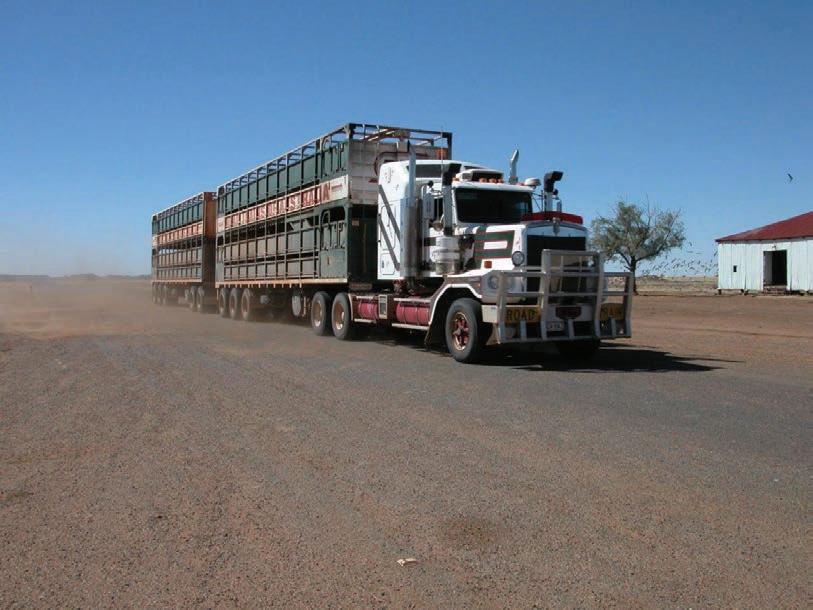

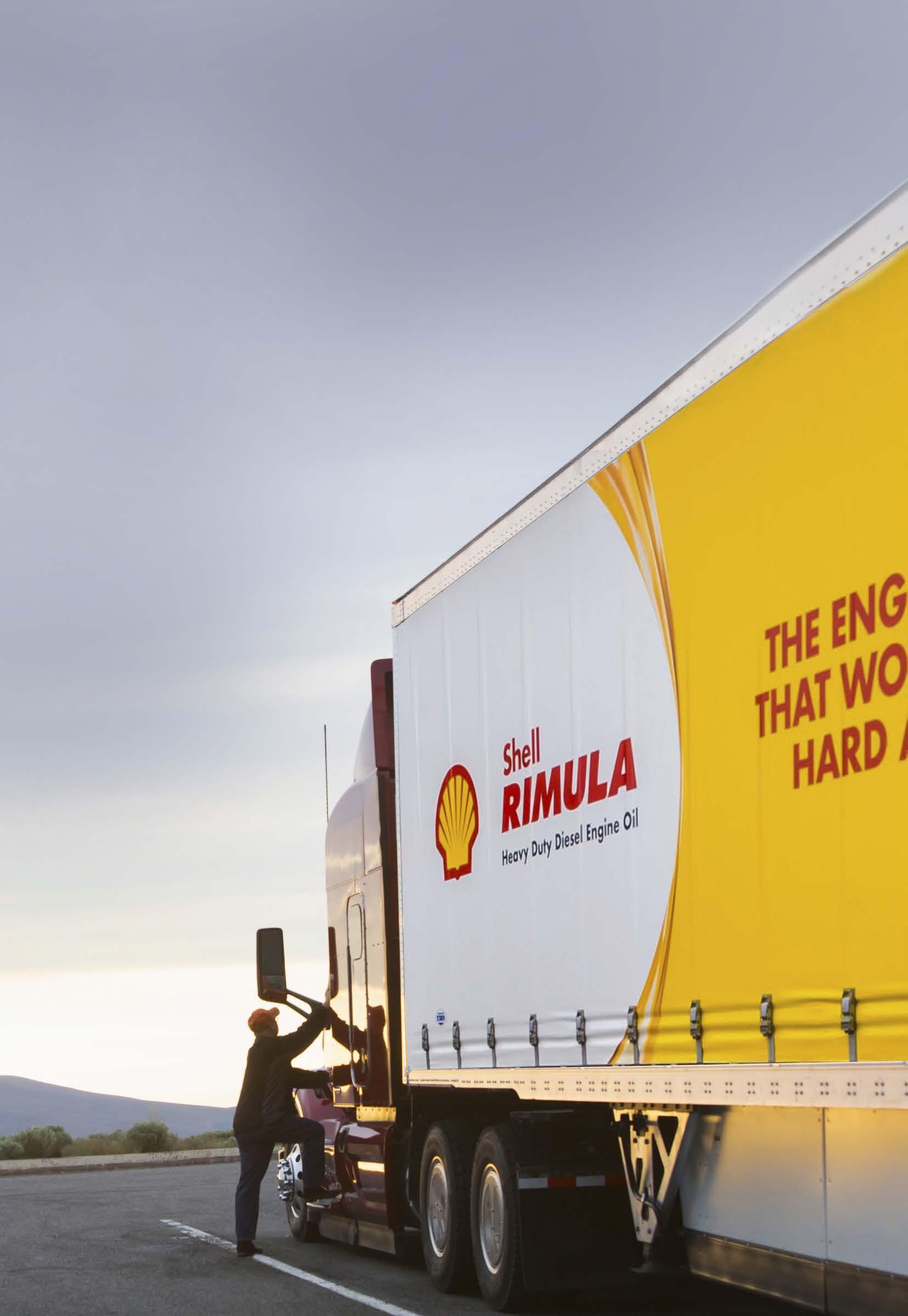

IN the competitive world of heavy transport, durability, reliability, and aesthetic appeal are non-negotiable qualities for truck accessories. At LELOX, we have made it our mission
to produce stainless steel mudguards that not only meet but exceed these demands. Our unwavering commitment to quality and innovation has positioned us at the forefront of
the industry, making our stainless-steel mudguards the gold standard.
What truly sets LELOX apart is our dedication to local manufacturing. Our stainless-steel
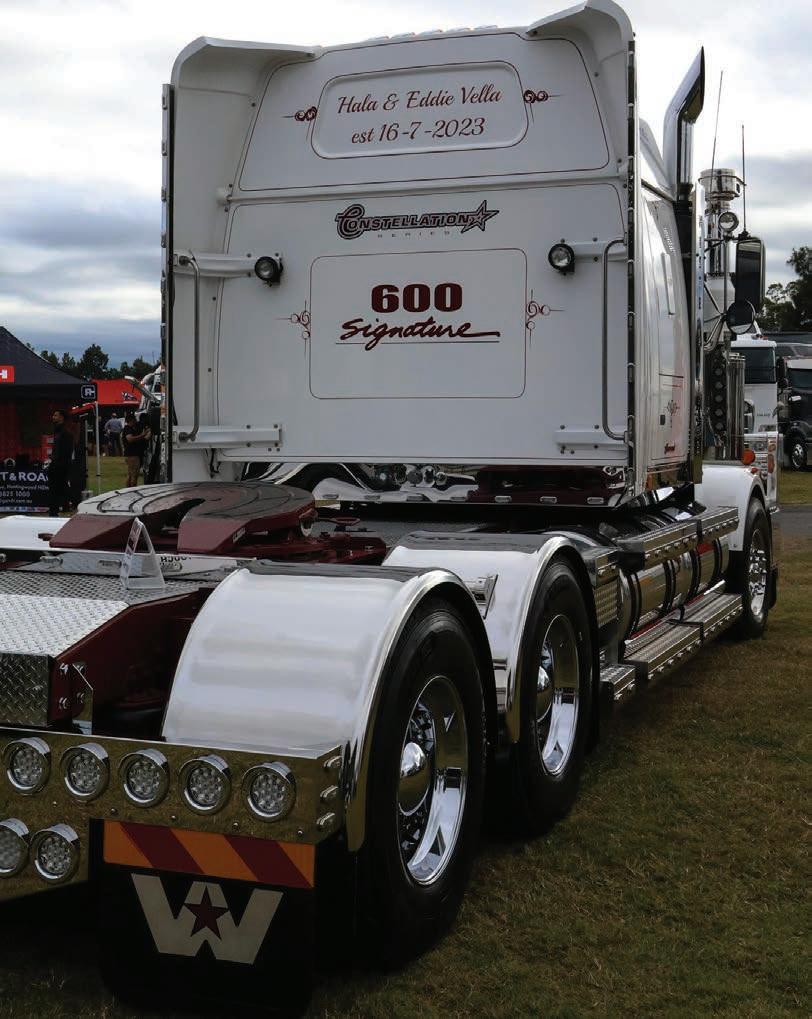
mudguards are the only ones of their kind made entirely in Australia. This commitment to Australian-made products is a cornerstone of our philosophy, reflecting our support for local industries and our belief in the superior quality of Australian craftsmanship. Each mudguard bears the hallmark of our commitment to local manufacturing, proudly displaying the LELOX logo as a testament to its origins.
Our Signature Series stainless steel mudguards are crafted from premium 304-grade stainless steel, a material known for its exceptional resistance to corrosion and wear. The choice of this high-quality material ensures that our mudguards can withstand the harshest of conditions, providing long-lasting protection for trucks. The 1.5mm thickness adds an extra layer of robustness, guaranteeing that our mudguards are not only durable but also capable of enduring the rigors of heavy-duty transport, but not too thick as to add additional weight to the vehicle.
The mirror Number 8 finish is another standout feature of our mudguards. This flawless, reflective surface not only enhances the visual appeal of trucks but also signifies the meticulous attention to detail and superior craftsmanship that LELOX is known for. Every mudguard is a testament to our commitment to excellence, embodying the perfect blend of functionality and aesthetics.
In an industry where innovation is key, LELOX continually strives to stay ahead of the curve. Our investment
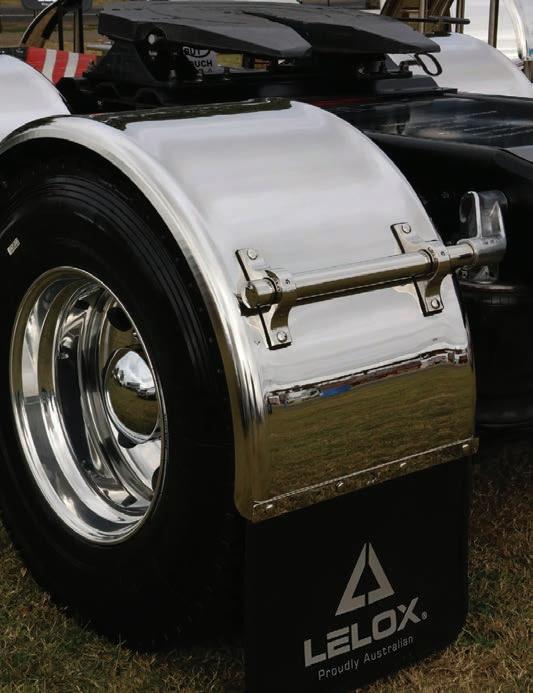
in cutting-edge technologies, underscores our commitment to maintaining a competitive edge. Investing in state-ofthe-art machinery allows us to achieve unparalleled precision and efficiency in our manufacturing processes, ensuring that our products meet the highest standards of quality and reliability.
Our proactive approach to adopting new technologies and methodologies extends beyond just manufacturing. We continually engage with our trusted distributors, engineers, and marketing experts to gather feedback and insights. This collaborative approach ensures that we remain responsive to market demands and are always poised to innovate and improve our products and services.
LELOX stands firmly on the principles of transparency and integrity. We believe in honest communication with our customers, providing them with products that deliver on every promise. This commitment to authenticity builds trust and

OUR sun-baked land relies on a massive national road tanker fleet to keep country towns and rural properties supplied with water during dry times. These tankers require efficient, high-quality self-priming pumps for both fast loading and unloading water.
One Australian company, Australian Pump Industries, understands the vital role these tankers play in keeping livestock alive and communities healthy. When a pump under
performs or worse still completely seizes, it leads to delays and missed opportunities.
A specialist in engine and hydraulic drive self-priming tanker pumps, the company has developed designs which are both innovative and have real benefits in terms of reducing maintenance costs!
A classic example is their range of cast iron, semi trash tanker pumps. These feature huge, non-clog style impellers that will easily handle solids of
up to 39mm. This means that when filling the tanker from a creek or dam, small stones will pass through the pump without clogging. The robust pumps feature high sg cast iron impellers and silicon carbide seals for durability. For abrasive water applications the pumps can even be supplied with stainless steel impellers.
Essential preventative maintenance
Even big trash pumps can clog, which is why Aussie incorporates a front opening port, located below the suction inlet flange. That easily accessible clean-out port enables the operator to promptly clean out the inside of the pump bowl in the event of a clog without dismantling the pipework.
“We design our self-priming pumps to be robust and simple to maintain,” said Aussie Pumps’ John Hales.
“We recommend a few visual checks to make sure that the pumps are running well and should an issue even look like it might be developing, these ‘no fuss’ pumps are simple to service too.”
Aussie Pumps recommends simple, visual inspections on the pumps be carried out on a weekly basis or, more frequently if it is operating continuously. For engine drive pumps, the engine will require regular oil changes and replacement air and fuel filters. Both Honda and Yanmar have extensive national service networks to assist.
Simple pump checks
In addition, Aussie Pumps recommends checking for leaks at the back seal of the pump, where it meets the engine shaft. If the pump has been left to run dry the mechanical seal will overheat and burn out. Water leaking here may eventually seep into the engine causing further damage.
While the pump is running, carry out a traditional vibration check. Put your hand on the pump to feel for any excessive movements and to listen for any unusual noises coming from the unit. Extensive vibration on engine drive pumps can be an indication that the engine mounts need replacing. Fuel spilt during refuelling can result in premature deterioration of
these rubber mounts.
Routine checks like these can prevent major catastrophic failures before pumps are allowed to “run themselves to death”.
Aussie Pumps has also introduced simple rejuvenation kits for all their self-priming pumps. The kits include all the elastomers and seals needed to service the pumps, making pump maintenance straightforward and fast.
loyalty, distinguishing us in the marketplace.
At LELOX, our customers are at the heart of everything we do. We understand the unique needs of the trucking industry and are dedicated to providing solutions that enhance both performance and aesthetics. Our strong distributor network ensures that our products are accessible nationwide, and our direct supply to the Kenworth factory for new trucks further validates the trust placed in our brand.
LELOX stainless steel mudguards are more than just a truck accessory; they are a symbol of Australian-made excellence, innovation, and reliability. Our unwavering commitment to quality craftsmanship, local manufacturing, and continuous improvement ensures that we remain ahead of the curve, setting the benchmark for the industry. Choose LELOX and experience the difference that true quality and innovation make on the open road.
They recommend that kits are held on hand for critical pumps to minimise downtime. Simply quote the CAT number of your pump and your Aussie Pump Distributor can supply the right rejuvenation kit for a value-packed price.
For more information contact Australian Pump Industries or Authorised Distributors throughout Australia.

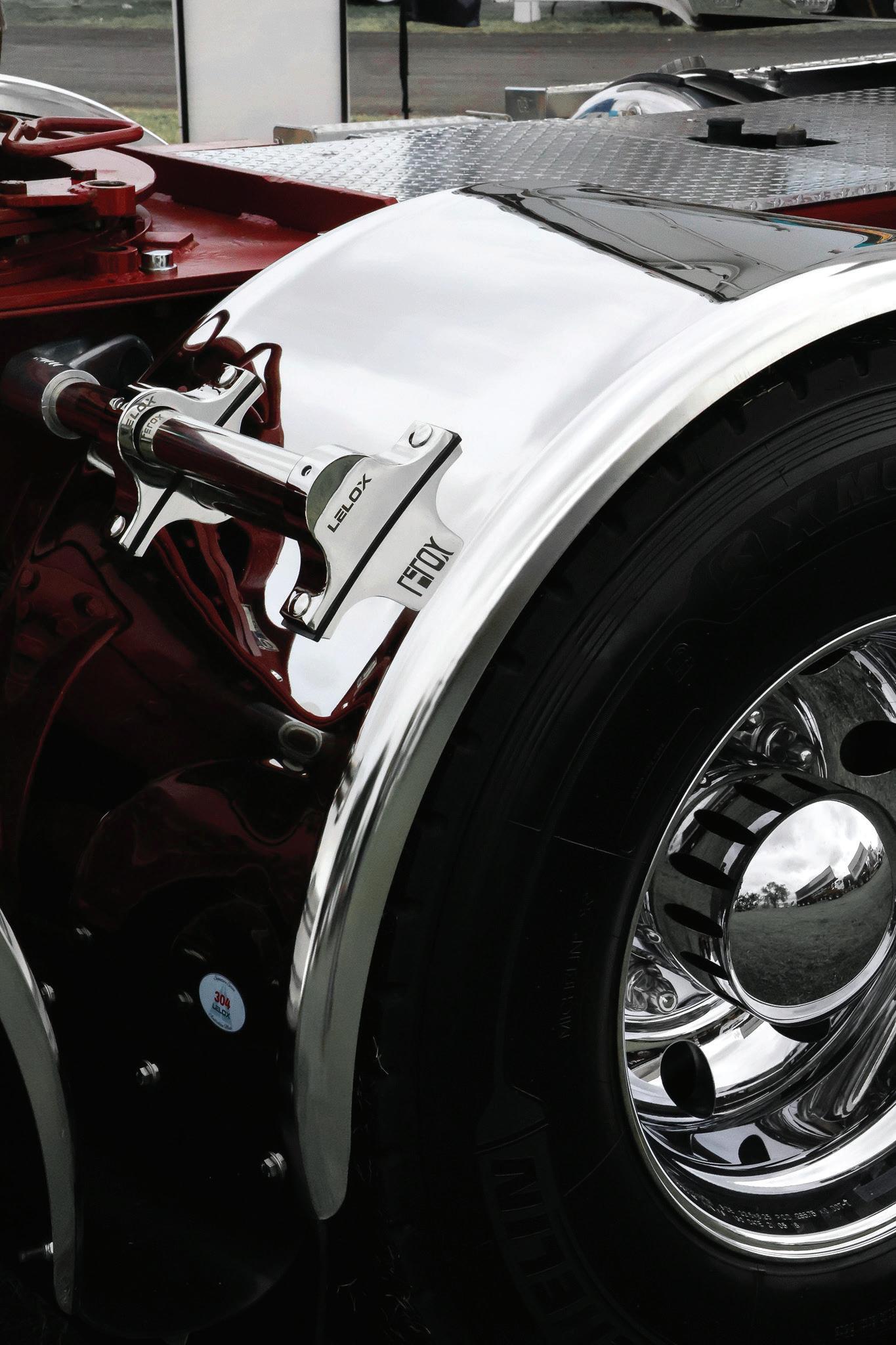

ON June 20, the winners of the 2024 Women in Industry Awards were announced during a gala dinner event at Doltone House in Sydney.
These annual awards aim to recognise women doing great things in their field across the transport, mining, manufacturing, engineering, logistics, bulk handling, waste management, rail and construction and infrastructure sectors. They acknowledge women who have achieved success through their invaluable leadership, innovation and commitment to their sector, contributing to growing the business or helping to shape the careers of others.
This year there were 164 nominations, with award winners judged by a panel of industry representatives, including Women in Trucking Australia (WITA) CEO Lyndal Denny, Transport Women Australia Ltd chair Jacquelene Brotherton, Women in Safety founder Alanna Ball and others.
Taking out the Excellence in Transport award was Anne Modderno, who is the first female managing director at Swietelsky, appointed in May 2023. Since then, Anne has made significant strides in

aligning the company’s operations with a new strategic direction. She also actively advocates for inclusivity and diversity within the transport sector, promoting initiatives to increase female participation and close the gender pay gap
The Excellence in Mining award went to Sinead Booth, head of decarbonisation delivery at Fortescue. Through her role she oversees the seamless integration of all innovative green equipment and energy systems within the company’s iron ore operations in the Pilbara. She has established pioneering programs aimed at bridging the gender gap in the mining sector, making significant strides towards gender eq-
uity. Beyond that, she has held leadership roles at the Gomo Foundation, dedicated to educating disadvantaged women in Africa.
Excellence in Construction was presented to Sinead Redmond, who is a qualified engineer and project manager, in the construction industry for over 18 years. As GeelongPort’s head of infrastructure delivery, she oversees the port’s engineering, asset management, and project management functions. To add, Sinead led the establishment of the first regional chapter of NAWIC, recognising the need for better female representation in construction, particularly in regional areas.
Allyson Woodford walked away with the Excellence in Engineering award. As the general manager of engineering
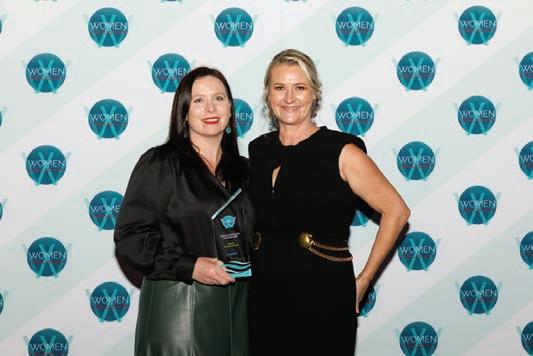
and planning at APA Group, Allyson leads approximately 355 people to support APA’s $22 billion worth of critical energy infrastructure across Australia. She has also created award-winning in-house leadership training programs for emerging engineering leaders; and has received recognition for leadership via national and international awards.
Taking home the Excellence in Manufacturing award was managing director of Health Focus Manufacturing, Derelle Mitchell. She founded the cosmetics manufacturing business in November 2011. From a small business of three staff,
she has built her company into a $10 million business, which will soon be launching a stateof-the-art manufacturing facility. As well as being committed to growing local manufacturing capability, Derelle is also firmly focused on advocating for women in the manufacturing industry.
The Excellence in Energy award went to Vesna Olles, director for clean energy and strategy at BOC South Pacific. Since coming into the role in October 2019, she has been committed to driving the company’s strategic direction in clean energy encompassing renewable hydrogen, alterna


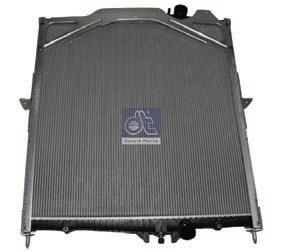
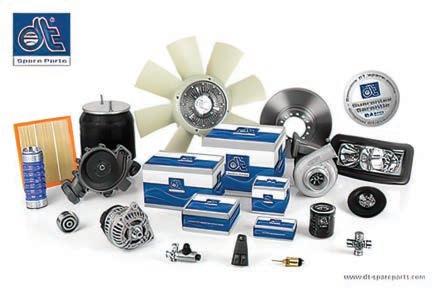
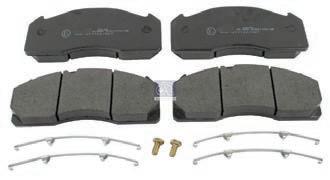
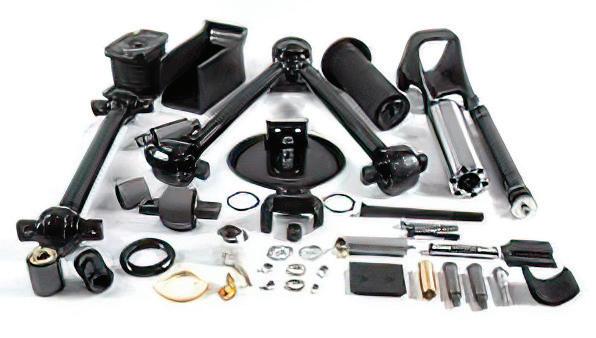
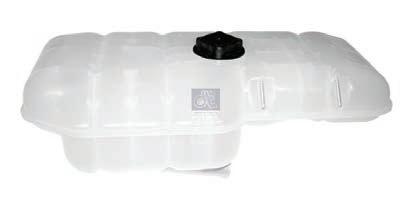
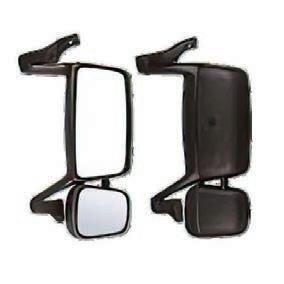
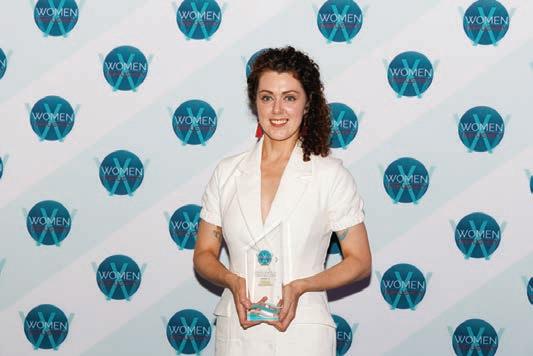
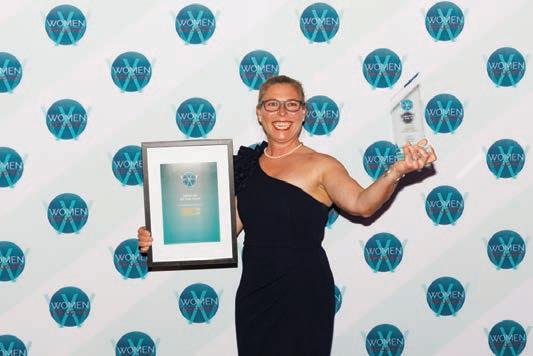
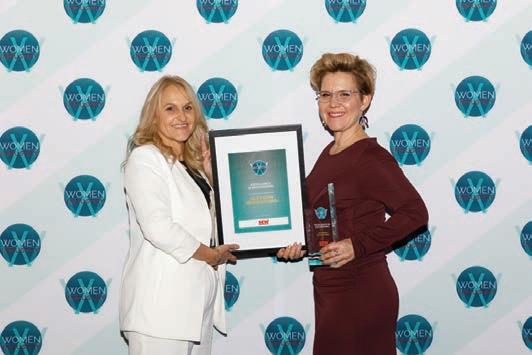
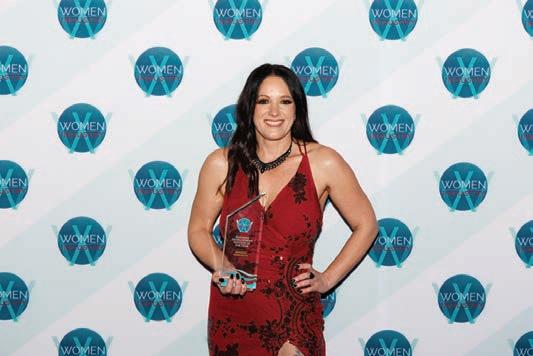



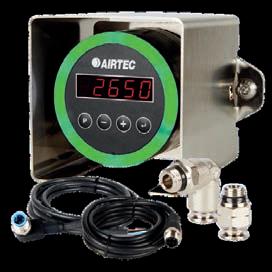

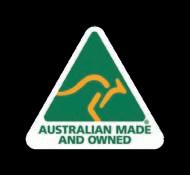


TELEMATICS and technology provider, WHG has partnered with Sleep Advice Technologies Srl (SAT) of Italy to launch a next-generation wearable platform designed to enhance driver safety and detect fatigue..
The collaboration aims to advance driver safety and innovation in the transport industry through the deployment of cutting-edge fatigue detection and wearable sensor technology, offering an evolved alternative to traditional in-cabin Driver Monitoring Systems (DMS).
WHG says the partnership aligns with its commitment to leveraging technology to create positive outcomes for its customers, communities, and people, supporting the ultimate goal of zero deaths on the road.
Sleep Advice Technologies has developed PREDICTS, a family of patented algorithms designed to predict fatigue and sleepiness in individuals.
Utilising real-time analysis of the autonomic nervous system, PREDICTS generates alarms to warn of impending
to drowsiness, well before the onset of sleep.
This technology has undergone comprehensive medical evaluation and validation in driving simulations, measuring the response of drivers in fatigue scenarios, and has been deployed in heavy-duty truck applications in Europe since January 2023.
The PREDICTS technology will be commercially available later this year, with four product variants integrated with smart sensor technology by Garmin. These products will support individual safety and fatigue features, making the technology easy to understand and adopt. It will be supported by a team of technical and scientific researchers and backed with 24/7 monitoring and alerts via WHG’s Control Centre.
The PREDICTS technology is designed to respond to both consumer and transport operator requirements, and will be available for after-market and OEM applications, supporting wearable sensors and contact sensors integration.
Dylan Hartley, WHG’s di
sised the significance of the WHG and Sleep Advice Technologies Partnership.
“Being a proudly Australian technology company, our vision has always centred around developing products that meet local needs while staying abreast of global industry trends. The integration of SAT’s PREDICTS technology into our ecosystem underscores our commitment to delivering leading safety technology solutions tailored for our customers. This partnership not only aligns with our goal of reducing accidents but also fortifies our position as a leader in the industry.”
The integration of SAT’s advanced PREDICTS fatigue detection technology into WHG’s comprehensive IoT and telematics ecosystem will provide transport operators with tools to monitor driver fatigue in real-time through wearable devices, offering comprehensive dashboards and reports powered by the iLink Air Platform. This partnership is particularly important as it incorporates Garmin wearables, enabling the PREDICTS algorithm, and allowing for seamless integration within WHG’s connected
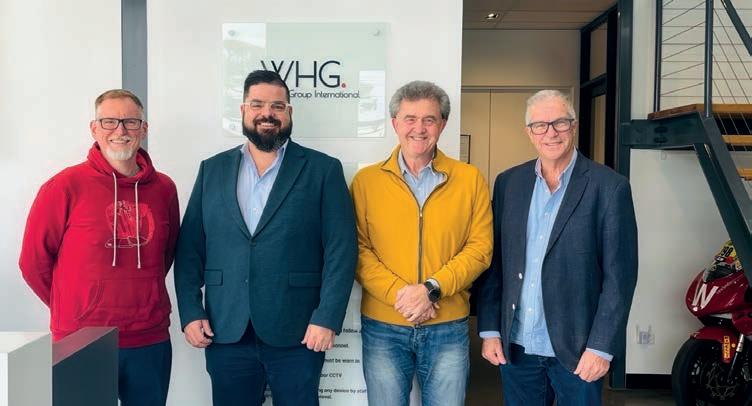
The Garmin Instinct 2 dēzl Edition smartwatch, designed specifically for those in the
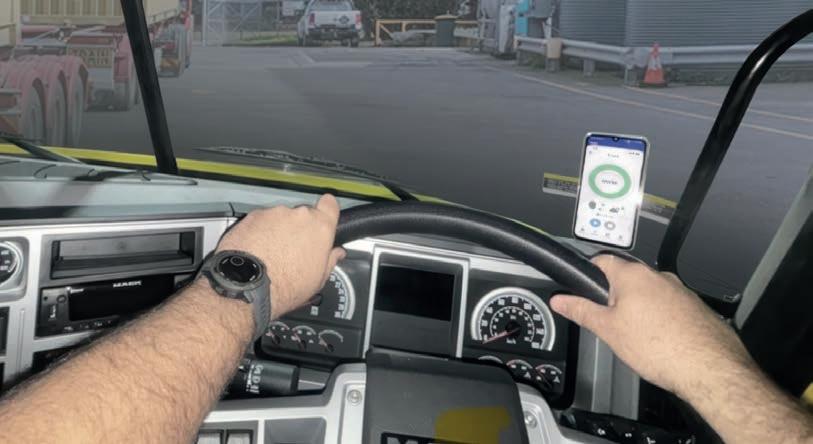
next generation of fatigue technology, available for vehicles today, and setting a foundation for next-generation automotive applications of tomorrow. This partnership represents the beginning of a technological journey capable of generating significant commercial development in the coming years.”
WHG’s end-to-end enterprise service and solution, combined with SAT’s predictive fatigue technology, will provide unparalleled support to the transport industry. As technology evolves, we unlock new ways to respond to industry concerns that have been seen with traditional Driver Monitoring Systems (DMS), which often face challenges like privacy concerns due to constant camera surveillance, high costs, and complicated training requirements. SAT’s PREDICTS technology addresses these issues with a simple, cost-effective wearable sensor and intelligent algorithm.
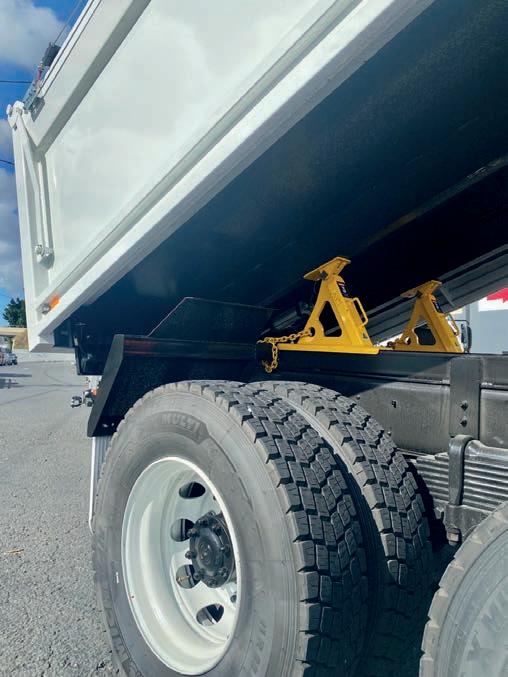
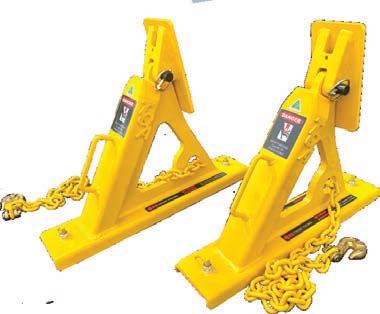
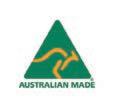

The partnership will see the PREDICTS products launched in Europe and Australasia, offering local, hands-on support with repre-
sentation in all major global markets.
This partnership is a testament to WHG’s commitment to addressing local technology needs within the ports, freight, transport, and road safety sec-
our efforts to reduce fatal accidents and improve overall road safety, making progress toward our ultimate goal of zero deaths on the road. For more information, please contact WHG on 1800 -

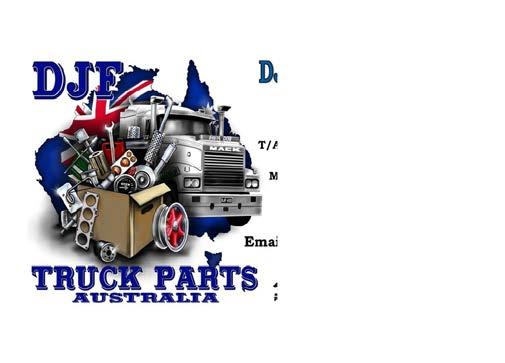

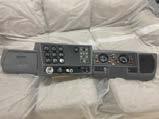

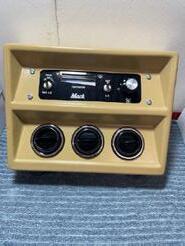

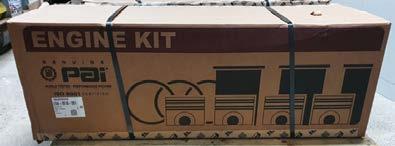

THE semi-trailer market in 2024 is poised for substantial growth, as indicated by the recent re port Robust Growth in 2024. This positive trend is anticipated to persist until 2032.
Central to this evolution are two pivotal themes: the increasing emphasis on environmental sustainability and integrating advanced technologies to enhance product quality and efficiency.
At the forefront of this transformative journey stands Bruce Rock Engineering, a prominent player in the road transport equipment industry since 1980, founded by Mike and Gay Verhoogt. They specialise in delivering top-notch trailer solutions across various sectors, such as agriculture, mining, construction, and logistics, while maintaining an
A steadfast dedication to sustainability and innovation is central to Bruce Rock Engineering’s ethos.
The company facilitates heightened productivity, augmented payload capacities, enhanced fuel efficiency, and a reduced ecological footprint by adopting lighter wheel solutions. Keenan Verhoogt, director at Bruce Rock Engineering, underscores this commitment, citing the selection of Alcoa Wheels for their innovative design, exceptional quality, and notably low weight.
Bruce Rock Engineering’s newest Forrestfield facility is an impressive 18,000 square-metres set up on a
40,000-square-metre site,
pany, Transbeam Industries, and features CNC higher-plasma laser piping, press breaks, and all the typical metal processing elements that are required for their in-house transport manufacturing.
The other part of the building is dedicated to chassis fabrication, which includes chassis rail beam machines, chassis and dolly fabrication, robotic welding of medium-sized componentry for draw bars and dollies, and a blast and paint facility as well.
The second building on the site is split in two for BRE’s repair, maintenance and refurbishing services.
It features 45-metre drive
LIKE any busy workshop owner, Phil Bunker is often stretched for time.
He’s the managing director of Heavylec, a truck repair business in Adelaide that specialises in auto electrical. He juggles managing a team of eight staff with keeping customers happy, staying on top of his business administration tasks, and getting his hands dirty installing air conditioning systems as and when required.
Anything that saves time or makes life a little bit easier is welcome.
That’s why Phil became a
Capricorn Member.
Capricorn is Australia’s largest automotive cooperative. It provides access to a wide range of Preferred Suppliers, finance, operations, diagnostics and business protection products and solutions to over 25,000 workshop owners across Australia and New Zealand.
Phil bought Heavylec 20 years ago as an established business. He said he was originally attracted to joining Capricorn because it gave him access to a wide range of suppliers he didn’t have a credit account with, and it had the
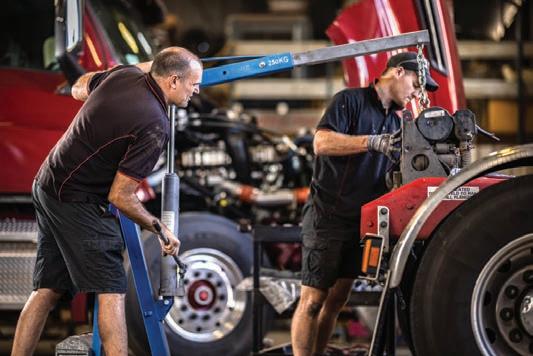
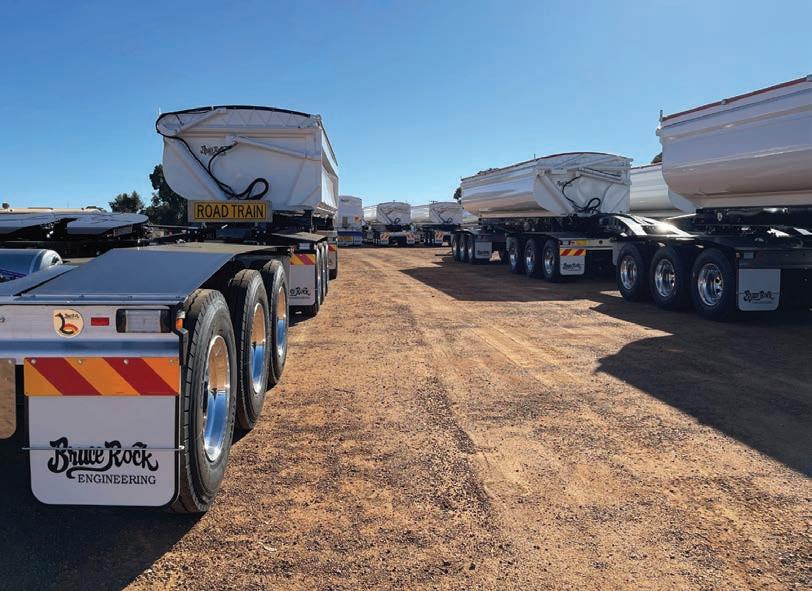
through bays that will accommodate 42-metre super triple combinations, three full-length pits with hydraulic platforms for BRE’s service and repair functions and a final assembly of dollies, general freight and refrigerated vans with a wash bay on the end of it.
In a landscape where new technologies are adding bulk to commercial vehicles, there’s a pressing need for lightweight and durable wheels. Ross Simmons, managing director of Howmet Wheel Systems Australia (the distributor of Alcoa Wheels), said: “Helping operators cut down on fuel use and carbon emissions is one of our biggest priorities, and we invest heavily in leading in the latest innovations to engineer lighter wheels.”
added bonus of reducing the amount of accounts administration he had to do because he would only have to pay one consolidated account at the end of the month.
“I first heard about Capricorn from a local Capricorn Member that I know who had been encouraging me to join for quite some time,” he said. “I sat down with the Capricorn area manager and he was able to answer my questions and help me identify how joining Capricorn could benefit my business.
“We’ve now been with Capricorn for 11 years and have found that the convenience of using a single trade account and having access to so many Preferred Suppliers has been great.
“Getting a trade price without having to identify yourself and being able to access parts easily are another two big pluses.”
Many of Phil’s big regular suppliers are with Capricorn, including NAPA, CoolDrive and JAS. But Capricorn doesn’t just help Members like Phil access spare parts – the cooperative’s list of Preferred Suppliers includes workshop equipment providers and business essentials suppliers for everything from
A shared vision of excellence and innovation
With over four decades of industry expertise, Bruce Rock Engineering is propelled by a vision that transcends mere leadership in the Australian road transport sector. Fuelled by values of excellence, integrity, and relentless pursuit of improvement, the company has forged strategic partnerships with suppliers of a similar calibre, exemplified by its collaboration with Alcoa Wheels. This alliance empowers Bruce Rock Engineering to deliver unparalleled Australian-made sustainable road transport solutions that embody innovation, quality, and unparalleled value.
in motion
The semi-trailer market isn’t just growing; it’s undergoing a
revolution, with sustainability leading the way. Industry leaders like Bruce Rock Engineering and Howmet Wheel Systems Australia are driving this change, creating a future that’s brighter, lighter, and more sustainable. As we dive into this new era, it’s clear that the future of semi-trailers isn’t just exciting; it’s ready for incredible success. So, buckle up and get ready for an amazing journey because sustainable semi-trailers are here to stay, and the opportunities are endless. Contact us at the Howmet Wheel system at 1800 955 191. You can also drop us an email at alcoawheels.sales@ howmet.com or visit alcoawheels.com.au. Also, don’t forget to follow Alcoa on Facebook at alcoawheelsaustralia for all the latest updates.
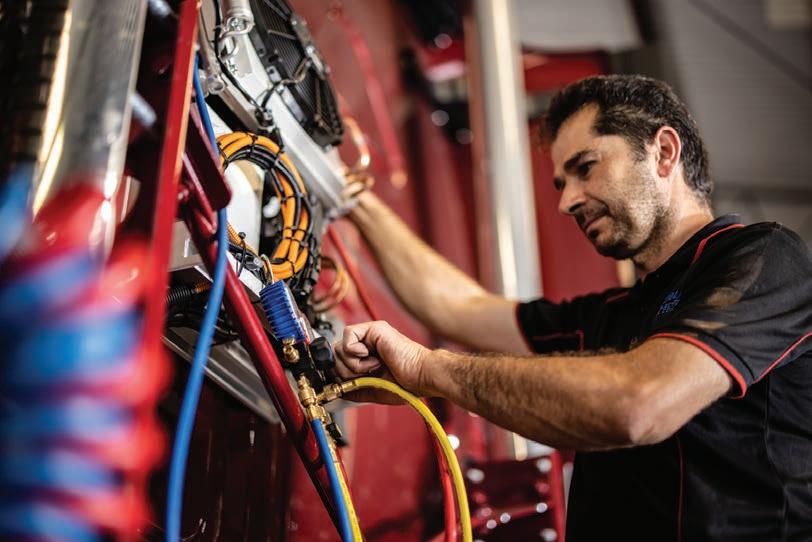
accounting services to telecom munications to training.
Phil said while his business doesn’t do a lot of work on cars – it’s a truck workshop, after all – the diversity of Preferred Suppliers he is able to access through Capricorn had given him the opportunity to take on a range of jobs he might not otherwise have accepted.
Being a cooperative, Capricorn is Member-owned. Phil said being a Capricorn shareholder has been beneficial. In 2023, Capricorn Members shared $82.8 million in both
monetary and non-monetary benefits (representing a 26.7 per cent return on every dollar spent with Capricorn), including a 7c per share ordinary dividend to shareholding Members.
Capricorn Members can access business, home and vehicle protection through Capricorn Mutual, and funding for purchases and business expansion with Member-only finance options. In 2022/23, Capricorn assisted Members by providing $49.8 million in loans.
Beyond the convenience of the trade account and access to
suppliers, Phil said as a Mem ber he always had the sense Capricorn was on his side.
“It’s been a good relationship and I look forward to it continuing,” he said. “Capricorn just makes life easier.” He urged other business owners in the trucking, heavy diesel, agricultural and mining sectors of the industry to take a close look at Capricorn to see what it could do for their businesses.
Learn more about how joining Capricorn could boost your business.
FOLLOWING the Austroads review of the Heavy Vehicle Licensing Framework, a Decision Regulation Impact Statement (Decision RIS) was considered and agreed to by infrastructure and transport ministers in late 2023.
The three changes that were given through in-principle agreement include: strengthening driving skill and knowledge, introducing experienced based progression options and strengthening training governance.
The current shortage of heavy vehicles drivers is severely impeding fleets to keep their trucks moving as there just aren’t enough people who possess the expected level of on-road experience required by employers.
Despite the outcomes of the Austroad’s review, implementation of any changes will take considerable time and resources. Meanwhile there are fleets that have trucks parked up due to not having safe, experienced job-ready drivers to fill the seats. In addition, any changes to the licensing framework will still not solve
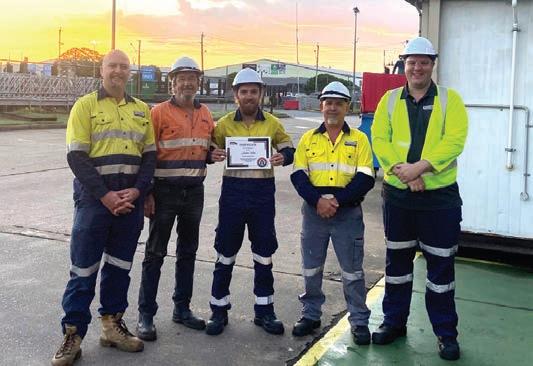
the on-road experience gap.
The only way that drivers can gain an adequate amount of on-road driving experience is while performing the freight task. This can only occur once they are employed. Currently there is also a shortage of businesses willing to take on newly licensed drivers of any class. The ageold thought that insurers won’t offer coverage for inexperienced drivers is no longer a barrier and hasn’t been for some time. According to Australia’s largest truck insurer,
National Transport Insurance, there are flexible solutions for fleets who proactively manage high risk drivers. If the driver shortage is to be overcome, both in the short and long term, the industry needs practical solutions that will benefit the industry. It’s time to think of what we can do rather than thinking of why we can’t.
The opportunity to create a pipeline of safe competent heavy vehicle drivers can be a reality. It can start with a de cision by business to invest in

training and the equipment needed to provide that essential supervised on-road driving experience that is the gap in the current training and licensing system.
With a requirement to perform up to 160 hours of on-road driving and freight task training (supervised), the QTA Heavy Vehicle Safe Driving Program is the most comprehensive practical driv er training program currently being offered in the country. The point of difference with this program is that em ployers lead the process by employing the drivers; and all the training takes place while on the job with an ex perienced driver mentor from within the business.
The program also includes two fully funded inde pendently assessed on-road and theory competency as sessments during the pro gram. On successful com pletion of the program, the employer is paid a financial subsidy to offset the cost of the supervision provided by
terest from employers who are willing to employ newly licensed drivers (of any class), have competent experienced drivers able to supervise and are willing to commit to the training program requirements. The program is particularly beneficial for employers upgrading drivers to higher licence classes. Graduates of this program can move into a Heavy Vehicle Driver Apprenticeship to obtain a professional trade qualification. For further information or to express interest, please contact Lisa Fraser by emailing lisa@qta.com.au or visit qta.com.au/projects.
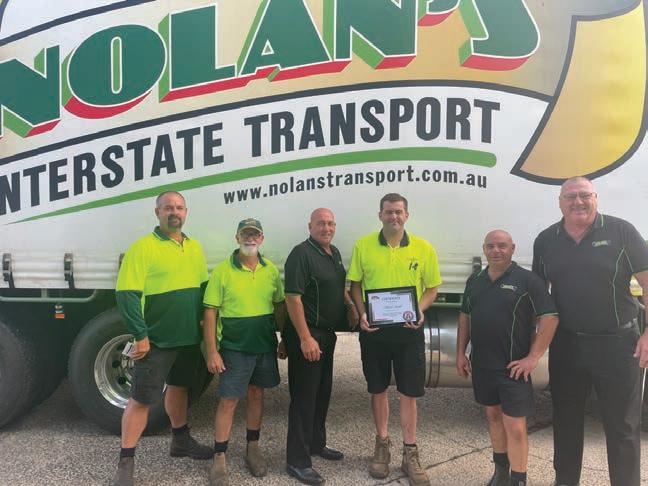



NEPEAN Transport Equip-
ment is thrilled to announce that its valued client, Ross Transport, has recently taken delivery of a brand-new, full-version NEPEAN Trans-
port Roller Brake Tester, complete with shaker units and a compact scissor jack – all contained in one, Aussie-made package.
This state-of-the-art equip-
ment is already playing a crucial role in helping Ross Transport maintain compliance and ensure their truck and trailer brakes are always in top condition.

Tackling the toughest terrain with confidence Wollongong, renowned for its challenging routes such as the steep 6km descent on Mount Ousley Road, is one of the toughest regions in Australia for truck and trailer brakes.
In such demanding conditions, having the right tools to ensure equipment remains in peak condition is imperative.
Ross Transport’s new NEPEAN Transport Roller Brake Tester is designed to handle these challenges with ease, providing reliable performance and peace of mind.
Supporting local jobs and manufacturing
Our equipment is locally made, demonstrating our commitment to supporting Australian jobs and local manufacturing. With over 25 years of experience refining our designs, our equipment is trusted by organisations of all sizes, including NHVR, Linfox, Veolia, and various transport and bus operators across the nation. Our goal is to help our clients operate safely, reduce service fault-finding time, and save money.
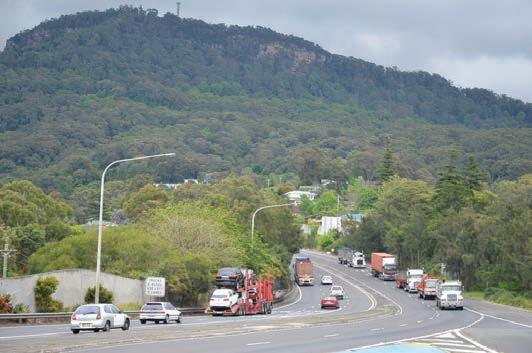
During the commissioning of Ross Transport’s new equipment, we demonstrated its effectiveness by diagnosing a broken drive spring centre bolt – a notoriously difficult issue to pinpoint. A regular driver reported a strange vibration, and despite a technician’s thorough check, no visible issues were found. After a test drive, the truck was run onto our unit, which quickly identified the broken bolt. The issue was promptly repaired,
and the truck was re-tested and returned to service in optimal condition. This swift diagnosis not only saved time and money but also ensured maximum fleet utilisation.
For more information, please contact our team at NEPEAN Transport Equipment by emailing vis@nepeantransport.com or calling 02 4647 6868. Enhance your fleet’s safety and efficiency with NEPEAN Transport Equipment’s innovative solutions – where Australian-made quality meets cutting-edge technology

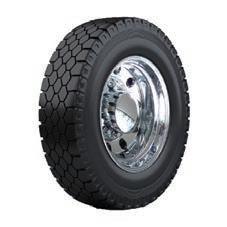

AS it continues to bolster its aftermarket offering, Cummins Meritor has now expanded its red range with a new series of brake camshafts.
The company remains focused on significantly growing its aftermarket presence – and it’s making major strides in expanding its product offering.
The red range is a quality aftermarket range of braking components for all makes of heavy vehicles, which targets value-conscious customers.
It began as an Australian initiative to take the experience and knowledge of Meritor’s vast expertise in supplying OEM truck, trailer and bus manufacturers to develop a range of essential serviceable brake components to complement the existing genuine product as an all makes value-based proposition. All products in the range are painted a distinctive red colour.
Development of the range was led by Cummins Meritor’s local product and engineering teams. This included benchmarking existing aftermarket competition to ensure the product meets customer expectations for quality and reliability as well as trials with
local fleets here in Australia.
That gives the team the ability to respond to customer feedback and deliver product enhancements to suit the market. The red paint is also a sign that the parts have passed Cummins-Meritor’s stringent global product approval requirements.
The red range is being updated regularly and now includes brake drums, brake chambers and manual slack adjusters.
The brake camshafts are just the newest addition to the red range. With 14 Meritor Q+ brake applications currently available, the brand is looking to have a range of 34 parts on offer by the end of 2024.
Featuring induction hardened splines for longer life, they are manufactured to go the distance – and backed by a one-year unlimited kilometre warranty. Camshaft repair kits are also available to suit a variety of applications. When replacing a camshaft, it is recommended to also replace the seals and bushings as well.
“We’ve been having a lot of success with the red product range,” revealed product manager for Cummins Meritor, Mahendranath Gogineni.
“Although we developed this range before Cummins acquired us, thankfully we’ve been able to continue with the distinctive red paint which makes these parts stand out on the display shelves.”
Mahendranath says the success of the product range is aided by a proven quality history, taking on customer feedback and ensuring good stock availability in the warehouse.
“These products are also fully supported by experienced field-based sales and technical customer support teams,” he added. “Customers can have peace of mind knowing they’ll receive the same level of service as they would have if they purchased a Meritor genuine product.”
As a leader in axle and braking systems for heavy vehicles, Cummins Meritor currently services over 300 heavy vehicle outlets across the country, including all major truck OEMs.
Major truck and trailer parts supplier Tranzmile is among the stockists of the Meritor red range. Managing director at Tranzmile, Cameron Black, said, “Tranzmile stocks the Meritor red range as we be-
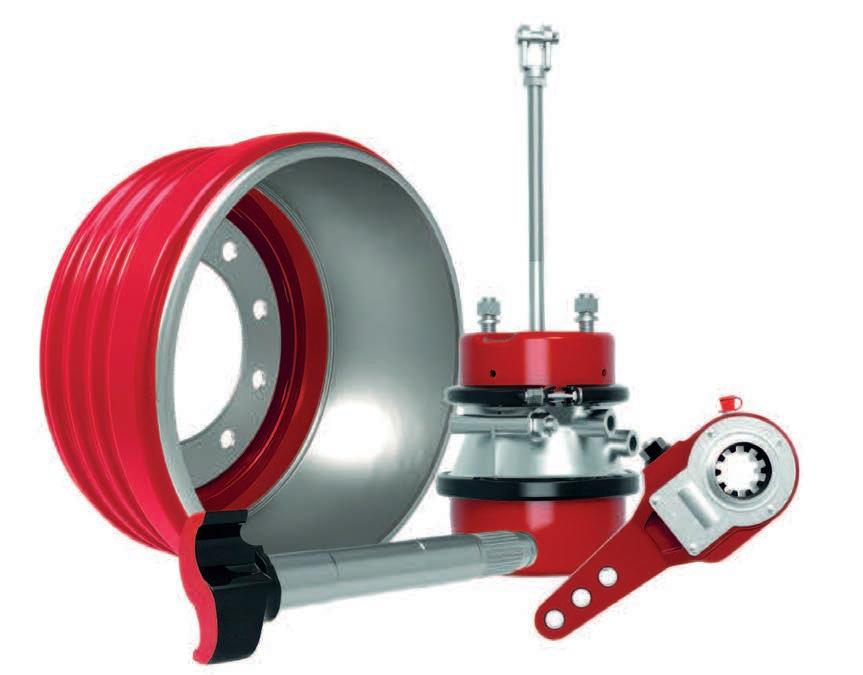
lieve in supplying our customers the industry’s best products. With Meritor we know
we are supplying products that have been tried and tested by some of the best truck and trailer engineers in the world, and that counts a lot for us and our customers.”
PACCAR Parts has officially opened its new Parts Distribution Centre (PDC) in the Brisbane logistics hub of Berrinba, south of the Brisbane CBD.
The company opened its first Brisbane PDC just six years ago but has quickly outgrown the space due to the phenomenal growth in the PACCAR dealer network.
The larger facility allows the Brisbane PDC to stock a wider range of part numbers to support dealers and customers.
The expansion project required relocating all racking and stock from the old distribution centre to the new facil-
ity over an eight-week period with over 16,000 different part location to move.
The facility remained fully operational during this time, ensuring that dealer service levels were sustained. The PDC expanded from a 6000 square metre to a 12,400-square metre facility, including the addition of a large external canopy ensuring preservation of product during the loading and unloading process.
Following the move, the new Brisbane PDC has over 20,000 part locations across a mix of racking and bulk floor storage locations, with 3500 of those locations added during the site relocation through
installing new racking aisles, substantially increasing the density of storage locations in existing aisles.
“I am extremely proud to be part of this driven and dedicated team who worked tirelessly to successfully achieve our facility relocation, whilst maintaining service levels to our dealer network, said Chris Fillingham, PDC manager, PACCAR Parts Brisbane.
“We are already leveraging the benefits of the additional space the new site offers, having increased our inventory holding to improve our parts availability and support customer uptime.
“I would like to highlight

the dedication, efforts and determination of the whole team in Brisbane who undertook this warehouse move and achieved it on schedule, whilst maintaining the integrity of our stock when we relocated it, ensuring each part in each location that we moved was counted.”
The Brisbane PDC primarily supports 23 dealer locations throughout Queensland and mid-Northern New South Wales.
The larger space allows the facility to hold a wider range of SKUs as well as additional stock of existing parts – reducing lead times and increasing availability.

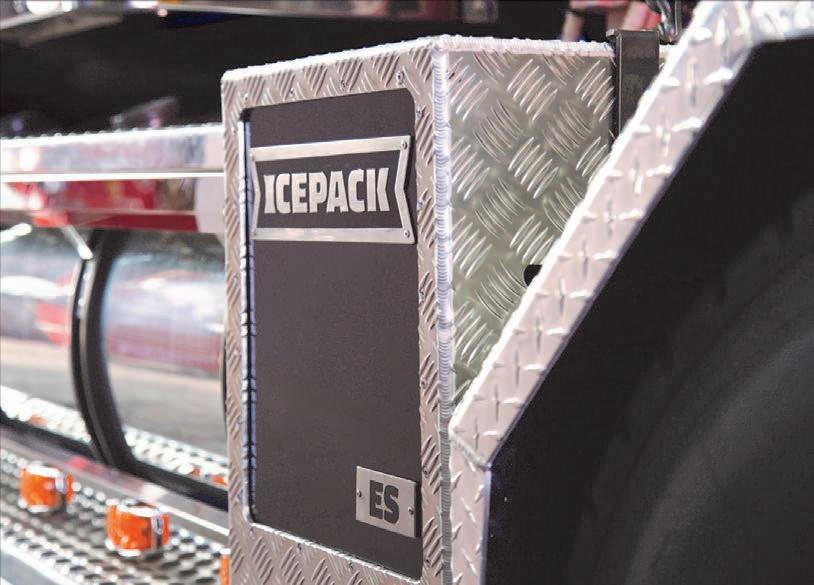


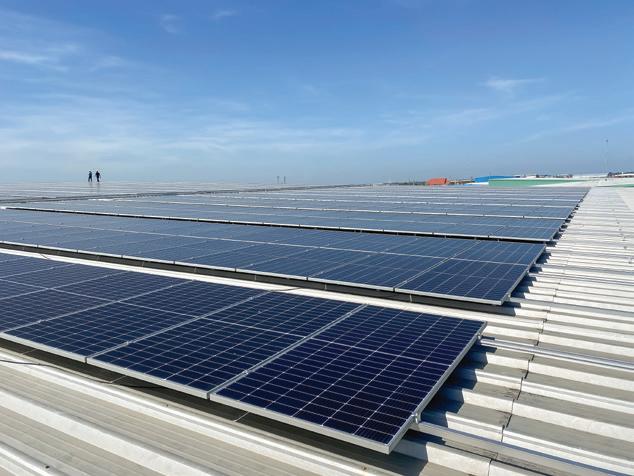



BY HUBFLEET
FOR Australian fleet managers, adherence to the National Heavy Vehicle Accreditation Scheme (NHVAS) is not merely a choice, but a necessity for maintaining operational excellence, mitigating risks, and fostering a culture of continuous improvement within their fleets.
NHVAS Fatigue Management Standard 6, with its focus on record keeping, is a key element in achieving these goals.
Here at Hubfleet, we’ve partnered with Glyn Castanelli, who is an NHVR approved auditor from Transport Health and Safety, to delve into the seven fatigue management standards established by the NHVR.
Our goal is to provide insight into what these standards mean and how transport companies can implement practical systems to fulfill their obligations under the Heavy Vehicle National Law (HVNL).
In this article, we’ll explore the significance of Standard 6, provide insights into meeting its requirements, and discuss how innovative solutions like Hubfleet software can assist.
Understanding NHVAS Standard 6: records and documentation
NHVAS Standard 6 emphasises the importance of maintaining accurate and up-to-date records and documentation related to fatigue management within fleet operations.
This standard serves as a cornerstone for demonstrating compliance with NHVAS requirements and ensuring that fleet managers have the necessary information to monitor and manage driver fatigue effectively.
Key aspects of Standard 6 include:
1. Driver work diaries: Fleet managers must ensure that drivers maintain accurate work diaries or logbooks, documenting their driving hours, rest breaks, and other relevant information in accordance with regulatory requirements.
2. Vehicle inspection records: NHVAS Standard 6 also mandates the maintenance of detailed records of vehicle inspections, servicing, and maintenance activities, including any repairs or modifications related to fatigue management systems.
3. Training and certification records: Fleet managers are responsible for maintaining records of driver training and certification related to fatigue management, ensuring that drivers receive the necessary education and
4.
NHVAS Standard 6 requires fleet managers to maintain an audit trail of all records and documentation related to fatigue management, demonstrating compliance with regulatory requirements and facilitating regulatory inspections.
Meeting NHVAS Standard 6 requires a proactive approach to record-keeping and documentation management.
Glyn Castanelli has spent over 30 years in the heavy vehicle transport industry in many roles including his current role as an NHVR Accredited Auditor at Transport Health and Safety.
Glyn has the following practical tips for fleet managers:
• Implement digital solutions: Embrace digital tools and
streamline record-keeping processes and ensure data accuracy and accessibility.
• Train personnel: Provide comprehensive training to personnel responsible for maintaining records and documentation, ensuring they understand the regulatory requirements and best practices for compliance.
• Regular audits: Conduct regular audits of record-keeping practices to identify any deficiencies or areas for improvement and implement corrective actions as necessary.
• Stay updated: Stay informed about changes to NHVAS requirements and regulatory standards related to fatigue management, ensuring that record-keeping practices remain compliant with current regulations.
streamlining record-keeping and documentation processes and ensuring compliance with NHVAS Standard 6.
Here’s how Hubfleet can assist fleet managers in meeting the compliance standard:
• Electronic work diaries: Hubfleet provides electronic work diary functionality, allowing drivers to record their driving hours and rest breaks digitally, ensuring accuracy and compliance with regulatory requirements.
• Maintenance records: Hubfleet enables fleet managers to maintain detailed records of vehicle inspections, servicing, and maintenance activities, ensuring that fatigue management systems are properly maintained and operational.
• Training management: Hubfleet facilitates the management of driver cords, ensuring that drivers -
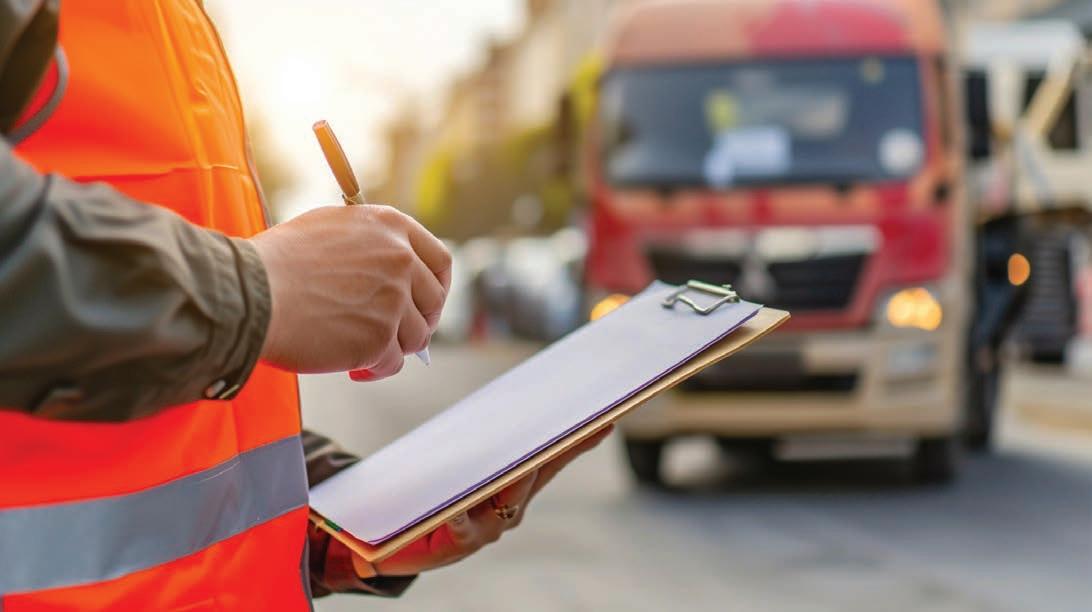

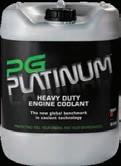
cation and qualifications to manage fatigue effectively.
• Centralised documentation: Hubfleet serves as a centralized repository for all records and documentation related to fatigue management, providing easy access and retrieval during regulatory inspections.
By incorporating Hubfleet software into their operations, fleet managers can streamline record-keeping and documentation processes, enhance compliance with NHVAS Standard 6, and ultimately contribute to safer roads and more efficient fleet management practices.
NHVAS Standard 6 underscores the importance of meticulous record-keeping and comprehensive documentation in fatigue management within fleet operations. By adhering to the requirements outlined in Standard 6 and leveraging innovative solutions like Hubfleet software, fleet managers can streamline record-keeping processes, ensure compliance with regulatory requirements, and ultimately promote safety and efficiency on the roads.
Embracing a proactive approach to records and documentation not only mitigates regulatory risks but also enhances operational transparency and accountability, benefiting drivers, stakeholders, and the broader community alike.
Disclaimer: This article offers general guidance. For specific legal advice and detailed information on Fatigue Management Accreditation, always consult the National Heavy Vehicle Regulator (NHVR) website or an accredited legal advisor.
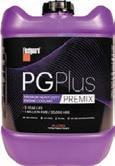
MAN is offering operators the chance to “own a MAN with confidence” as part of a sale on its ‘MANumental’ program.
The MANumental program includes upfront factory rebates, driveline warranties, entire vehicle warranties, and discounted contract maintenance packages.
Available until July 31 across Australia, trucks sold as part of the MANumental sale also include a full safety pack, telematics (hardware only), and roadside assist packages.
In addition, each MANumental offer includes the following:
MAN TGX 26.580 & MAN TGX 26.640
• $15,000 upfront factory rebate
• 5-year / 1,000,000 km driveline warranty
• 3-year / 600,000 km entire vehicle warranty
MAN TGX 26.510 & MAN TGX 26.540
• $15,000 upfront factory rebate
• 5-year / 1,000,000 km
driveline warranty
• 3-year / 450,000 km entire vehicle warranty
MAN TGS 26.510 & MAN TGS 26.540
• $15,000 upfront factory rebate
• 5-year / 800,000 km driveline warranty
• 3-year / 450,000 km entire vehicle warranty
MAN TGS 26.440
• $15,000 upfront factory rebate
• 5-year / 500,000 km driveline warranty
• 4-year / 400,000 km entire vehicle warranty
Head of MAN Truck & Bus at Penske Australia, Derek Schroff, said: “The MAN truck generation range boasts excellent driver fit, great efficiency and economy features, optimised uptime, and makes for a strong business partner.
“The MANumental program builds on the already remarkable solution MAN offers customers by adding confidence through warranties, telematics, roadside assist, and the safety package.
“Additionally, customers
CUSTOMERS CAN COUNT ON A FACTORY REBATE AND DISCOUNTED MAINTENANCE PACKAGES TO PLACE FUNDS BACK INTO THEIR OPERATIONS.”
DEREK SCHROFF
can count on a factory rebate and discounted maintenance packages to place funds back into their operations.”
This year also presents a significant milestone in the history of MAN: 100 years of diesel technology. In 1924, MAN manufactured the first truck anywhere in the world featuring direct diesel fuel in jection.
“Penske Australia & New Zealand is proud to join MAN in celebrating 100 years of diesel technology,” said Schroff.
“This is just one of many milestones in MAN’s storied history, and today, that inno vative spirit is as prevalent as ever.
“From driver fit innovations such as SmartSelect to programmable door switches, MAN continues to create many firsts in the industry.
“The MAN range of trucks
is sure to impress the most prudent of truck critics and has been a game changer with our customers who are now running these trucks in their businesses.”
To learn more about MANumental and read T&Cs, visit: https://www. man.eu/au/en/about-us/ company/promotions/manumental-sales-promo.html
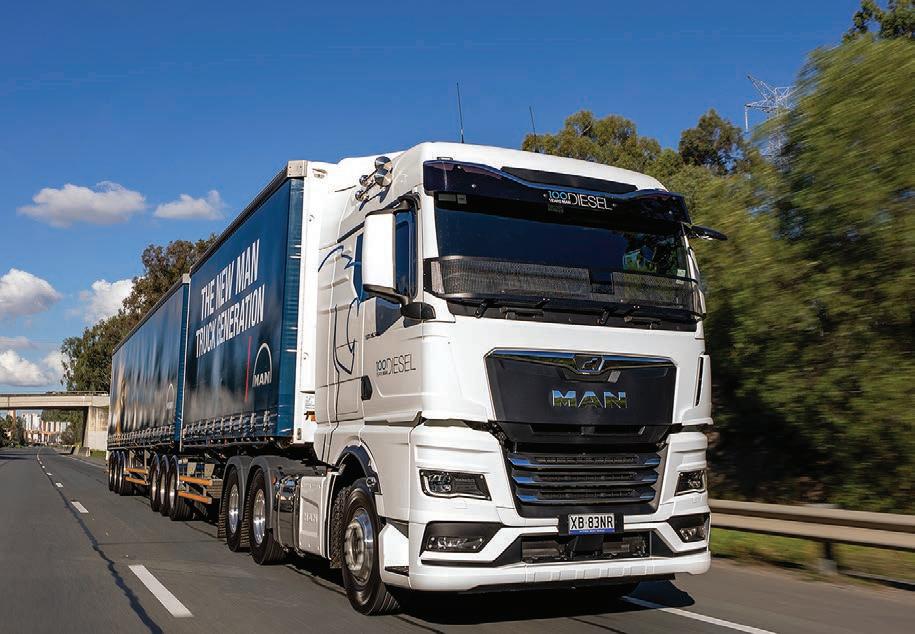
• Carry out periodic checks to ensure the load hasn’t shifted and is secure
From sharing just one truck at the beginning, father and son combination Dean and Ian McMillan have built McMillan & Sons Haulage from the ground up.
McMillan & Sons Haulage is a fleet of Lusty EMS tipper combinations from MaxiTRANS, which have been delivering lower tare weights and increased payloads for its agricultural transport operations.
McMillan & Sons Haulage, based in South Australia, is a family-run transport company which specialises in the cartage of bulk products such as grain, fertiliser, gravel and almonds across Australia.
The business began as a joint partnership between Ian McMillan and his father, Dean, who both set out with tipper work in 2010 under a contract for Garden Grove, another family-owned and operated business in SA.
This put McMillan & Sons Haulage on the right path for the years to follow.
“Dad was driving full-time and I was running the books,” Ian says.
“After six months of seeing how things were going, I told
Dad I was interested in coming onboard as a driver for the business as well. We continued to work together and we kept progressing from there.”
In 2016, when Ian and his father were considering doing their own direct work for grain traders, they approached Australian Grain Export.
This saw McMillan & Sons Haulage begin transporting grain for the company across Australia, which Ian says turned out to be a major growth revenue for the business.
“That was one of the best business decisions we ever made,” he says.
“We’ve been with them ever since. We do 90 per cent of their grain in SA as well as some internal work, and we also export for their domestic markets. It has been pretty beneficial for both of us.”
Together, Dean and Ian built McMillan & Sons Haulage from the ground up. From sharing just one truck between
them both at the beginning, they expanded the fleet to ac commodate a range of Lusty EMS units with the help of MaxiTRANS SA.
These include two A-double sets, both made up of Lusty EMS Lead Chassis Tippers in slider configurations with Chassis Tipper B trailers and matching dollies, as well as a Lusty EMS AB-triple combi nation consisting of a Chassis Tipper, another dolly and a Stag B-double.
The combinations were all deployed to travel predomi nantly within SA through Port Lincoln, Dublin, Loxton and Pinnaroo, but they also find themselves in several other areas across Australia includ ing Gladstone in Queensland, Hillston and Boolaroo in New South Wales, Ardross and Roseworthy in Western Australia, and Mornington Peninsula in Victoria.

“A lot of mills in the domestic market rely on grain intake all year round, so that’s
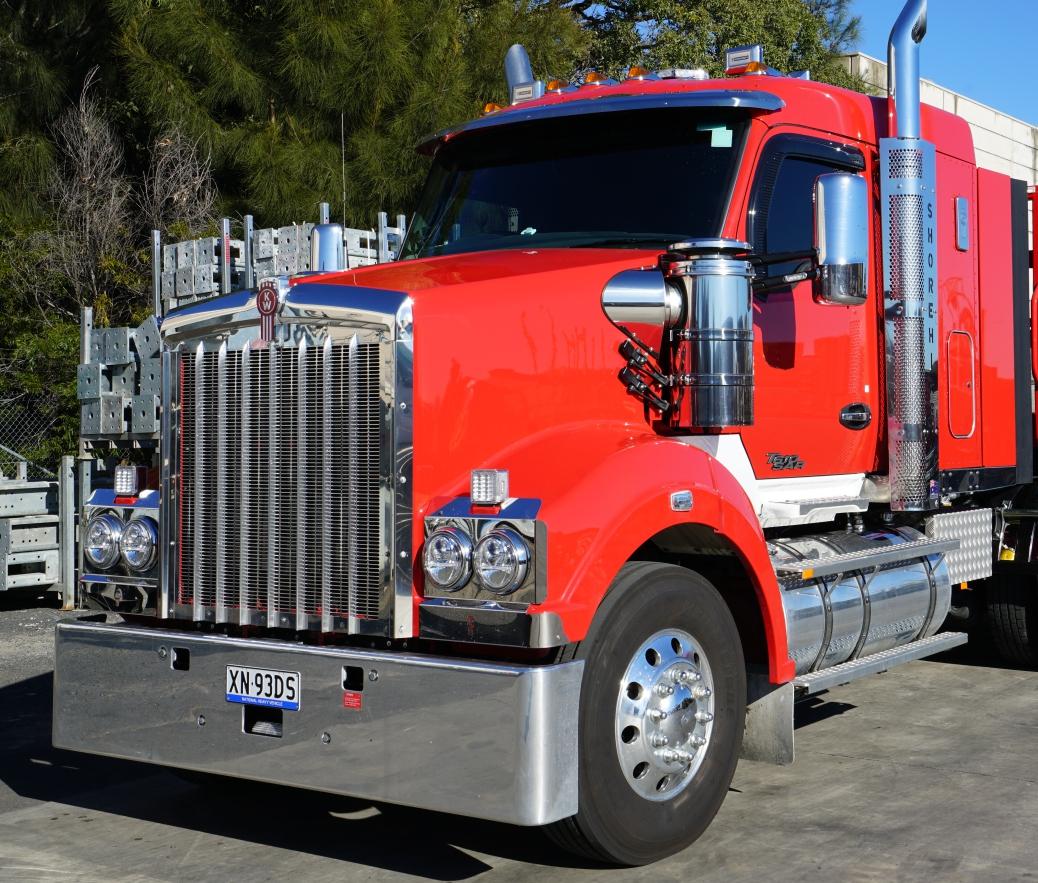
the main job we use the Lusty EMS trailers for,” Ian says.
“There are some export jobs that come up when boats and vessels come into the ports, so
the trailers go and do a fair bit of that as well.”
Having put his Lusty EMS combinations to the test all around the country in these
Invictus Legal is a leading criminal law firm
operations, Ian has found the tippers to be very durable and well-built.
At the same time, he says they have a light tare weight






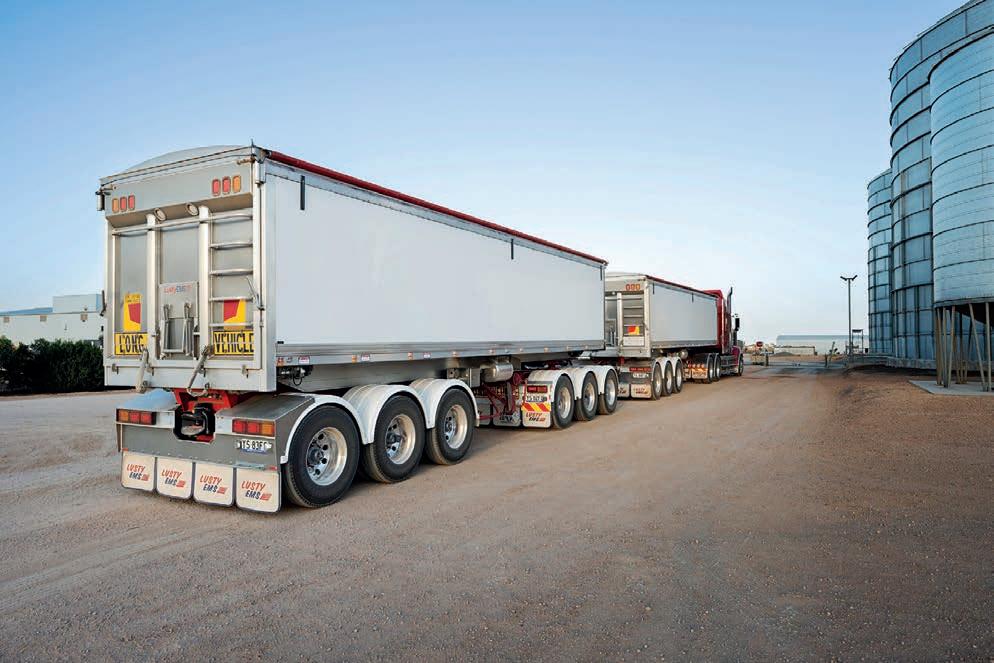
without sacrificing payload.
“The AB-triple setup nets about 72 tonnes and the A-doubles about 61 tonnes, so the payload increase in the last few years has been another significant change in the business,” he says.
The higher payloads, Ian says, have been seen especially with the Stag B-double.
“We think the Stags are the ideal combination for the job, because they result in pretty good payloads,” he says.
“They’re very universal as well. You can do grain, fertiliser and gravel and tip off without having to unhook them.”
At the same time, Ian says the Chassis Tippers come with
everything that a driver could want.
Their prominent features include flip over bars, submarine doors, tailgate spreader chains, a removable chute, an air operated tailgate, a heavy-duty tailgate lock rod and fingers which prevent grain from leaking and a one-piece rear bumper which eliminates the chances of grain from catching when unloading.
“They are a well-completed, one-piece unit, and that was what stood out to me before we even had a set of them,” Ian says.
“The tubs are very well-built so we can cart products without having any problems. The rear bumpers have the tidi-
est finish and a great system which prevents the grain from getting stuck as well.
“It just falls off and it means you won’t contaminate other grits with grain left behind in your guards.”
McMillan & Sons Haulage’s business with MaxiTRANS stems back several decades from a relationship Dean developed throughout several dealings for second-hand parts and other services with the local MaxiTRANS dealer in the early stages of the fleet’s operations.
According to Ian, a trust for the MaxiTRANS SA team was developed which resulted in the purchases of the Lusty EMS units.

“They are honest, and that goes a long way,” he says.
“We have the utmost respect for the team at MaxiTRANS SA. They will give you honest feedback if you speak to them, and if you need something done, they’re very helpful.
That was what stood out for
“That was the main reason why we went with the two Chassis Tippers and Tri-axle Dolly on our most recent set,”
“We wanted to minimise our tare weight and increase our payload, so we went down
IAN MCMILLAN
and spoke to the team. We told them what we were trying to do, and they suggested them for us.”
Ian can’t speak highly enough of the Lusty EMS range. It’s one he stands by and recom-
mends on several occasions due to its performance in his own applications. For McMillan & Sons Haulage, Ian says it’s the only way forward.
“We really love the Lusty EMS design,” he says.
“When people ask me what I think of the product, I tell them we’ve had nothing but good dealings with our trailers. The drivers really like them and that’s the best feedback I can get as a business owner.
Our last three sets have all been Lusty EMS builds and that’s the way we’ll stay.”
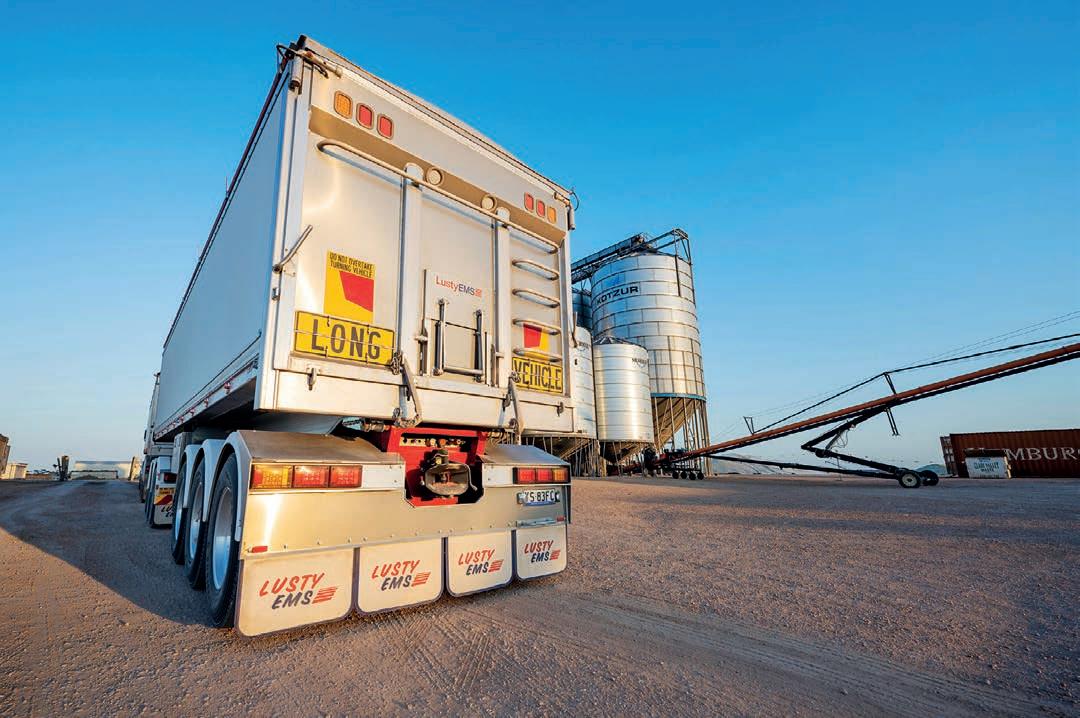







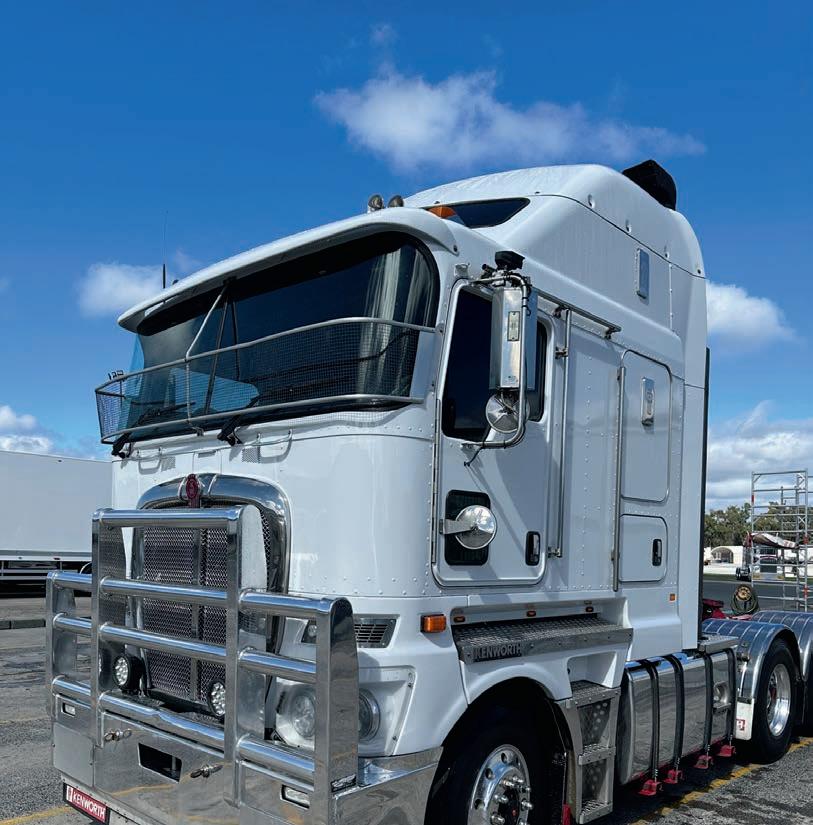

TO reduce diesel consumption and emissions, two Holcim triple road trains – used to haul up to 100 tonnes of payload in the Pilbara – have been converted to hydrogen hybrids.
Holcim Australia uses its road trains to transport quarry materials from the Turner River, Newman and Nickol Bay quarries in the Pilbara region to fixed and mobile concrete batch plants and other customers.
The triple road trains are pulled by Scania R620 V8 Euro 5 145-ton rated prime movers and travel distances that range anywhere between 10 to 600 kilometres.
As part of Holcim’s ambition to reduce its Scope 3 emissions, two of these Scanias have been retrofitted with a HYDI Hydrogen on Demand HY2500 vertical unit that produces hydrogen on demand for controlled delivery to internal combustion engines.
Since being put to work, these trucks have seen reductions in fuel consumption of up to 15 per cent, among other benefits.
As logistics manager for aggregates Western Australia at Holcim, Adam Evans, explained, “On top of the fuel consumption figures, excitingly, we’re seeing the additional emission reductions
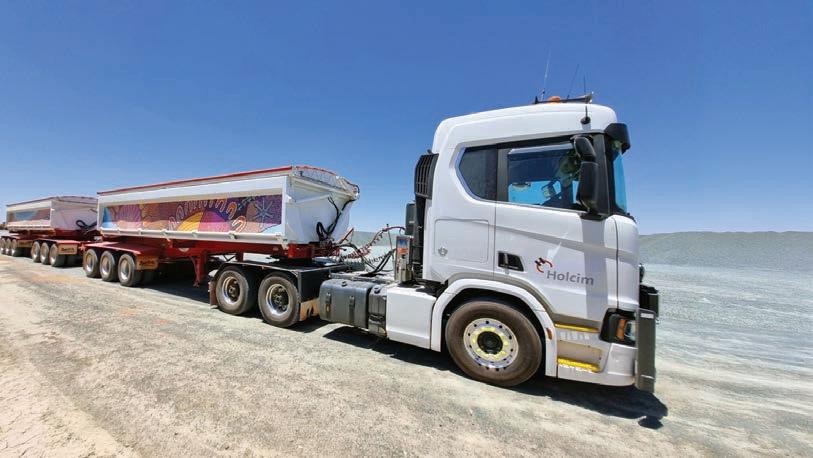
of 17 per cent less carbon dioxide (CO2), 80 per cent lower diesel particulate matter (DPM), 22 per cent lower nitrogen oxides (NOX), and 25 per cent lower carbon monoxide (CO).”
Robert Taylor, Scania Australia general manager – mining, added, “Holcim has seen fuel performance savings estimated at 15 per cent when hauling payloads up to 100-tonnes in three-trailer combinations. The Scania onboard management system confirms these figures. The reductions in fuel burn and reductions in emissions, is entirely in line with our aim at Scania to reduce emissions during the entire working lives of our products.”
Holcim plans to install
HYDI systems in two additional prime movers as well as some of its contractor fleet throughout Western Australia. “We are also exploring options to have HYDI units installed on other equipment including diesel generators and heavy mining equipment,” said Adam.
The HYDI unit produces hydrogen from distilled water using electrolysis via a proton exchange membrane. The unit draws a low electrical input from the host engine while in operation. Hydrogen supplements the diesel fuel to create a cleaner and more complete combustion process with the amount of hydrogen produced optimised for the capacity and application of the engine.
Developed in Australia over more than a decade, the leading-edge technology is said to deliver improved machinery performance by increasing torque, a reduction in fuel consumption, cleaner burn that reduces engine soot and
extends oil and filter service intervals, and lower harmful emissions – including DPM, CO2 and CO. The system provides the capability to transition heavy, diesel-powered machinery into cleaner, more cost-efficient equipment at a fraction of the cost of replacement.
“HYDI’s technology harnesses the benefits of hydrogen in an efficient, affordable and sophisticated way scaled to apply to multiple applications,” noted John Wilson, managing director of HYDI.
Scania has been a committed partner in the trial and are honouring the original repair and maintenance package provided with the vehicles.
“Scania stepped up to the project, made sure we had all
units, and are eager to help us extend the project even further,” Adam added.
The HYDI Hydrogen on Demand system can be simply, quickly and relatively inexpensively integrated into the existing diesel technology of Scania vehicles.
Ad Robert explained, “In Australia we have to say that realistically the general availability of reliable, affordable hydrogen as a fuel for heavy haulage is still some way off, particularly regarding use in remote mining operations. As a result, the HYDI Hydrogen on Demand solution does appear to be providing a real-world and affordable solution for our customers who want or need to make an immediate reduction in fuelprint emissions across their
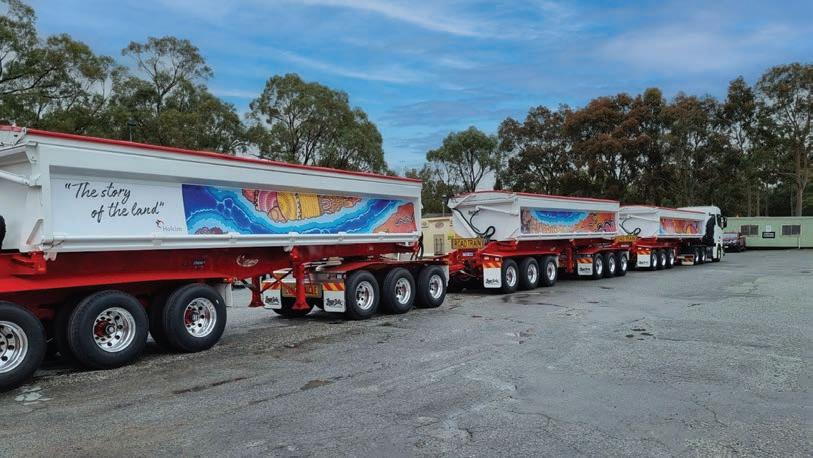



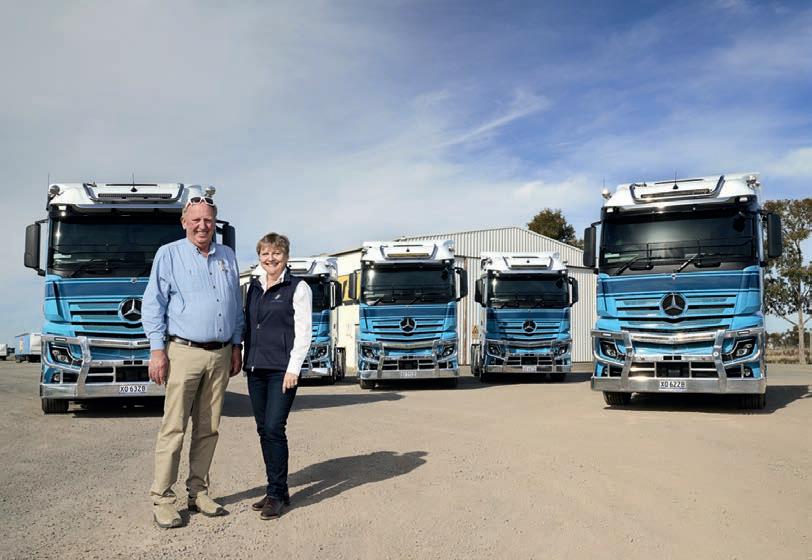
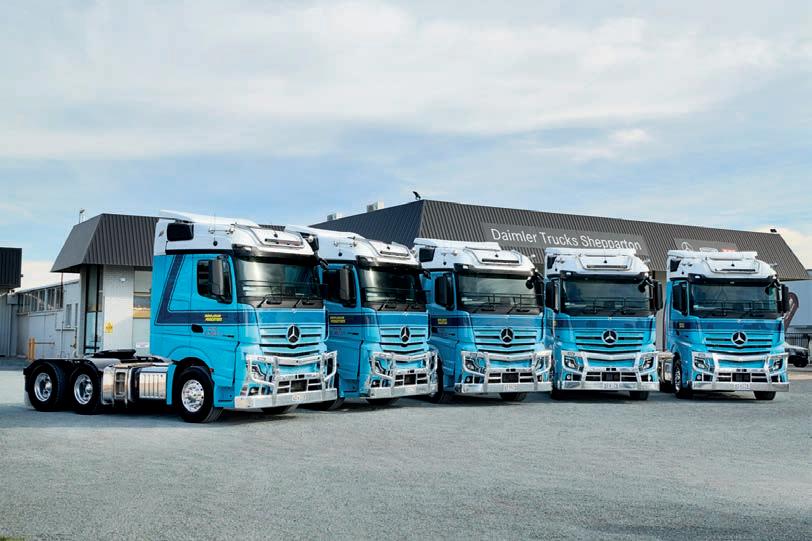






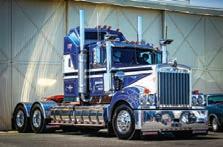



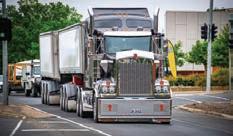

Cody Sheffield is a true character of a bloke I first met a number of months ago after shooting his truck through
He started driving trucks around October 2019 and is currently driving a 2020 model 4800 FXC Western Star with a 600hp X15 18-speed Roadranger, 4.56 ratio triple-rated truck.
Although driving trucks now Cody was a mechanic previously until an injury changed that.
His grandfather owned a


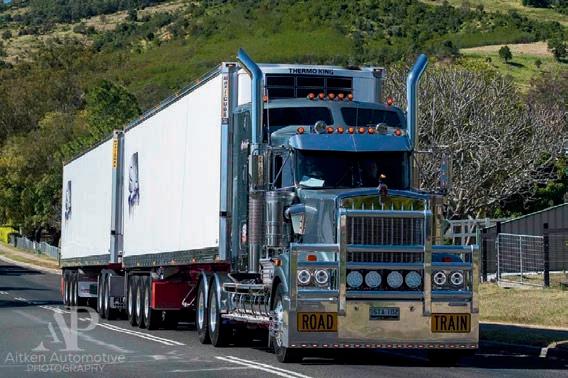

couple of trucks, his brother did Adelaide to Darwin every week back in the day, and also his grandma’s dad was a truck driver over in Papua New Guinea.
Just before Christmas in 2020, Cody unfortunately exploded his L4 and L5 discs in his back, and although he tried to go back to work as a mechanic, it dawned upon him that it just wasn’t physically feasible.
So, he followed in the family footsteps into the trucking industry and hasn’t looked back.
On his travels Cody loves a good feed and the Goondiwindi Ampol tops his list for their roast pork gravy rolls.
“They’re to die for” he says. He doesn’t often stop unless he has to, and they’re one reason he does.”
Cody sees himself as a newage trucker and would like to give some advice for other new generation truckers.
“On the road, you hear lots of stories, good and bad, but be selective as to what you take in,” he explains.
“Prove yourself, look, listen, and learn and treat your gear with respect. Keep it nice and clean and tidy in and out as much as possible.
“Yes, you get busy sometimes, but just put that little bit of effort in, especially if you’re interstate as that is your home.
Cody says you will learn something new every single day on the road without a doubt.
Away from the truck, he has a few things happening, but mostly, he’s head deep in work, and the truck is home.
If Cody isn’t driving or loading or unloading the truck, he’s usually washing it.
Cody has a dream to have his own business and truck one day, but in today’s world, he’s unsure of that next step.
Appreciate ya Cody!
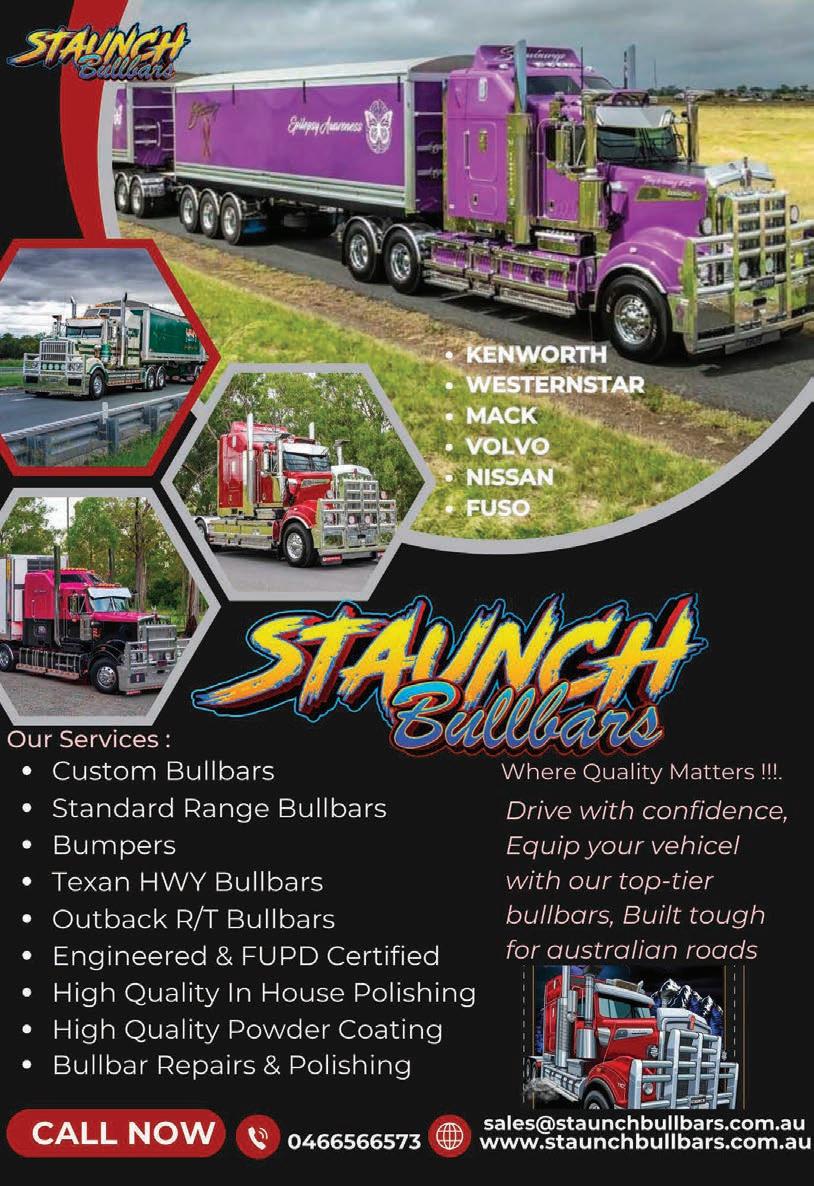

AS THE voice of the road transport industry, NatRoad provides frank and fearless advice to the Australian Government for the benefit of our members and the industry.
Recently, we responded to the Climate Change Authority’s (CCA) 2024 issues paper on reducing carbon emissions from heavy vehicles.
While we welcome action in this area, we believe the scope of the issues paper was too limited and missed an opportunity to reduce emissions and costs in trucking.
And due to the paper’s narrow focus, we believe it failed to acknowledge the complexity and diversity of solutions required to address the unique challenges faced by the trucking industry.
This shortfall helps to highlight the need for a diverse
range of technological solutions to help meet the nation’s emissions targets, while also supporting one of the nation’s most important industries.
While electric and hydrogen fuel cell technologies are important, they alone are not sufficient to achieve the desired reductions.
Renewable diesel, which is a drop in solution for existing vehicles, offers a practical alternative that can be implemented more rapidly for ve-
hicles with higher mass and range needs.
Additionally, improving operational efficiencies, such as optimising routes and enhancing driver training, can significantly reduce fuel consumption and emissions.
Our submission emphasises that road freight transport, predominantly operated by small businesses, requires a cost-effective transition strategy.
Many operators work on
tight margins and cannot afford to invest in expensive new technologies without substantial support.
Government policies should provide operators with various options, ensuring they can choose the best, and most practical solutions for their specific needs.
In line with our commitment to practical solutions, NatRoad has developed a new set of resources called ‘Get Fleet Fit’, designed to inform
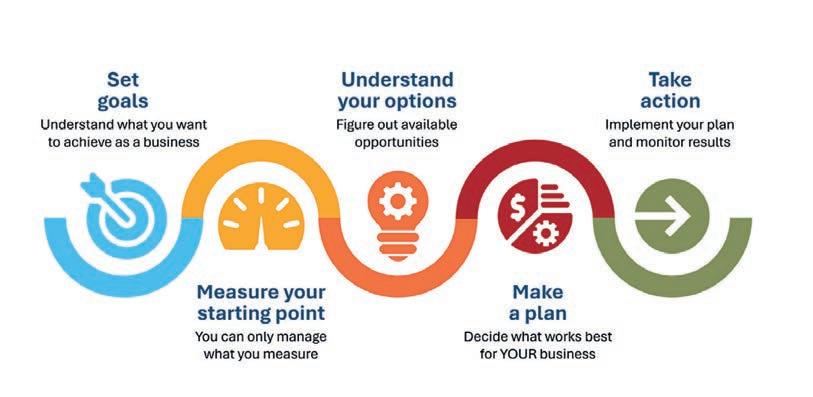
and guide Australian truck operators in how they can save money, while also contributing to the nation’s net zero emission targets.
This initiative includes a comprehensive five-step practical guide aimed at helping operators across the trucking industry increase fuel efficiency, reduce operational costs, and decrease carbon emissions.
The guide provides actionable steps operators can implement immediately, such as adopting more fuel-efficient driving practices, regularly maintaining vehicles to ensure optimal performance, and utilising technology to monitor and manage fuel consumption.
‘Get Fleet Fit’ represents the kind of diverse, practical approach necessary for the industry to effectively reduce emissions and transition towards a more sustainable future.
It underscores the importance of not just focusing on new technologies but also maximising the efficiency and sustainability of existing systems.
MANY OPERATORS WORK ON TIGHT MARGINS AND CANNOT AFFORD TO INVEST IN EXPENSIVE NEW TECHNOLOGIES WITHOUT SUBSTANTIAL SUPPORT.”
By providing clear, practical guidance, NatRoad aims to empower truck operators to make informed decisions that benefit both their businesses and the environment.
To explore these practical decarbonisation resources and learn more about NatRoad’s recommendations, visit natroad.com.au.
By taking advantage of these resources, truck operators can play a crucial role in helping Australia meet its emissions targets while also improving their bottom line.
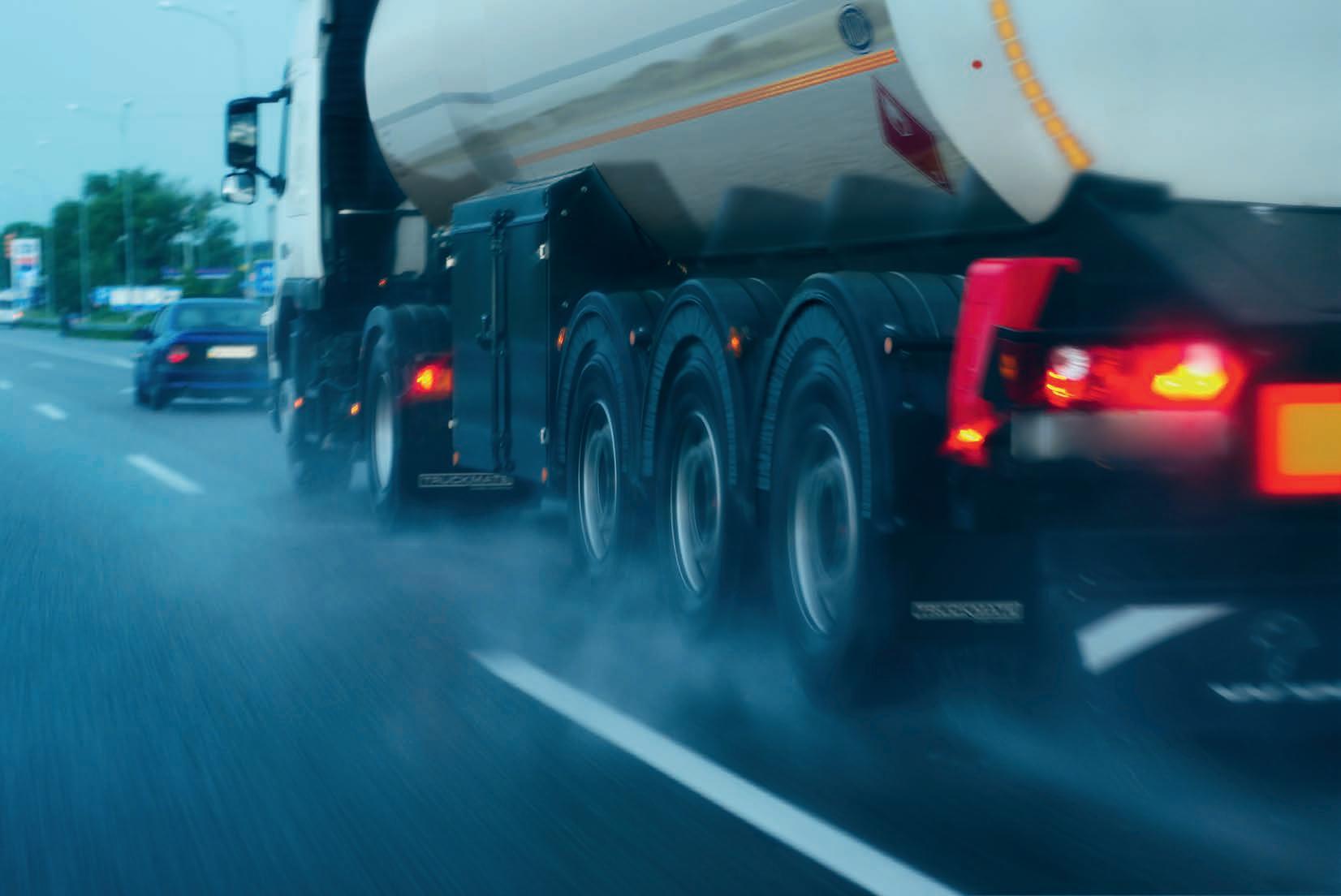



TARGETED measures, increased education and a renewed focus by industry has been crucial in seeing the number of disruptive overheight heavy vehicle incidents fall significantly across Sydney in the past 12 months.
Following an unacceptable number of incidents across the city resulting in serious congestion issues for commuters and putting safety at risk, the National Heavy Vehicle Regulator (NHVR) and Transport for New South Wales (TfNSW) were committed to taking swift and ef-

fective action.
This included TfNSW boosting the fine to $5500 for over-height trucks who ignore low clearance signage, with drivers also able to be issued with 12 demerit points.
TfNSW also has the power to suspend a driver’s licence for up to six months, and can issue a registration suspension for trucks for up to six months.
At the NHVR, we boosted education messages to industry through dedicated advertising on social media, radio and online, and developed a brochure translated into three different languages to further inform drivers on what steps they can take to ensure incidents are avoided.
Industry too have played an important role in the reduction, and we thank them for their ongoing support in training drivers and ensuring
their routes are appropriately managed and planned.
It’s exceptionally positive to see the number of incidents dramatically improve since the measures were introduced, with incidents involving over-height trucks across New South Wales falling to the lowest level since 2017.
According to TfNSW, from January to April this year Sydney has seen 19 fewer incidents than in the same period in 2023 – a reduction of almo st half, from 39 to 20 incidents.
In the same period TfNSW issued eight over-height trucks with registration suspensions, and seven with licence suspensions.
However, being complacent on this important issue is not an option – not when every incident has the potential to cause traffic chaos, bring the city to a standstill, damage in-
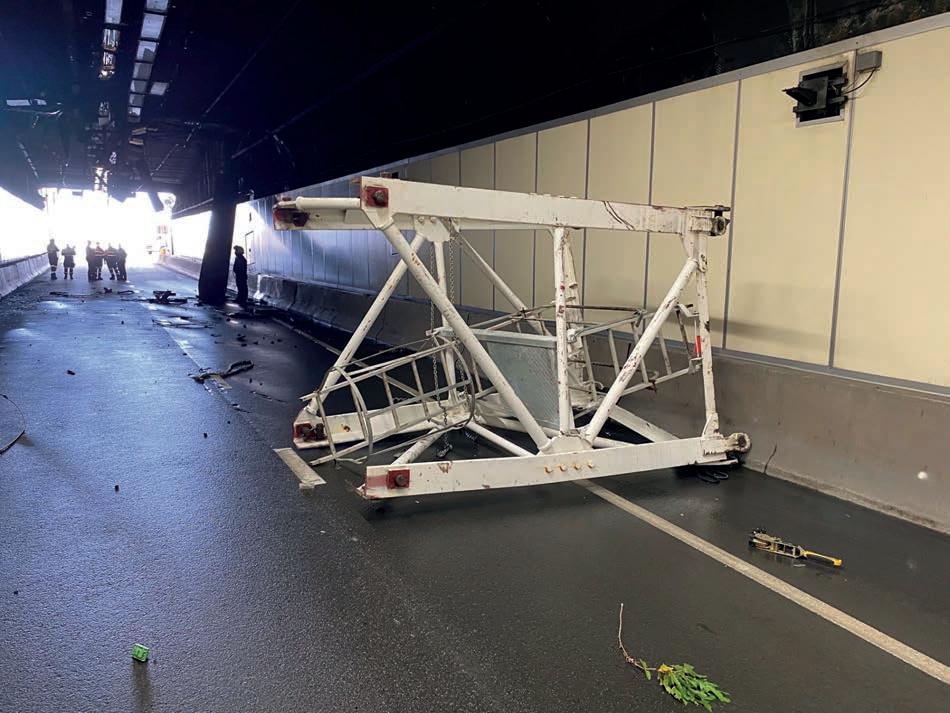
vigilant in improving our strategies in communicating how to avoid such incidents.
It is important to remember that New South Wales has more tunnels and bridges with low clearances of less than 4.6 metres than any other state in Australia.
We understand that driving
Operators should ensure heavy vehicle loads are being measured before they depart –even if it is believed the height is already known.
Thoroughly planning routes to ensure vehicles are only travelling on roads, under bridges and through tunnels which causes major congestion, damages costly infrastructure or – worst of all –results in any injuries.
milestone with the addition of the Waste & Recycling Business of the Year Award, reflecting the growing importance of sustainability and the circular economy. With this new category, we now have eight awards that recognize the diverse contributions to the industry:
THE Victorian Transport Association (VTA) is thrilled to announce that nominations are now open for the 34th Australian Freight Industry Awards (AFIA), proudly sponsored by TWUSUPER and Viva Energy Australia. This prestigious event celebrates the innovation, dedication, and excellence that define the Australian freight industry, and we invite all businesses to participate by submitting their nominations.
This year marks a significant
• Women’s Leadership Award – Sponsored by Viva Energy Australia
• Investment in People Award – Sponsored by Logical Staffing Solutions
• Best Practice Safety Award – Sponsored by Gallaghers
• Application of Technology Award – Sponsored by Transport Certification Australia
• Green Star Award – Promoting Sustainability in the Workplace – Sponsored by National Transport Insurance
• Emerging Leader Award
– Sponsored by Daimler Truck & Bus
• Waste & Recycling Business of the Year Award
We also extend our gratitude to CMV Truck & Bus for their continued sponsorship of the Personality of the Year Award.
The AFIA is more than just an awards ceremony. It’s a platform that highlights the outstanding achievements within our industry.
Each nomination is a testament to the hard work, innovative thinking, and commitment to excellence that keep our nation’s freight and logistics sector thriving. By nominating your business or an individual, you contribute to a culture of recognition and encouragement that benefits the entire industry.
Nominations are an opportunity to showcase your organization’s commitment to best
practices, inspire your peers, and celebrate the successes that make a real difference.
The growing number of entries each year reflects the industry’s dedication to continuous improvement and innovation. This recognition not only honours the recipients but also sets benchmarks for others to aspire to.
Submitting a nomination is straightforward and accessible to all sectors of the freight, logistics, and transport industry.
Detailed criteria for each award category can be found on the AFIA website at www. afiawards.com.au. We encourage you to review these criteria carefully and craft a compelling submission that highlights the unique strengths and achievements of your business or nominee.
Nominations can be submitted online until the deadline of Monday, 12 August. Don’t
miss this chance to highlight the exceptional work being done within your organization and across the industry.
The AFIA gala presentation night is the highlight of the industry calendar, offering an evening of celebration, networking, and recognition.
Each year, the event grows in size and spectacle, reflecting the vibrant and dynamic nature of our industry. The 2024 gala promises to be no exception, bringing together the best and brightest for a night of deserved recognition.
The AFIAs are all about the men and women of the transport industry and the phenomenal work they do to keep Australia moving. I look forward to celebrating their achievements.
In these challenging times, it is more crucial than ever to acknowledge and celebrate the resilience and ingenui-
Remaining vigilant about the height of vehicles and where they can and can’t travel should be a top priority for everyone.
ty of the transport industry. The AFIA provides a unique opportunity to recognize the outstanding contributions that drive our sector forward. By participating, you help to foster a culture of excellence and inspire ongoing innovation and improvement. We urge all businesses within the transport industry to take part in this significant event. Nominate your business or an exceptional individual to showcase the talent and dedication that define our industry. Together, we can celebrate the achievements that keep Australia moving and continue to set new standards of excellence.
Let’s make the 34th Australian Freight Industry Awards a night to remember. Join us in honouring the best in the business and driving our industry towards an even brighter future.






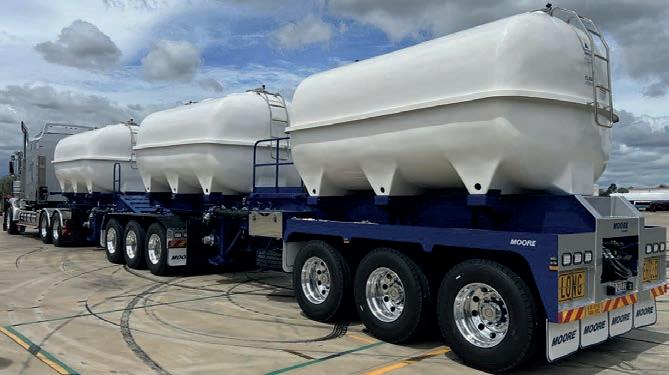

TAFE Queensland will receive $3 million in Australian government funding to further enhance its electric vehicle (EV) training.
From this investment, TAFE Queensland estimates that over 5000 trade students and their prospective employers across Queensland will benefit.
The grant will be used to install cutting-edge Battery Electric Vehicle (BEV) training simulators, hydrogen fuel cell vehicles, used BEVs, 3D scanners and virtual reality headsets at TAFE Queensland’s Acacia Ridge (Brisbane South) and Bohle (Townsville) campuses.
The BEV Training Simulator project will support high quality hands-on learning for students, and training and upskilling to support EV maintenance and repair.
This comes as TAFE Queensland welcomed the state’s first EV apprentice supervisors from some of Queensland’s largest EV dealerships just last month.
The $3 million EV equipment upgrade funding comes from the Australian government’s $50 million TAFE Technology Fund, which is being used to upgrade and expand TAFE facilities across the country, including laboratories, workshops, equipment and simulated learning environments.
“Skilling more Australians to be able to take advantage
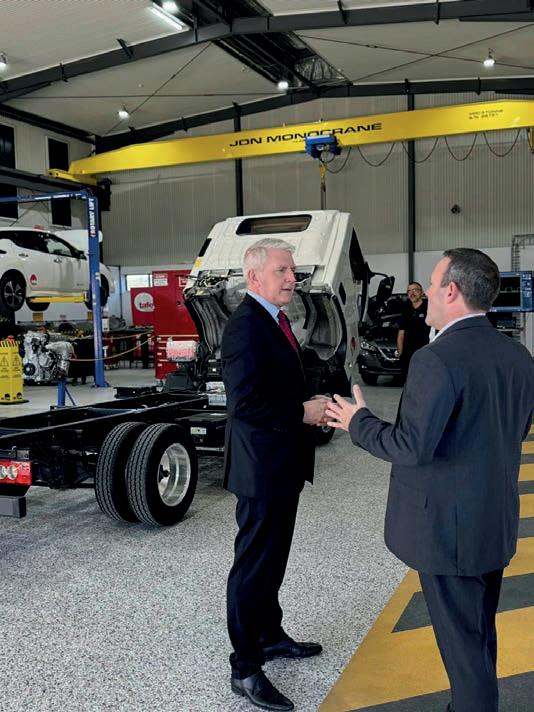
of emerging technologies is critical to a cleaner and more sustainable future,” said Minister for Skills and Training, Brendan O’Connor.
“Our $50 million TAFE Technology Fund helps ensure TAFEs are equipped to deliver training to the standards expected by students and industry.”
This is in addition to the Australia Government’s FeeFree TAFE initiative, which removed financial barriers to enrolment for over 355,000 Australians in 2023.
Nearly 70,000 Queenslanders enrolled in free TAFE last year, including almost 27,000 in regional and remote areas of the state.
A further $502.9 million will be invested for an additional 320,000 Fee-Free TAFE and VET places nationwide over the next three years.
According to the Minister for Training and Skills Development, Lance McCallum, these initiatives are helping to ensure Queenslanders can access the high-paying, future-proof jobs.
REMONDIS Australia and TAFE NSW have taken circular economy recycling to a new level by arranging the supply of a used waste collection truck and engine parts for heavy vehicle mechanic students.
The partnership has seen REMONDIS deliver a 2008 Volvo FM380 ‘Hooklift’ truck to TAFE NSW Kurri Kurri, along with engines and parts from other used trucks including transmissions and hydraulic gear.
The truck has been a waste collection workhorse in Hunter industrial settings, clocking 34,000 operational hours and more than one million kilometres.
The idea of supplying the truck and engine parts to TAFE NSW came from REMONDIS’ Hunter-based maintenance manager Peter Murray.
“I recently enrolled two REMONDIS apprentices at TAFE NSW and took an opportunity to visit the Kurri Kurri campus,” Peter said.
“There was a light bulb moment that the waste truck we were about to send for scrapping could be given a second life at TAFE NSW, along with engines and parts from other trucks at their use-by date.
“The truck and parts incorporate modern European technology, enabling mechanical students to broaden their skills and knowledge as relevant to the workforce.
“We’re big on what’s called the ‘circular economy’ in the waste management industry, that is, looking to find different lives for anything that might end up as landfill. A waste collection truck and parts being recycled for education and training purposes is a shining example.”
TAFE NSW heavy vehicle head teacher Gavin Shields said many mechanic students will benefit from the REMONDIS partnership
“The idea from REMONDIS sounded good from the outset and cooperation and collaboration with the company saw the opportunity progress,” Gavin said.
“We envisage we’ll get many years use out of the truck and parts, providing students with the opportunity to work on a modern machine that is being used in the industry.
REMONDIS fourth year heavy vehicle mechanic apprentice Dylan Evans said he and many fellow TAFE NSW students are looking forward to working on the new truck and parts.
“A 16-year-old truck might sound old, but a lot of the components are modern and relevant,” Dylan said.
“Having hands-on experience with such machinery extends our skills and employability.”

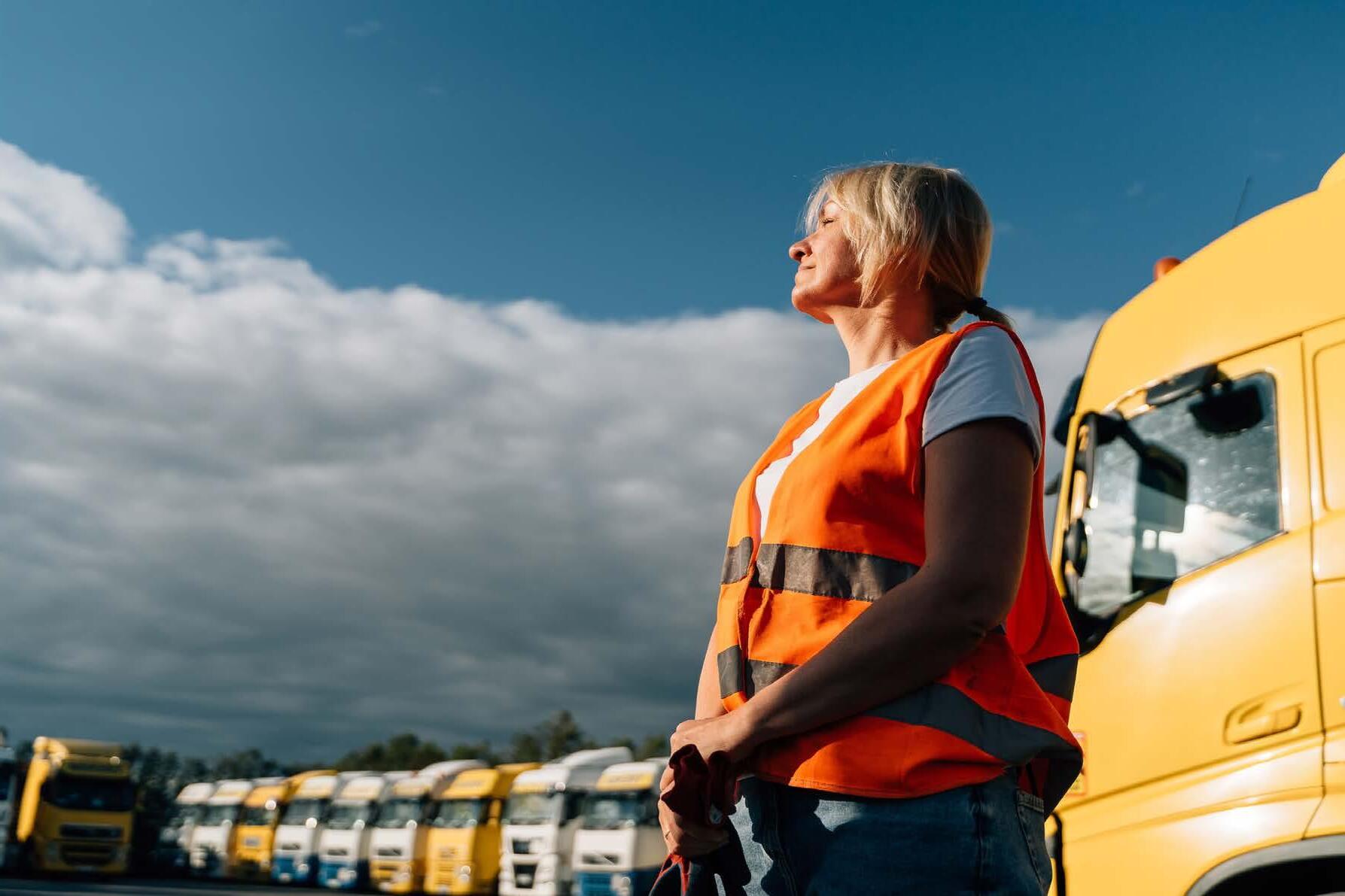
BY KAYLA WALSH
THE world of real estate
might seem like a far cry from trucking – but Liz Armstrong loves both equally.
Liz juggles driving for several different transport companies with selling properties in her local town of Millmerran, Queensland.
Though she admits life can get pretty hectic, she couldn’t bring herself to quit either job.
“When I need to, I work seven days a week,” she said.
“Life’s too short not to have
a go at everything you are passionate about.
“I love trucking because there’s so much freedom. As long as I do my job, everyone I work for leaves me alone.
“But I also love real estate because I’m helping people achieve their dream of buying a home.”
Liz, 44, developed an interest in trucks thanks to her dad, a boilermaker and part-time truckie who would sometimes take her on the road with him when she was growing up.
She started out driving gar-

bage trucks for five years before getting her MC licence in 2015 and working her way up to bigger rigs.
She now drives part-time alongside running her own real estate business, Millmerran Real Estate.
“Sometimes I’ll do interstate for a mate, driving fridge vans, or I drive a triple for DTS Haulage,” she said.
“I make it work because Millmerran is only a small town, and sometimes I’ll have a quiet few days in real estate.
“But it all depends on how many listings I have – this week is crazy!”
She will sometimes have to answer calls from real estate clients while in the truck.
“I’ve never hidden what I do,” she said. “I tell them I’m in the truck and they are fine with that.
“When you run your own business, you’re always on.”
Her experience in road transport has taught her some valu-
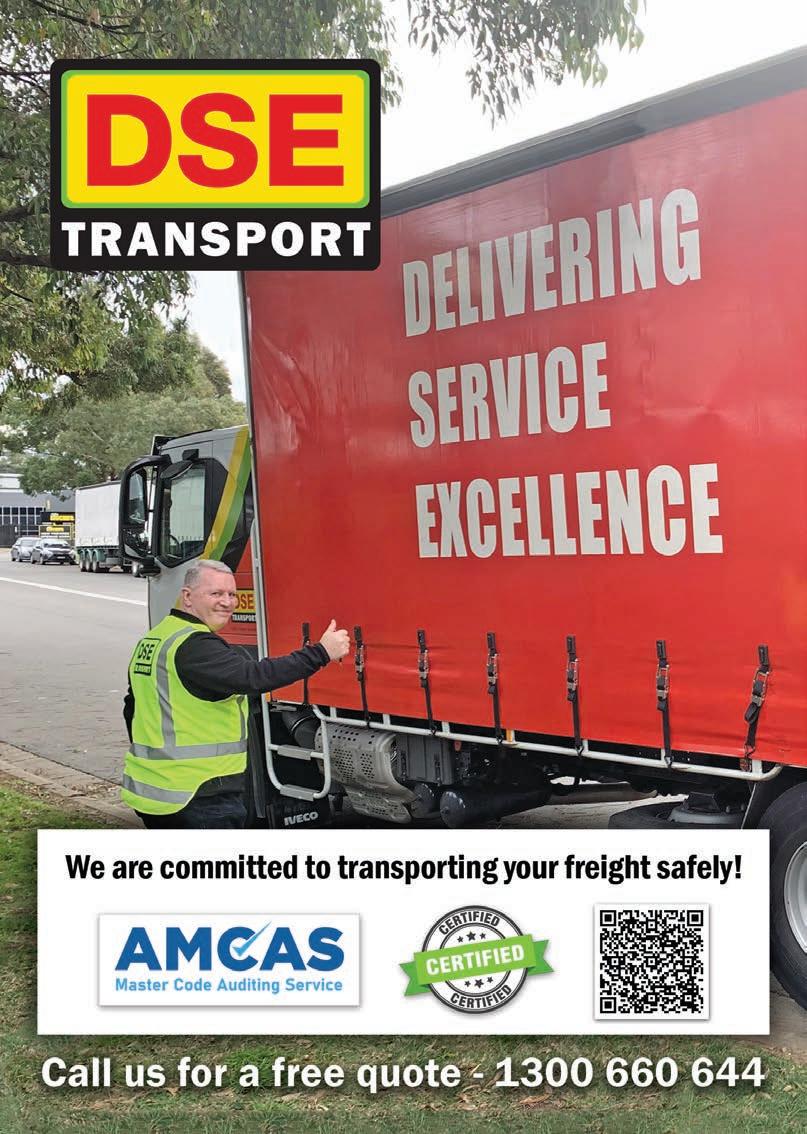
able lessons, which she has applied to her other career.
“I think the main thing I’ve learned is, not putting up with shit,” she said.
“In the transport industry some people can just be rude, and I don’t want to deal with that.
“Now I don’t put up with rude people in the real estate business either, and I’m fussier about what listings I take on.”
When asked how it feels to swap her high heels for work boots, she laughed.
“I used to work for LJ Hooker on the Gold Coast and I would wear dresses and all that, but I’m out bush now,” she said.
“I’m selling properties that are 20 acres plus so I’m not going to walk around those in a pair of heels.
“But I’m never daggy, even in the truck.”
She shared her advice for anyone getting started as a truckie.
“It’s become second nature


Easter Group, located in Wacol, provides time sensitive road transporting solutions to many companies throughout Queensland, New South Wales, South Australia and Victoria.


We are a family owned business, operating since 1976. We currently have the following positions available: OPERATIONS ALLOCATORS (Brisbane based only)
You will be required to work on a rotating roster including Days-Nights-Weekends Previous Operations experience preferred.
2-UP
(Brisbane, Sydney, Melbourne and Adelaide Based)
Come and work for us as we are committed to:
• Training and further education • Your safety
• Maintaining an impressive Fleet
On offer are permanent full time and roster positions including paid leave entitlements and public holidays. Drivers will need to be available to be scheduled for work falling across the 7 days of the week.
The successful Applicant will:
• Hold a current MC licence (minimum two years) • Have knowledge of the HVNL and Load Restraint • Be professional • Be reliable
To apply for the Operations/Driver positions please contact Operations Manager or by emailing your resume to
(Brisbane based only)
To apply for Mechanic positions please forward your resume to Workshop Manager via email to employment@kseaster.com.au

• High carbon steel and heat treated splines for longer life
• Deburred, oiled and marked for easy identification and replacement
• Meritor approved with a one year unlimited km warranty
